Quick filters:
Pteraspis Stock Photos and Images
 Pteraspis is an extinct genus of jawless ocean fish that lived in the Devonian period. Stock Photohttps://www.alamy.com/image-license-details/?v=1https://www.alamy.com/pteraspis-is-an-extinct-genus-of-jawless-ocean-fish-that-lived-in-image67733320.html
Pteraspis is an extinct genus of jawless ocean fish that lived in the Devonian period. Stock Photohttps://www.alamy.com/image-license-details/?v=1https://www.alamy.com/pteraspis-is-an-extinct-genus-of-jawless-ocean-fish-that-lived-in-image67733320.htmlRFDX5EF4–Pteraspis is an extinct genus of jawless ocean fish that lived in the Devonian period.
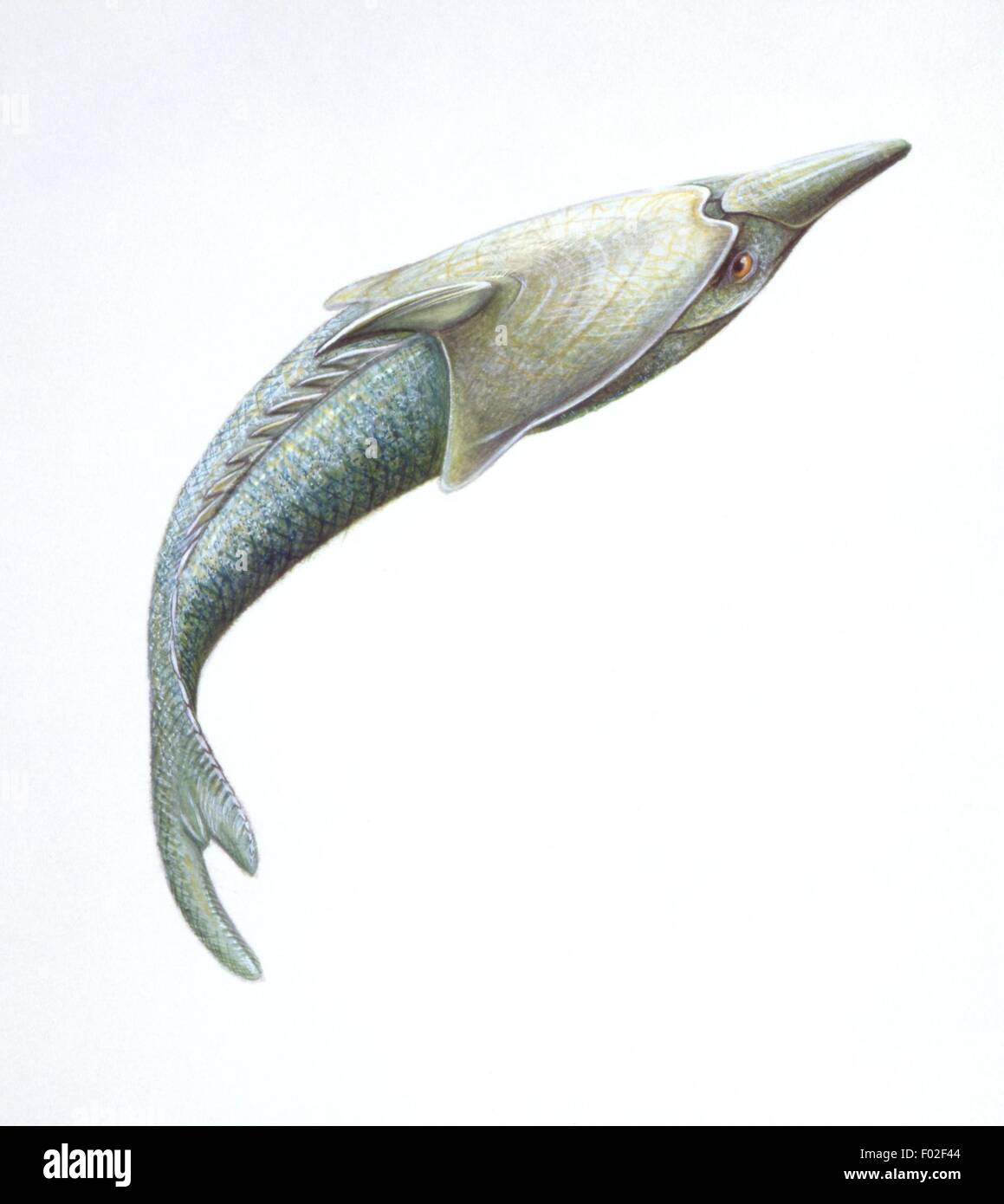 Palaeozoology - Devonian period - Ostracoderms (primitive fishes) - Pteraspis - Art work by Steve Roberts Stock Photohttps://www.alamy.com/image-license-details/?v=1https://www.alamy.com/stock-photo-palaeozoology-devonian-period-ostracoderms-primitive-fishes-pteraspis-86107620.html
Palaeozoology - Devonian period - Ostracoderms (primitive fishes) - Pteraspis - Art work by Steve Roberts Stock Photohttps://www.alamy.com/image-license-details/?v=1https://www.alamy.com/stock-photo-palaeozoology-devonian-period-ostracoderms-primitive-fishes-pteraspis-86107620.htmlRMF02F44–Palaeozoology - Devonian period - Ostracoderms (primitive fishes) - Pteraspis - Art work by Steve Roberts
 Pteraspis rostrata1 Stock Photohttps://www.alamy.com/image-license-details/?v=1https://www.alamy.com/pteraspis-rostrata1-image62358721.html
Pteraspis rostrata1 Stock Photohttps://www.alamy.com/image-license-details/?v=1https://www.alamy.com/pteraspis-rostrata1-image62358721.htmlRMDHCK55–Pteraspis rostrata1
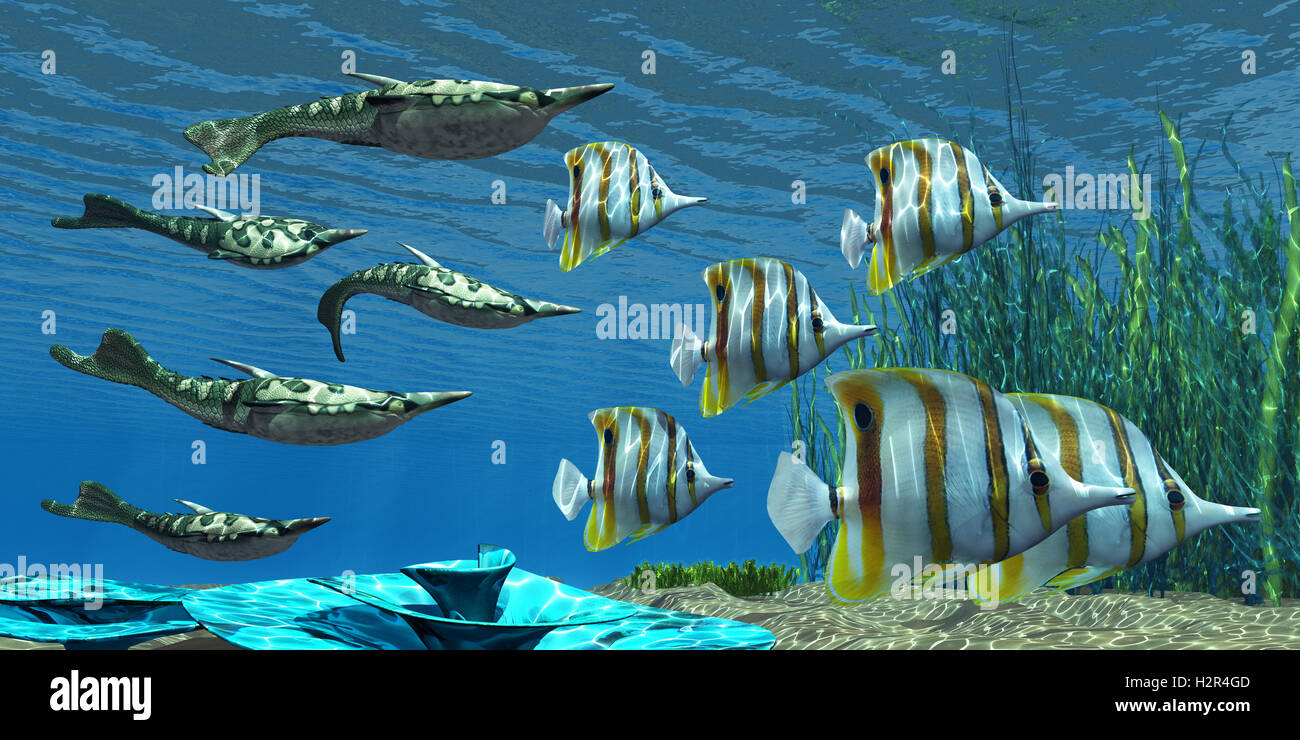 Devonian Pteraspis Fish Stock Photohttps://www.alamy.com/image-license-details/?v=1https://www.alamy.com/stock-photo-devonian-pteraspis-fish-122210381.html
Devonian Pteraspis Fish Stock Photohttps://www.alamy.com/image-license-details/?v=1https://www.alamy.com/stock-photo-devonian-pteraspis-fish-122210381.htmlRFH2R4GD–Devonian Pteraspis Fish
 Pteraspis is an extinct genus of jawless fish that lived in the Devonian Period. Stock Photohttps://www.alamy.com/image-license-details/?v=1https://www.alamy.com/pteraspis-is-an-extinct-genus-of-jawless-fish-that-lived-in-the-devonian-image60762022.html
Pteraspis is an extinct genus of jawless fish that lived in the Devonian Period. Stock Photohttps://www.alamy.com/image-license-details/?v=1https://www.alamy.com/pteraspis-is-an-extinct-genus-of-jawless-fish-that-lived-in-the-devonian-image60762022.htmlRFDERXG6–Pteraspis is an extinct genus of jawless fish that lived in the Devonian Period.
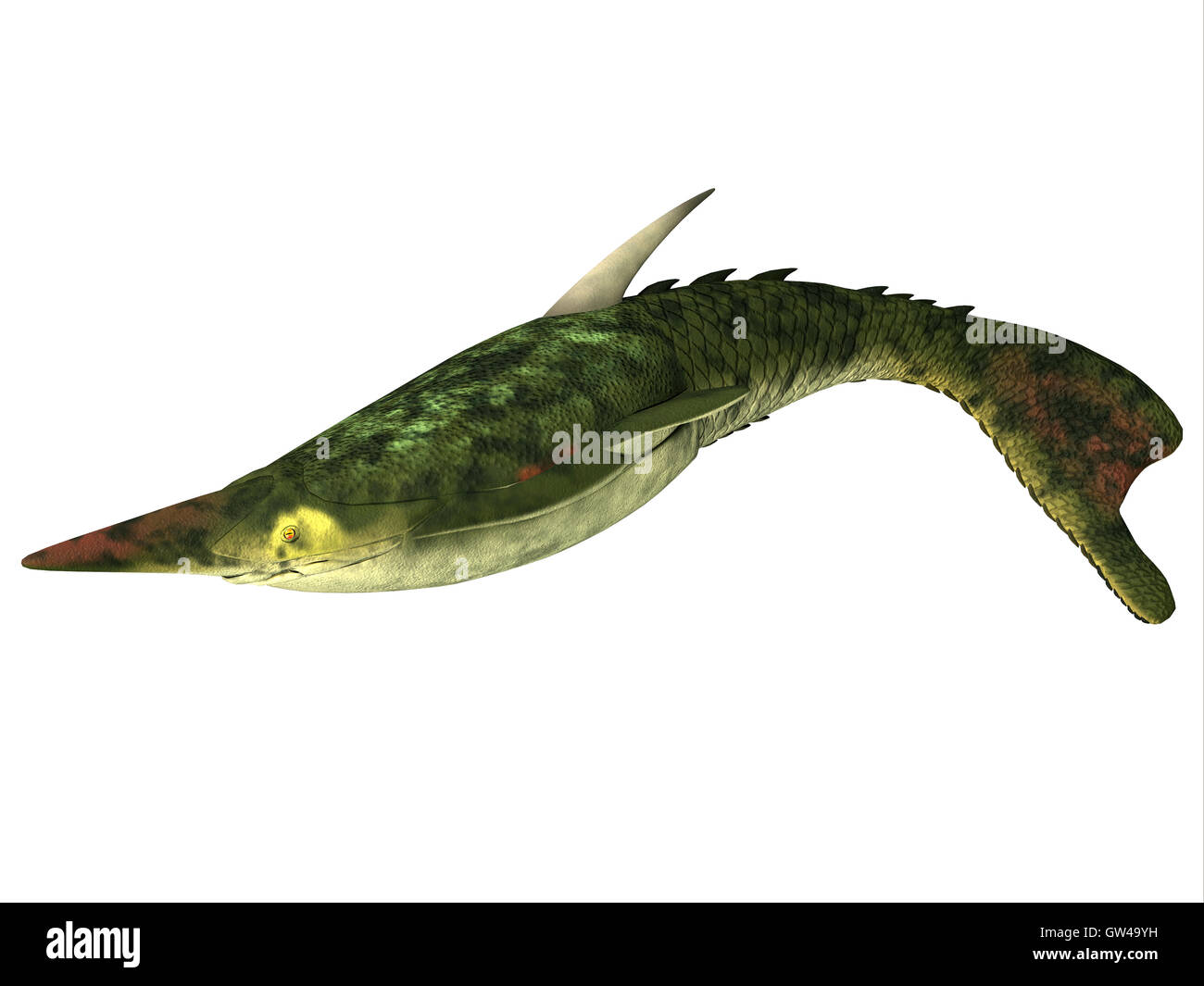 Pteraspis Fish on White Stock Photohttps://www.alamy.com/image-license-details/?v=1https://www.alamy.com/stock-photo-pteraspis-fish-on-white-118724245.html
Pteraspis Fish on White Stock Photohttps://www.alamy.com/image-license-details/?v=1https://www.alamy.com/stock-photo-pteraspis-fish-on-white-118724245.htmlRFGW49YH–Pteraspis Fish on White
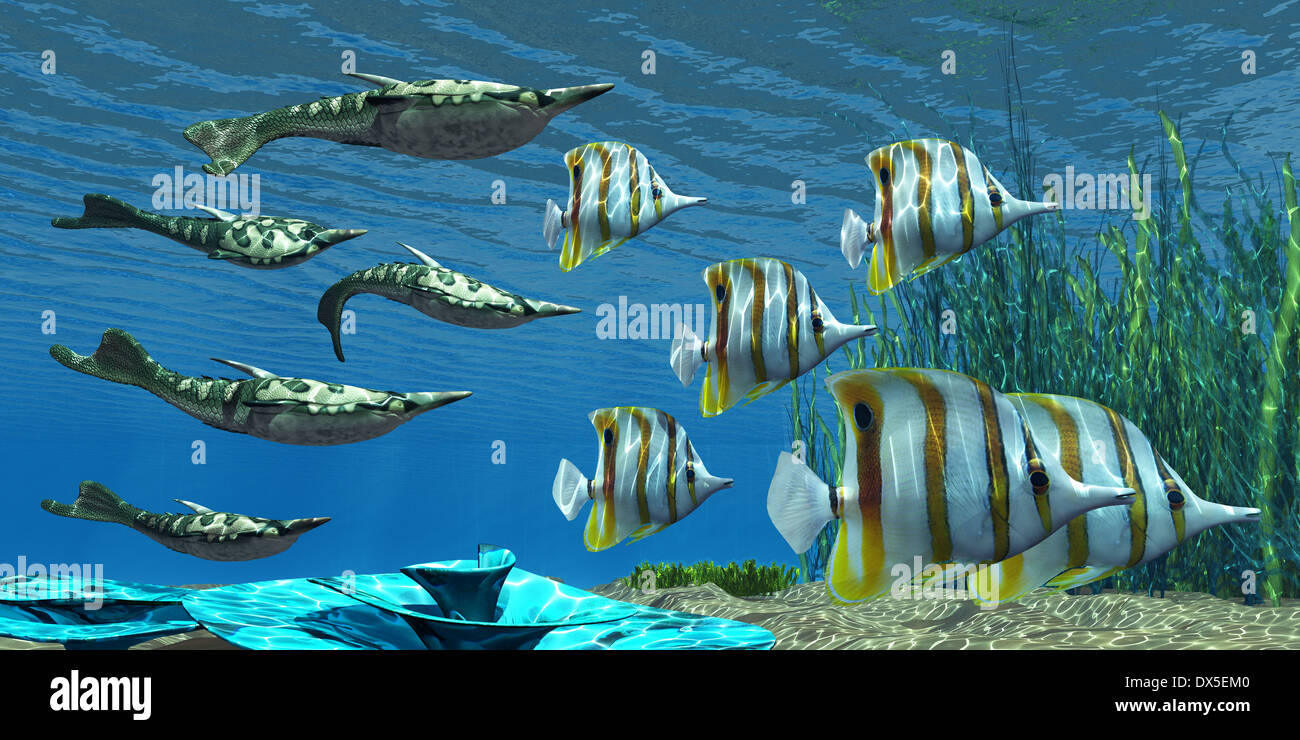 Pteraspis is an extinct genus of jawless ocean fish that lived in the Devonian period. Stock Photohttps://www.alamy.com/image-license-details/?v=1https://www.alamy.com/pteraspis-is-an-extinct-genus-of-jawless-ocean-fish-that-lived-in-image67733456.html
Pteraspis is an extinct genus of jawless ocean fish that lived in the Devonian period. Stock Photohttps://www.alamy.com/image-license-details/?v=1https://www.alamy.com/pteraspis-is-an-extinct-genus-of-jawless-ocean-fish-that-lived-in-image67733456.htmlRFDX5EM0–Pteraspis is an extinct genus of jawless ocean fish that lived in the Devonian period.
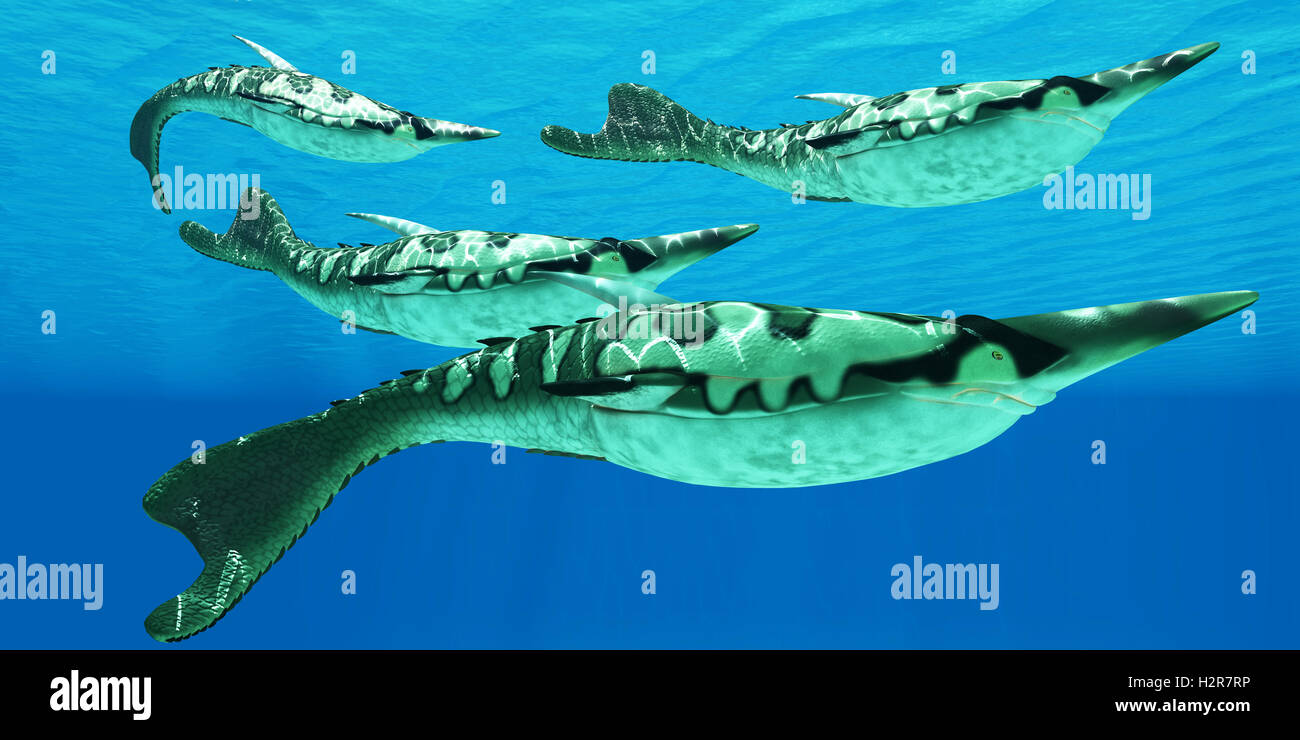 Devonian Pteraspis Fish Group Stock Photohttps://www.alamy.com/image-license-details/?v=1https://www.alamy.com/stock-photo-devonian-pteraspis-fish-group-122212938.html
Devonian Pteraspis Fish Group Stock Photohttps://www.alamy.com/image-license-details/?v=1https://www.alamy.com/stock-photo-devonian-pteraspis-fish-group-122212938.htmlRFH2R7RP–Devonian Pteraspis Fish Group
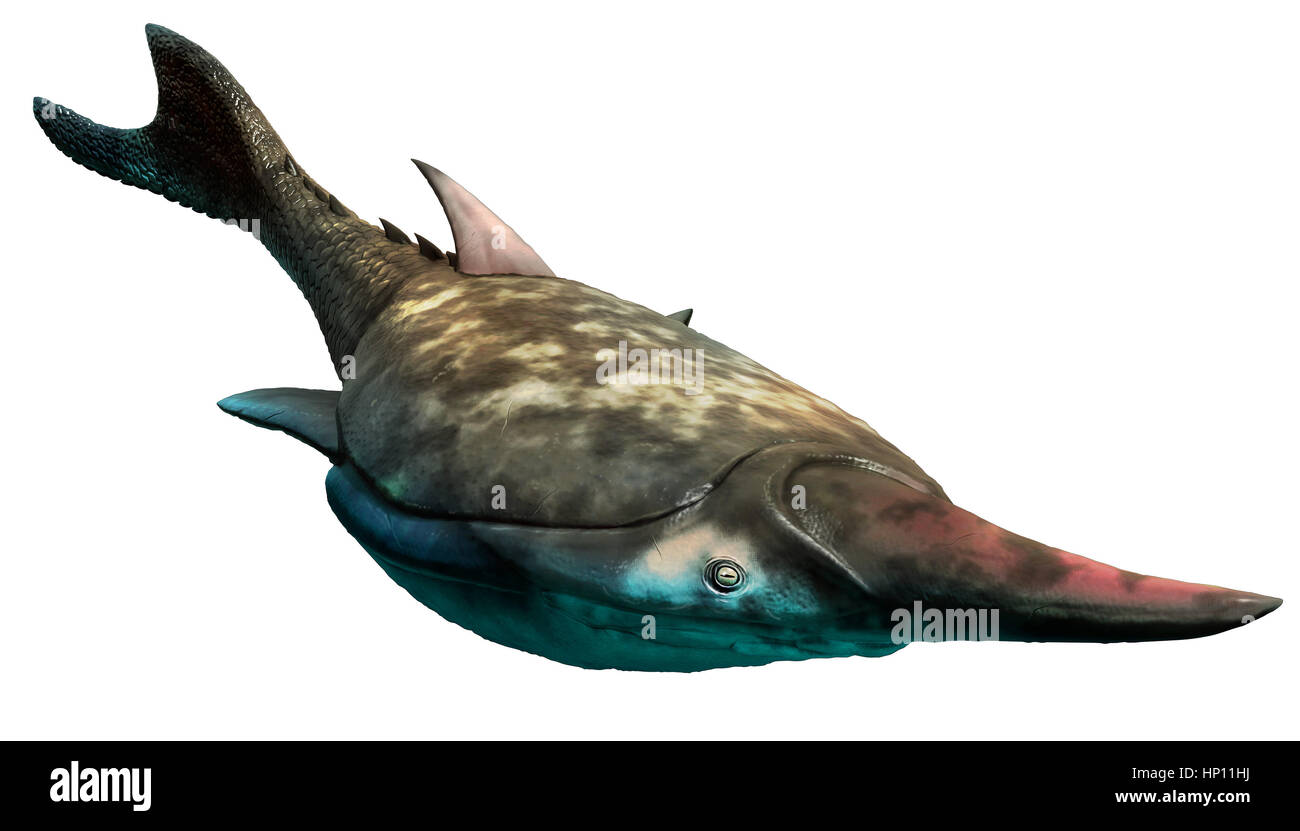 Pteraspis Stock Photohttps://www.alamy.com/image-license-details/?v=1https://www.alamy.com/stock-photo-pteraspis-134018238.html
Pteraspis Stock Photohttps://www.alamy.com/image-license-details/?v=1https://www.alamy.com/stock-photo-pteraspis-134018238.htmlRFHP11HJ–Pteraspis
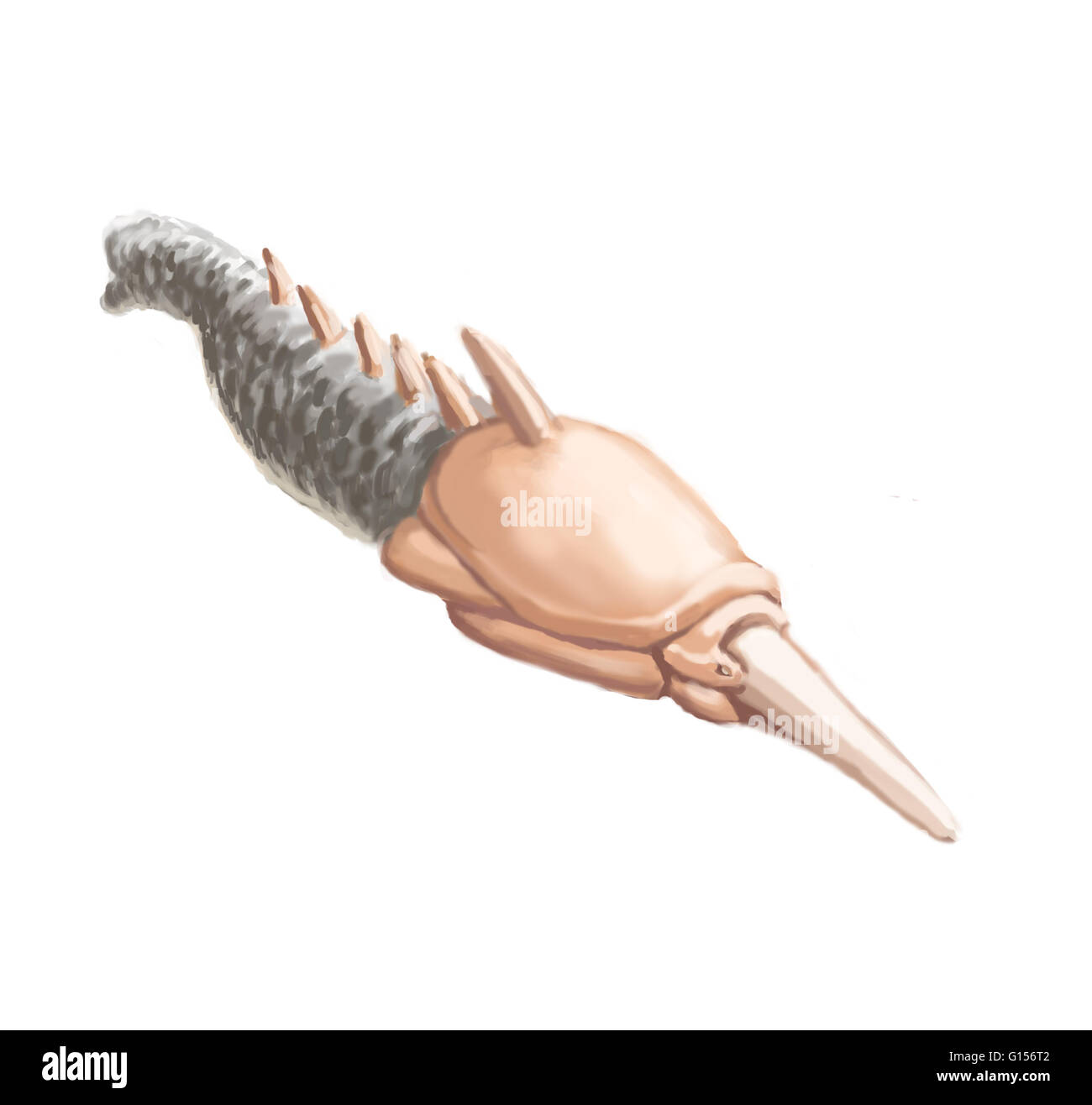 Prehistoric marine life. Ostracoderms ('shell-skinned') were the armored jawless fishes such as pteraspis. Stock Photohttps://www.alamy.com/image-license-details/?v=1https://www.alamy.com/stock-photo-prehistoric-marine-life-ostracoderms-shell-skinned-were-the-armored-103992002.html
Prehistoric marine life. Ostracoderms ('shell-skinned') were the armored jawless fishes such as pteraspis. Stock Photohttps://www.alamy.com/image-license-details/?v=1https://www.alamy.com/stock-photo-prehistoric-marine-life-ostracoderms-shell-skinned-were-the-armored-103992002.htmlRMG156T2–Prehistoric marine life. Ostracoderms ('shell-skinned') were the armored jawless fishes such as pteraspis.
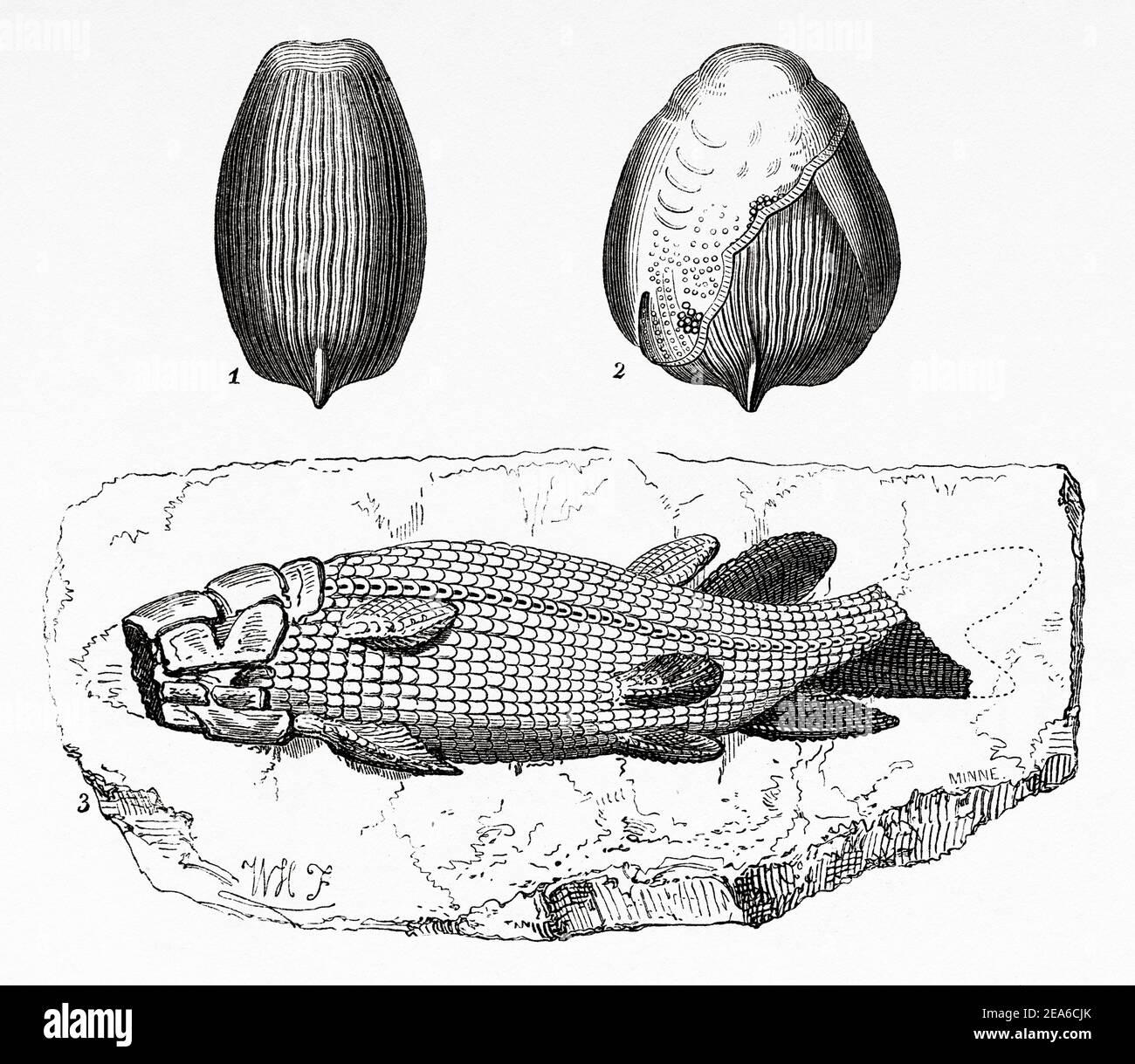 Old Nineteenth century illustration. 1 Pteraspis truncatus. 2 Pteraspis banksii. 3 Ganoid scales. Old 19th century engraved illustration from El Mundo Ilustrado 1879 Stock Photohttps://www.alamy.com/image-license-details/?v=1https://www.alamy.com/old-nineteenth-century-illustration-1-pteraspis-truncatus-2-pteraspis-banksii-3-ganoid-scales-old-19th-century-engraved-illustration-from-el-mundo-ilustrado-1879-image402126667.html
Old Nineteenth century illustration. 1 Pteraspis truncatus. 2 Pteraspis banksii. 3 Ganoid scales. Old 19th century engraved illustration from El Mundo Ilustrado 1879 Stock Photohttps://www.alamy.com/image-license-details/?v=1https://www.alamy.com/old-nineteenth-century-illustration-1-pteraspis-truncatus-2-pteraspis-banksii-3-ganoid-scales-old-19th-century-engraved-illustration-from-el-mundo-ilustrado-1879-image402126667.htmlRM2EA6CJK–Old Nineteenth century illustration. 1 Pteraspis truncatus. 2 Pteraspis banksii. 3 Ganoid scales. Old 19th century engraved illustration from El Mundo Ilustrado 1879
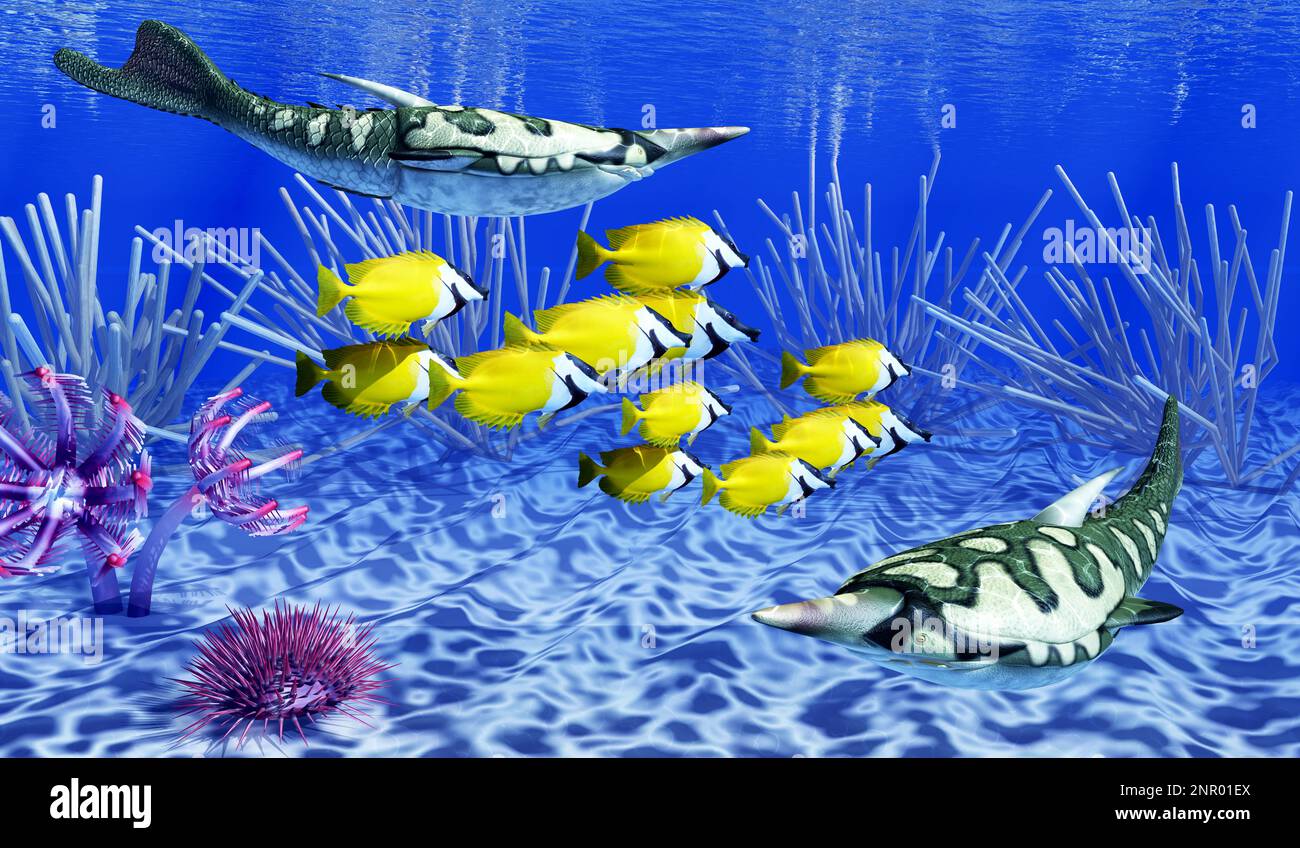 Pteraspis was a primitive jawless fish that lived in the oceans of the Devonian Period. Stock Photohttps://www.alamy.com/image-license-details/?v=1https://www.alamy.com/pteraspis-was-a-primitive-jawless-fish-that-lived-in-the-oceans-of-the-devonian-period-image530449330.html
Pteraspis was a primitive jawless fish that lived in the oceans of the Devonian Period. Stock Photohttps://www.alamy.com/image-license-details/?v=1https://www.alamy.com/pteraspis-was-a-primitive-jawless-fish-that-lived-in-the-oceans-of-the-devonian-period-image530449330.htmlRF2NR01EX–Pteraspis was a primitive jawless fish that lived in the oceans of the Devonian Period.
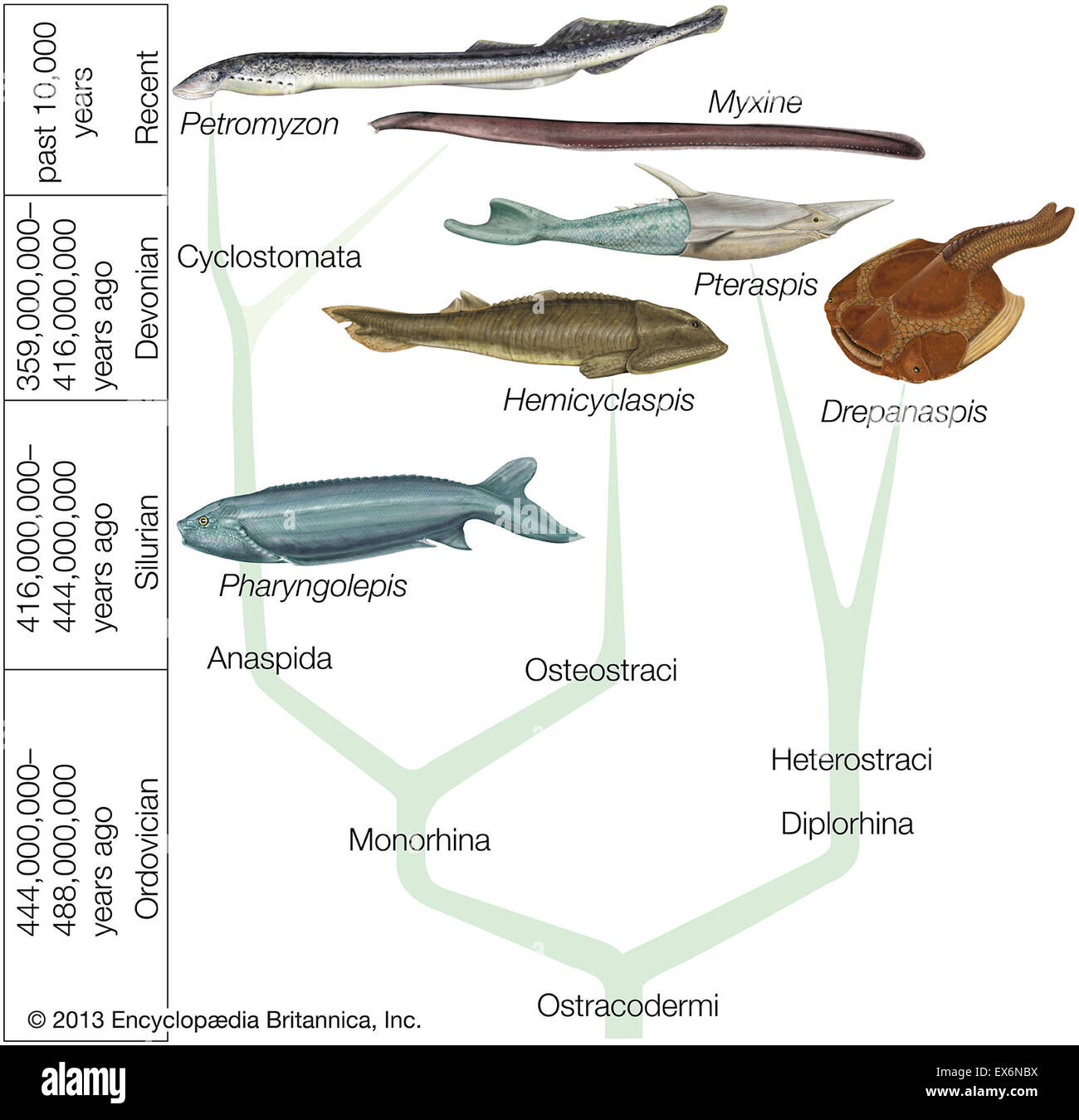 Systematic division of fossil and recent Agnatha Stock Photohttps://www.alamy.com/image-license-details/?v=1https://www.alamy.com/stock-photo-systematic-division-of-fossil-and-recent-agnatha-84971038.html
Systematic division of fossil and recent Agnatha Stock Photohttps://www.alamy.com/image-license-details/?v=1https://www.alamy.com/stock-photo-systematic-division-of-fossil-and-recent-agnatha-84971038.htmlRMEX6NBX–Systematic division of fossil and recent Agnatha
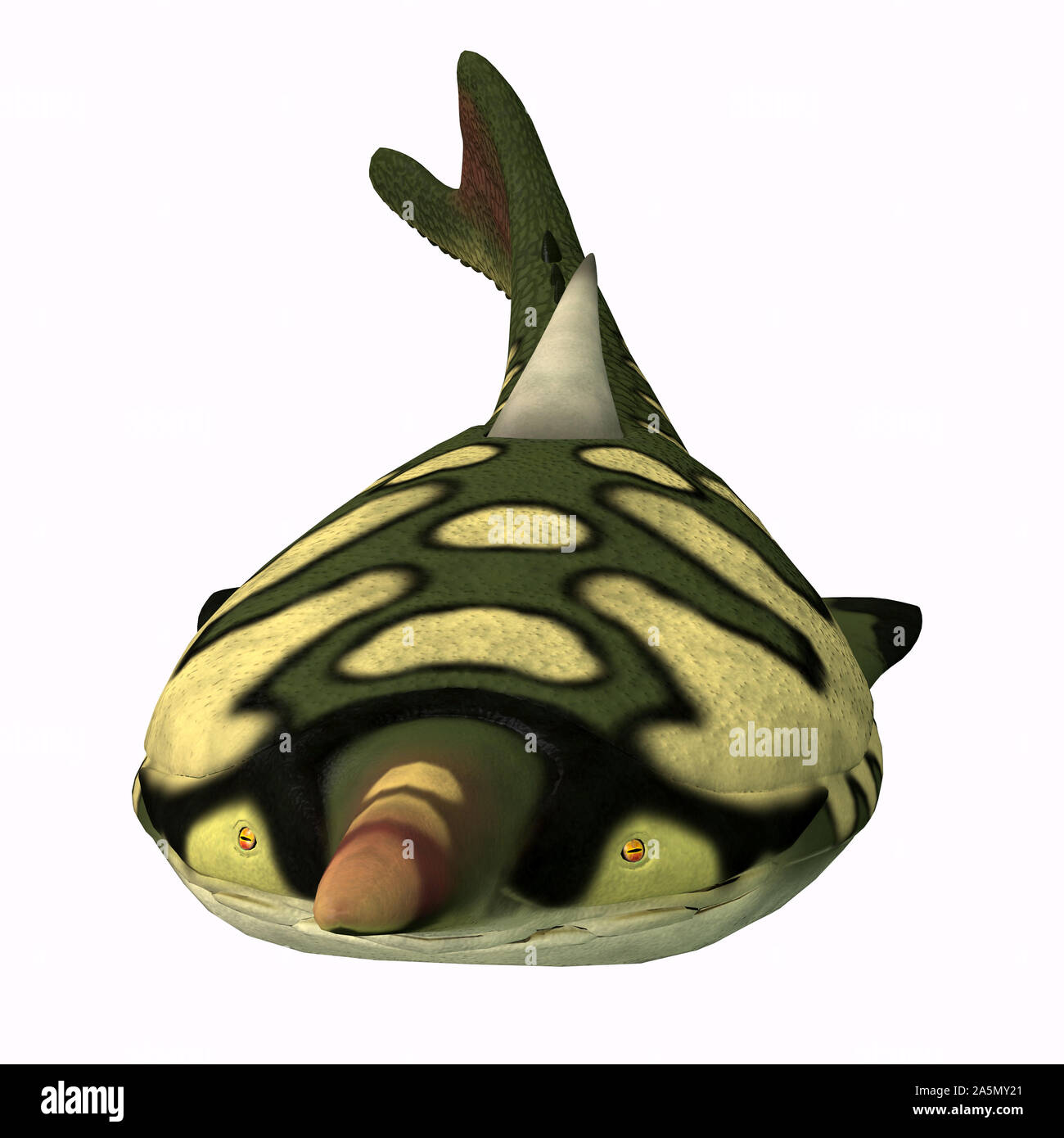 Pteraspis was a carnivorous marine fish that was heavily armored and lived during the Devonian Period. Stock Photohttps://www.alamy.com/image-license-details/?v=1https://www.alamy.com/pteraspis-was-a-carnivorous-marine-fish-that-was-heavily-armored-and-lived-during-the-devonian-period-image330530537.html
Pteraspis was a carnivorous marine fish that was heavily armored and lived during the Devonian Period. Stock Photohttps://www.alamy.com/image-license-details/?v=1https://www.alamy.com/pteraspis-was-a-carnivorous-marine-fish-that-was-heavily-armored-and-lived-during-the-devonian-period-image330530537.htmlRF2A5MY21–Pteraspis was a carnivorous marine fish that was heavily armored and lived during the Devonian Period.
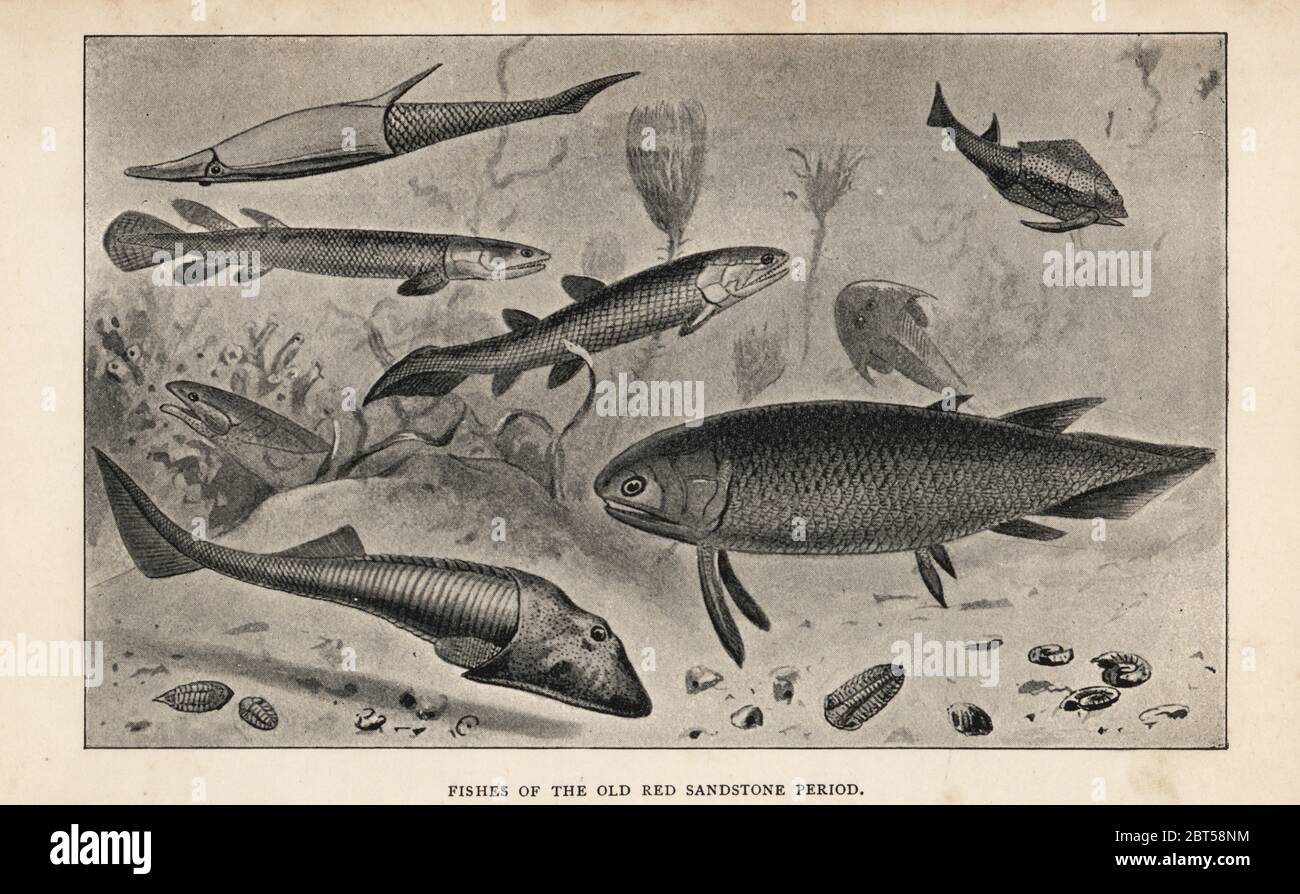 Extinct jawless, lobe-finned and armour-plated fish species: Pteraspis, Glyptolaemus, head of Coccosteus, Cephalaspis, Osteolepis, Holoptychius and Pterichthys. Fishes of the old Red Sandstone period. Print after an illustration by Joseph Smit from Henry Neville Hutchinsons Creatures of Other Days, Popular Studies in Palaeontology, Chapman and Hall, London, 1896. Stock Photohttps://www.alamy.com/image-license-details/?v=1https://www.alamy.com/extinct-jawless-lobe-finned-and-armour-plated-fish-species-pteraspis-glyptolaemus-head-of-coccosteus-cephalaspis-osteolepis-holoptychius-and-pterichthys-fishes-of-the-old-red-sandstone-period-print-after-an-illustration-by-joseph-smit-from-henry-neville-hutchinsons-creatures-of-other-days-popular-studies-in-palaeontology-chapman-and-hall-london-1896-image359075744.html
Extinct jawless, lobe-finned and armour-plated fish species: Pteraspis, Glyptolaemus, head of Coccosteus, Cephalaspis, Osteolepis, Holoptychius and Pterichthys. Fishes of the old Red Sandstone period. Print after an illustration by Joseph Smit from Henry Neville Hutchinsons Creatures of Other Days, Popular Studies in Palaeontology, Chapman and Hall, London, 1896. Stock Photohttps://www.alamy.com/image-license-details/?v=1https://www.alamy.com/extinct-jawless-lobe-finned-and-armour-plated-fish-species-pteraspis-glyptolaemus-head-of-coccosteus-cephalaspis-osteolepis-holoptychius-and-pterichthys-fishes-of-the-old-red-sandstone-period-print-after-an-illustration-by-joseph-smit-from-henry-neville-hutchinsons-creatures-of-other-days-popular-studies-in-palaeontology-chapman-and-hall-london-1896-image359075744.htmlRM2BT58NM–Extinct jawless, lobe-finned and armour-plated fish species: Pteraspis, Glyptolaemus, head of Coccosteus, Cephalaspis, Osteolepis, Holoptychius and Pterichthys. Fishes of the old Red Sandstone period. Print after an illustration by Joseph Smit from Henry Neville Hutchinsons Creatures of Other Days, Popular Studies in Palaeontology, Chapman and Hall, London, 1896.
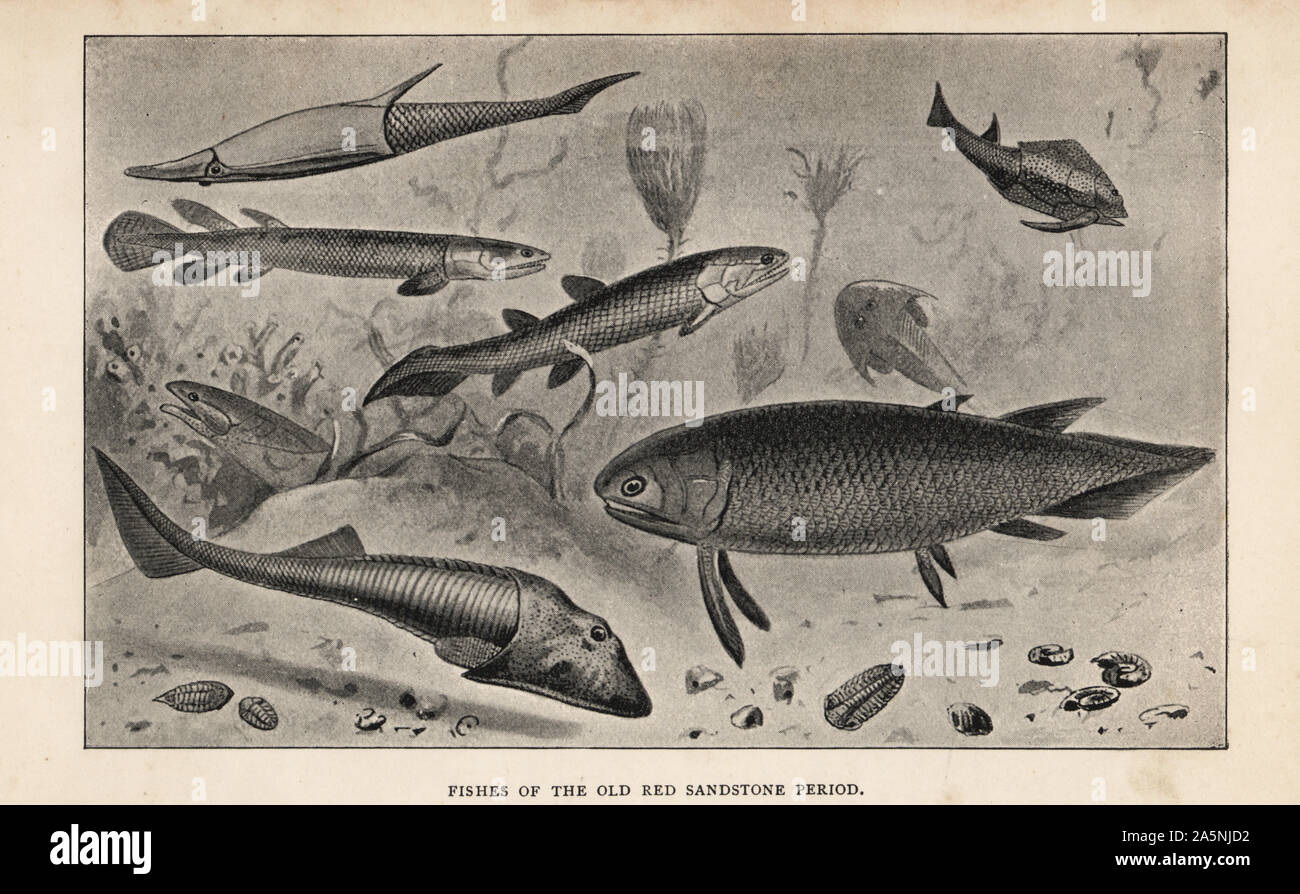 Extinct jawless, lobe-finned and armour-plated fish species: Pteraspis, Glyptolaemus, head of Coccosteus, Cephalaspis, Osteolepis, Holoptychius and Pterichthys. Fishes of the old Red Sandstone period. Print after an illustration by Joseph Smit from Henry Neville Hutchinson’s Creatures of Other Days, Popular Studies in Palaeontology, Chapman and Hall, London, 1896. Stock Photohttps://www.alamy.com/image-license-details/?v=1https://www.alamy.com/extinct-jawless-lobe-finned-and-armour-plated-fish-species-pteraspis-glyptolaemus-head-of-coccosteus-cephalaspis-osteolepis-holoptychius-and-pterichthys-fishes-of-the-old-red-sandstone-period-print-after-an-illustration-by-joseph-smit-from-henry-neville-hutchinsons-creatures-of-other-days-popular-studies-in-palaeontology-chapman-and-hall-london-1896-image330545742.html
Extinct jawless, lobe-finned and armour-plated fish species: Pteraspis, Glyptolaemus, head of Coccosteus, Cephalaspis, Osteolepis, Holoptychius and Pterichthys. Fishes of the old Red Sandstone period. Print after an illustration by Joseph Smit from Henry Neville Hutchinson’s Creatures of Other Days, Popular Studies in Palaeontology, Chapman and Hall, London, 1896. Stock Photohttps://www.alamy.com/image-license-details/?v=1https://www.alamy.com/extinct-jawless-lobe-finned-and-armour-plated-fish-species-pteraspis-glyptolaemus-head-of-coccosteus-cephalaspis-osteolepis-holoptychius-and-pterichthys-fishes-of-the-old-red-sandstone-period-print-after-an-illustration-by-joseph-smit-from-henry-neville-hutchinsons-creatures-of-other-days-popular-studies-in-palaeontology-chapman-and-hall-london-1896-image330545742.htmlRM2A5NJD2–Extinct jawless, lobe-finned and armour-plated fish species: Pteraspis, Glyptolaemus, head of Coccosteus, Cephalaspis, Osteolepis, Holoptychius and Pterichthys. Fishes of the old Red Sandstone period. Print after an illustration by Joseph Smit from Henry Neville Hutchinson’s Creatures of Other Days, Popular Studies in Palaeontology, Chapman and Hall, London, 1896.
 Pteraspis rostrata Stock Photohttps://www.alamy.com/image-license-details/?v=1https://www.alamy.com/stock-photo-pteraspis-rostrata-147659815.html
Pteraspis rostrata Stock Photohttps://www.alamy.com/image-license-details/?v=1https://www.alamy.com/stock-photo-pteraspis-rostrata-147659815.htmlRMJG6DGR–Pteraspis rostrata
 Devonian Pteraspis Fish Stock Photohttps://www.alamy.com/image-license-details/?v=1https://www.alamy.com/devonian-pteraspis-fish-image227291463.html
Devonian Pteraspis Fish Stock Photohttps://www.alamy.com/image-license-details/?v=1https://www.alamy.com/devonian-pteraspis-fish-image227291463.htmlRFR5P0G7–Devonian Pteraspis Fish
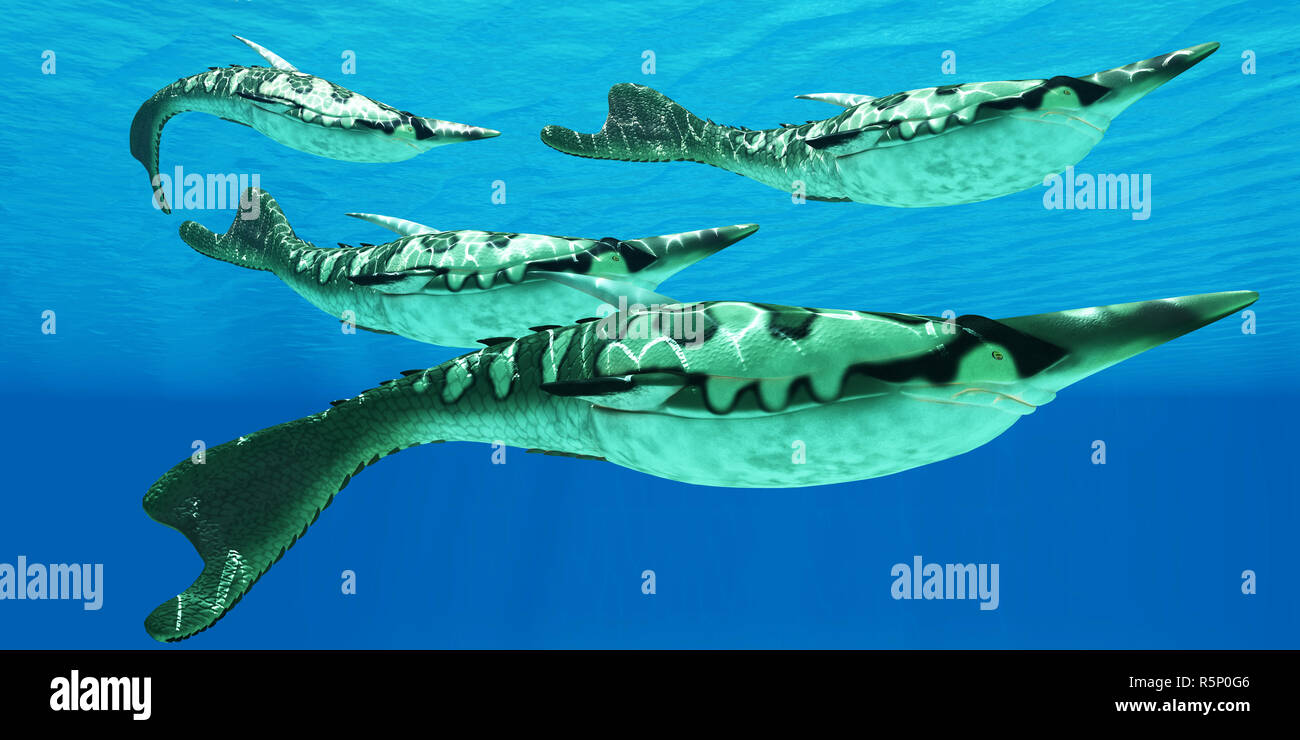 Devonian Pteraspis Fish Group Stock Photohttps://www.alamy.com/image-license-details/?v=1https://www.alamy.com/devonian-pteraspis-fish-group-image227291462.html
Devonian Pteraspis Fish Group Stock Photohttps://www.alamy.com/image-license-details/?v=1https://www.alamy.com/devonian-pteraspis-fish-group-image227291462.htmlRFR5P0G6–Devonian Pteraspis Fish Group
 Pteraspis Fish on White Stock Photohttps://www.alamy.com/image-license-details/?v=1https://www.alamy.com/pteraspis-fish-on-white-image227327270.html
Pteraspis Fish on White Stock Photohttps://www.alamy.com/image-license-details/?v=1https://www.alamy.com/pteraspis-fish-on-white-image227327270.htmlRFR5RJ72–Pteraspis Fish on White
 The first fish, Devonian period, Pteraspis miller, vintage engraved illustration. Earth before man – 1886. Stock Vectorhttps://www.alamy.com/image-license-details/?v=1https://www.alamy.com/stock-photo-the-first-fish-devonian-period-pteraspis-miller-vintage-engraved-illustration-84300370.html
The first fish, Devonian period, Pteraspis miller, vintage engraved illustration. Earth before man – 1886. Stock Vectorhttps://www.alamy.com/image-license-details/?v=1https://www.alamy.com/stock-photo-the-first-fish-devonian-period-pteraspis-miller-vintage-engraved-illustration-84300370.htmlRFEW45YE–The first fish, Devonian period, Pteraspis miller, vintage engraved illustration. Earth before man – 1886.
 Pteraspis rostrata Stock Photohttps://www.alamy.com/image-license-details/?v=1https://www.alamy.com/pteraspis-rostrata-image62358720.html
Pteraspis rostrata Stock Photohttps://www.alamy.com/image-license-details/?v=1https://www.alamy.com/pteraspis-rostrata-image62358720.htmlRMDHCK54–Pteraspis rostrata
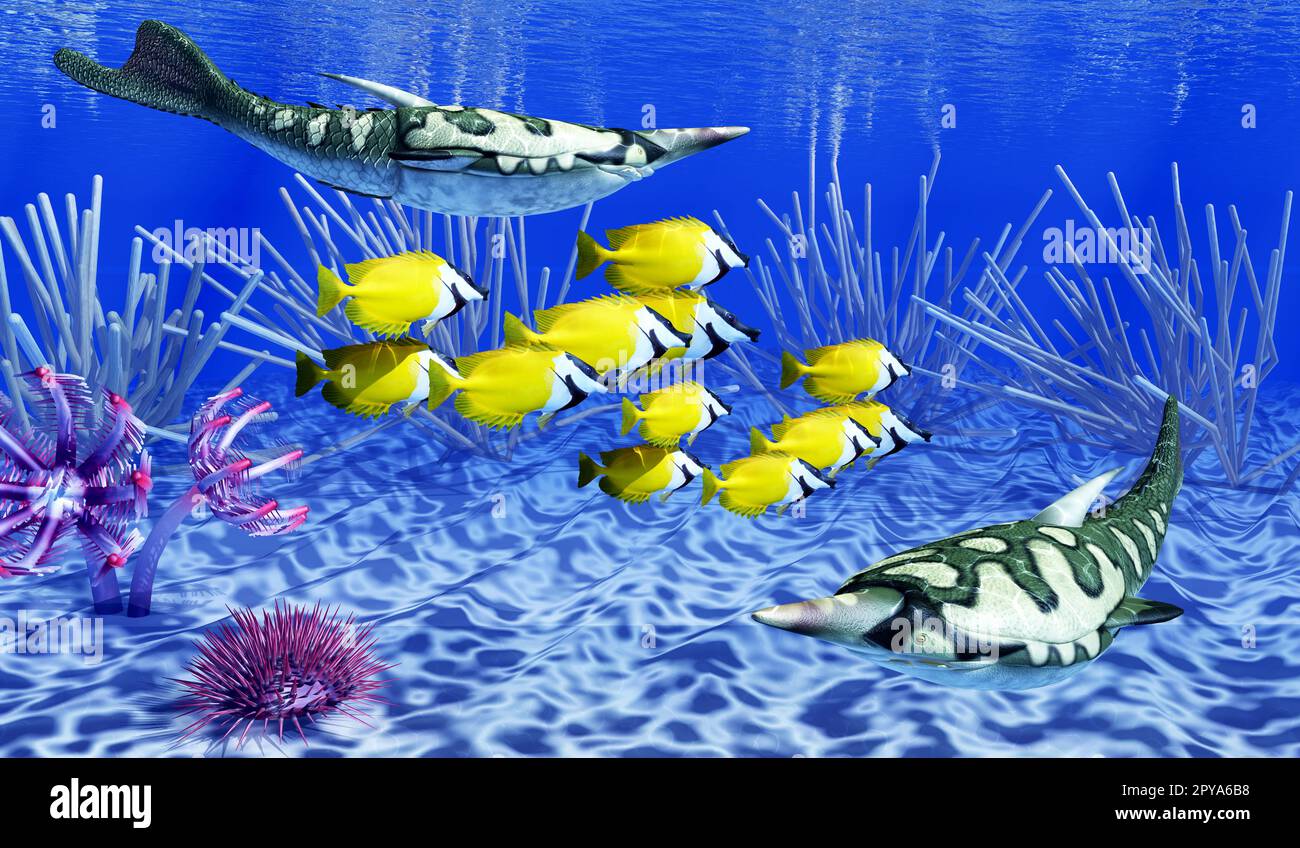 Pteraspis was a primitive jawless fish that lived in the oceans of the Devonian Period. Stock Photohttps://www.alamy.com/image-license-details/?v=1https://www.alamy.com/pteraspis-was-a-primitive-jawless-fish-that-lived-in-the-oceans-of-the-devonian-period-image550341660.html
Pteraspis was a primitive jawless fish that lived in the oceans of the Devonian Period. Stock Photohttps://www.alamy.com/image-license-details/?v=1https://www.alamy.com/pteraspis-was-a-primitive-jawless-fish-that-lived-in-the-oceans-of-the-devonian-period-image550341660.htmlRF2PYA6B8–Pteraspis was a primitive jawless fish that lived in the oceans of the Devonian Period.
RM2AX6PBB–The Victoria history of the county of Cornwall . and prove, as already mentioned,that the Cornish species is correctly described under the name ofP. cornubica. It seems to be the largest species of the genus hithertodiscovered It may be added that in Western Europe Pteraspis is characteristiconly of the Lower Devonian or Lower Old Red Sandstone, not descendingbelow the base of this formation, where it is preceded by [forms with] asimple shield, Cyathaspis. In Galicia, however, typical species occur instrata which are claimed to be of Downtonian or even Ludlow age. Fragmentary remains probably
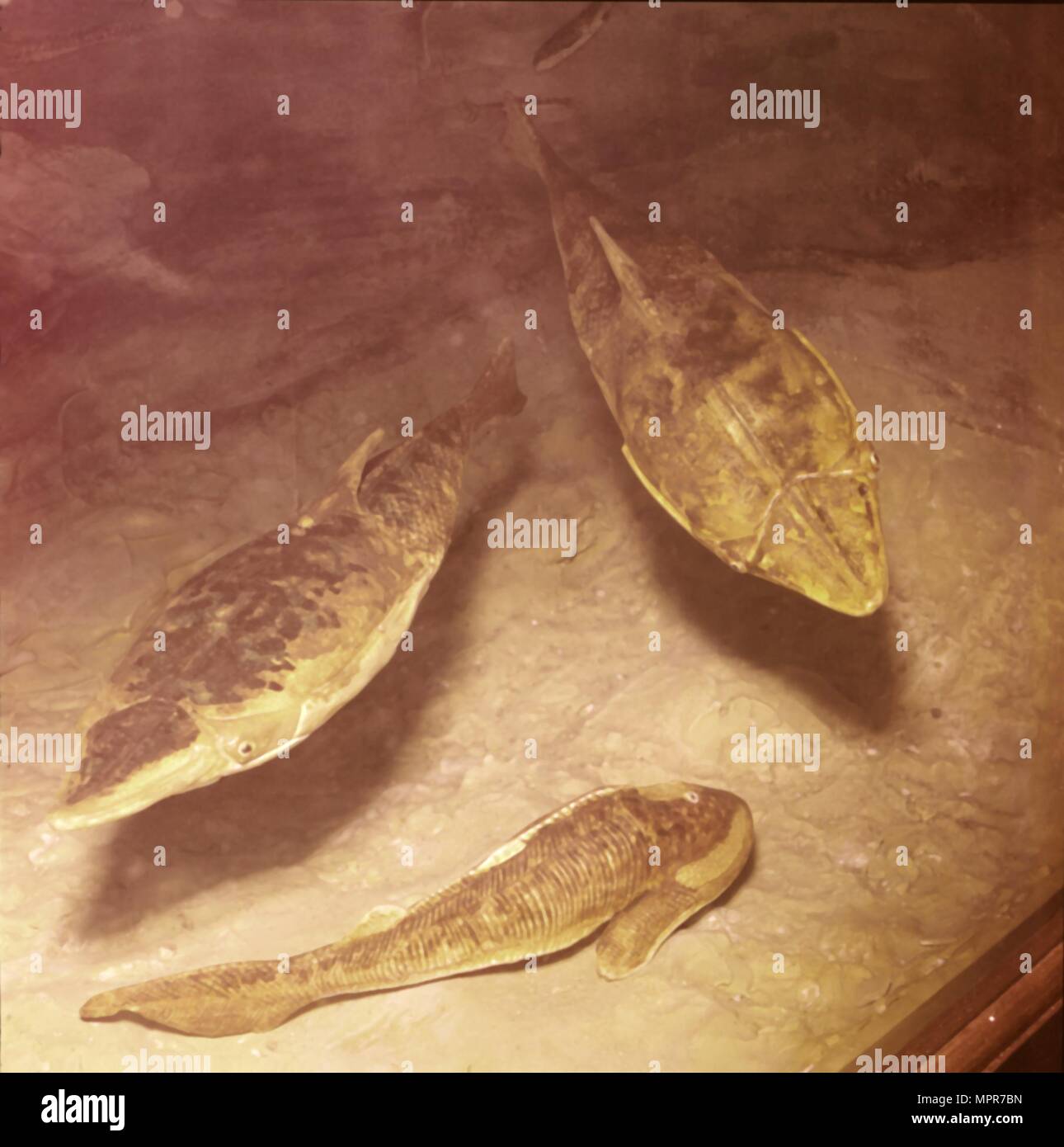 Ostracaderms, (Jawless Fish) from West of England, Early Devonian. Artist: Unknown. Stock Photohttps://www.alamy.com/image-license-details/?v=1https://www.alamy.com/ostracaderms-jawless-fish-from-west-of-england-early-devonian-artist-unknown-image186136825.html
Ostracaderms, (Jawless Fish) from West of England, Early Devonian. Artist: Unknown. Stock Photohttps://www.alamy.com/image-license-details/?v=1https://www.alamy.com/ostracaderms-jawless-fish-from-west-of-england-early-devonian-artist-unknown-image186136825.htmlRMMPR7BN–Ostracaderms, (Jawless Fish) from West of England, Early Devonian. Artist: Unknown.
 Archive image from page 51 of Devonian fishes of Iowa (1908). Devonian fishes of Iowa . devonianfishesof00east Year: 1908 58 IOWA GEOLOGICAL SURVEY and somewhat later rocks in Lanarkshire. There is, indeed, no doubt that the granular armour was the 'fashionable' fish- skeleton of Upper Silurian time. It soon became usual, however, for the skin-tubercles to fuse together into groups, and in the earliest Devonian faunas the most common Ostracoderms are those like Cepkalaspis and Pteraspis. The first of these (shown in Fig. 4) is especially in- structive as showing how the tubercles became plate Stock Photohttps://www.alamy.com/image-license-details/?v=1https://www.alamy.com/archive-image-from-page-51-of-devonian-fishes-of-iowa-1908-devonian-fishes-of-iowa-devonianfishesof00east-year-1908-58-iowa-geological-survey-and-somewhat-later-rocks-in-lanarkshire-there-is-indeed-no-doubt-that-the-granular-armour-was-the-fashionable-fish-skeleton-of-upper-silurian-time-it-soon-became-usual-however-for-the-skin-tubercles-to-fuse-together-into-groups-and-in-the-earliest-devonian-faunas-the-most-common-ostracoderms-are-those-like-cepkalaspis-and-pteraspis-the-first-of-these-shown-in-fig-4-is-especially-in-structive-as-showing-how-the-tubercles-became-plate-image259036161.html
Archive image from page 51 of Devonian fishes of Iowa (1908). Devonian fishes of Iowa . devonianfishesof00east Year: 1908 58 IOWA GEOLOGICAL SURVEY and somewhat later rocks in Lanarkshire. There is, indeed, no doubt that the granular armour was the 'fashionable' fish- skeleton of Upper Silurian time. It soon became usual, however, for the skin-tubercles to fuse together into groups, and in the earliest Devonian faunas the most common Ostracoderms are those like Cepkalaspis and Pteraspis. The first of these (shown in Fig. 4) is especially in- structive as showing how the tubercles became plate Stock Photohttps://www.alamy.com/image-license-details/?v=1https://www.alamy.com/archive-image-from-page-51-of-devonian-fishes-of-iowa-1908-devonian-fishes-of-iowa-devonianfishesof00east-year-1908-58-iowa-geological-survey-and-somewhat-later-rocks-in-lanarkshire-there-is-indeed-no-doubt-that-the-granular-armour-was-the-fashionable-fish-skeleton-of-upper-silurian-time-it-soon-became-usual-however-for-the-skin-tubercles-to-fuse-together-into-groups-and-in-the-earliest-devonian-faunas-the-most-common-ostracoderms-are-those-like-cepkalaspis-and-pteraspis-the-first-of-these-shown-in-fig-4-is-especially-in-structive-as-showing-how-the-tubercles-became-plate-image259036161.htmlRMW1C37D–Archive image from page 51 of Devonian fishes of Iowa (1908). Devonian fishes of Iowa . devonianfishesof00east Year: 1908 58 IOWA GEOLOGICAL SURVEY and somewhat later rocks in Lanarkshire. There is, indeed, no doubt that the granular armour was the 'fashionable' fish- skeleton of Upper Silurian time. It soon became usual, however, for the skin-tubercles to fuse together into groups, and in the earliest Devonian faunas the most common Ostracoderms are those like Cepkalaspis and Pteraspis. The first of these (shown in Fig. 4) is especially in- structive as showing how the tubercles became plate
 . Early Devonian fishes from Utah : Heteroostraci . Fig. 75. Protaspis dorfi; crushed dorsal shield, PF 868 (X 1). essentials with that of P. cf. bucheri, described on page 322. A new restoration of P. (P.) dorfi, based on PF 868, is given in figure 76. The pattern of the dorsal sensory canals agrees with that of Pteraspis. Protaspis (Protaspis) cf. bucheri (Bryant) A dorsal shield (figs. 77, 78), little crushed, and complete except postero-medially, is doubtfully referred to this species. It was col- lected by a student in Utah State Agricultural College from Water Stock Photohttps://www.alamy.com/image-license-details/?v=1https://www.alamy.com/early-devonian-fishes-from-utah-heteroostraci-fig-75-protaspis-dorfi-crushed-dorsal-shield-pf-868-x-1-essentials-with-that-of-p-cf-bucheri-described-on-page-322-a-new-restoration-of-p-p-dorfi-based-on-pf-868-is-given-in-figure-76-the-pattern-of-the-dorsal-sensory-canals-agrees-with-that-of-pteraspis-protaspis-protaspis-cf-bucheri-bryant-a-dorsal-shield-figs-77-78-little-crushed-and-complete-except-postero-medially-is-doubtfully-referred-to-this-species-it-was-col-lected-by-a-student-in-utah-state-agricultural-college-from-water-image178489825.html
. Early Devonian fishes from Utah : Heteroostraci . Fig. 75. Protaspis dorfi; crushed dorsal shield, PF 868 (X 1). essentials with that of P. cf. bucheri, described on page 322. A new restoration of P. (P.) dorfi, based on PF 868, is given in figure 76. The pattern of the dorsal sensory canals agrees with that of Pteraspis. Protaspis (Protaspis) cf. bucheri (Bryant) A dorsal shield (figs. 77, 78), little crushed, and complete except postero-medially, is doubtfully referred to this species. It was col- lected by a student in Utah State Agricultural College from Water Stock Photohttps://www.alamy.com/image-license-details/?v=1https://www.alamy.com/early-devonian-fishes-from-utah-heteroostraci-fig-75-protaspis-dorfi-crushed-dorsal-shield-pf-868-x-1-essentials-with-that-of-p-cf-bucheri-described-on-page-322-a-new-restoration-of-p-p-dorfi-based-on-pf-868-is-given-in-figure-76-the-pattern-of-the-dorsal-sensory-canals-agrees-with-that-of-pteraspis-protaspis-protaspis-cf-bucheri-bryant-a-dorsal-shield-figs-77-78-little-crushed-and-complete-except-postero-medially-is-doubtfully-referred-to-this-species-it-was-col-lected-by-a-student-in-utah-state-agricultural-college-from-water-image178489825.htmlRMMAAWGH–. Early Devonian fishes from Utah : Heteroostraci . Fig. 75. Protaspis dorfi; crushed dorsal shield, PF 868 (X 1). essentials with that of P. cf. bucheri, described on page 322. A new restoration of P. (P.) dorfi, based on PF 868, is given in figure 76. The pattern of the dorsal sensory canals agrees with that of Pteraspis. Protaspis (Protaspis) cf. bucheri (Bryant) A dorsal shield (figs. 77, 78), little crushed, and complete except postero-medially, is doubtfully referred to this species. It was col- lected by a student in Utah State Agricultural College from Water
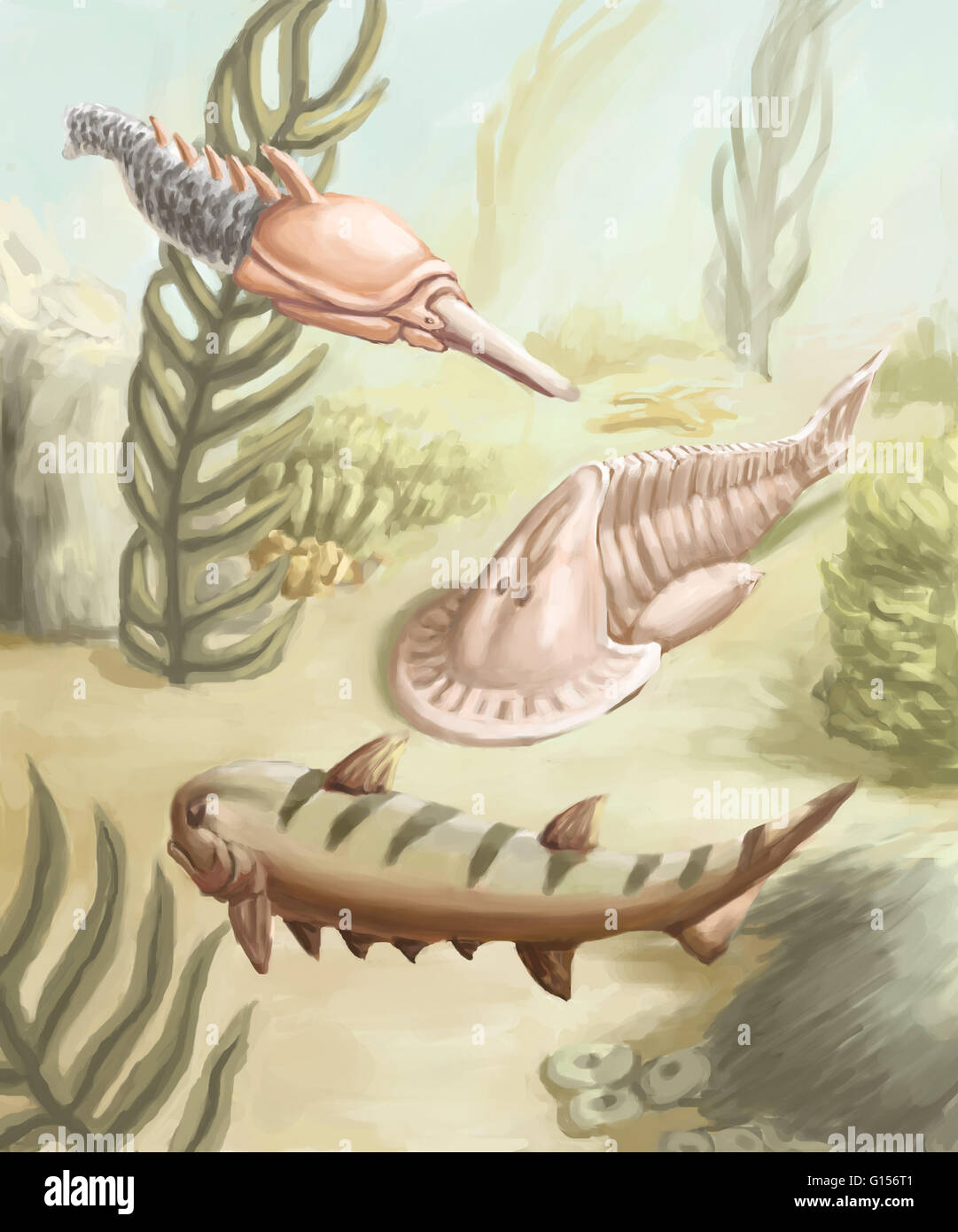 Prehistoric marine life. Ostracoderms ('shell-skinned') were the armored jawless fishes such as pteraspis. The Placoderms (plate-skinned), climatius and hemicyclaspis were among the first armored jawed fish. Stock Photohttps://www.alamy.com/image-license-details/?v=1https://www.alamy.com/stock-photo-prehistoric-marine-life-ostracoderms-shell-skinned-were-the-armored-103992001.html
Prehistoric marine life. Ostracoderms ('shell-skinned') were the armored jawless fishes such as pteraspis. The Placoderms (plate-skinned), climatius and hemicyclaspis were among the first armored jawed fish. Stock Photohttps://www.alamy.com/image-license-details/?v=1https://www.alamy.com/stock-photo-prehistoric-marine-life-ostracoderms-shell-skinned-were-the-armored-103992001.htmlRMG156T1–Prehistoric marine life. Ostracoderms ('shell-skinned') were the armored jawless fishes such as pteraspis. The Placoderms (plate-skinned), climatius and hemicyclaspis were among the first armored jawed fish.
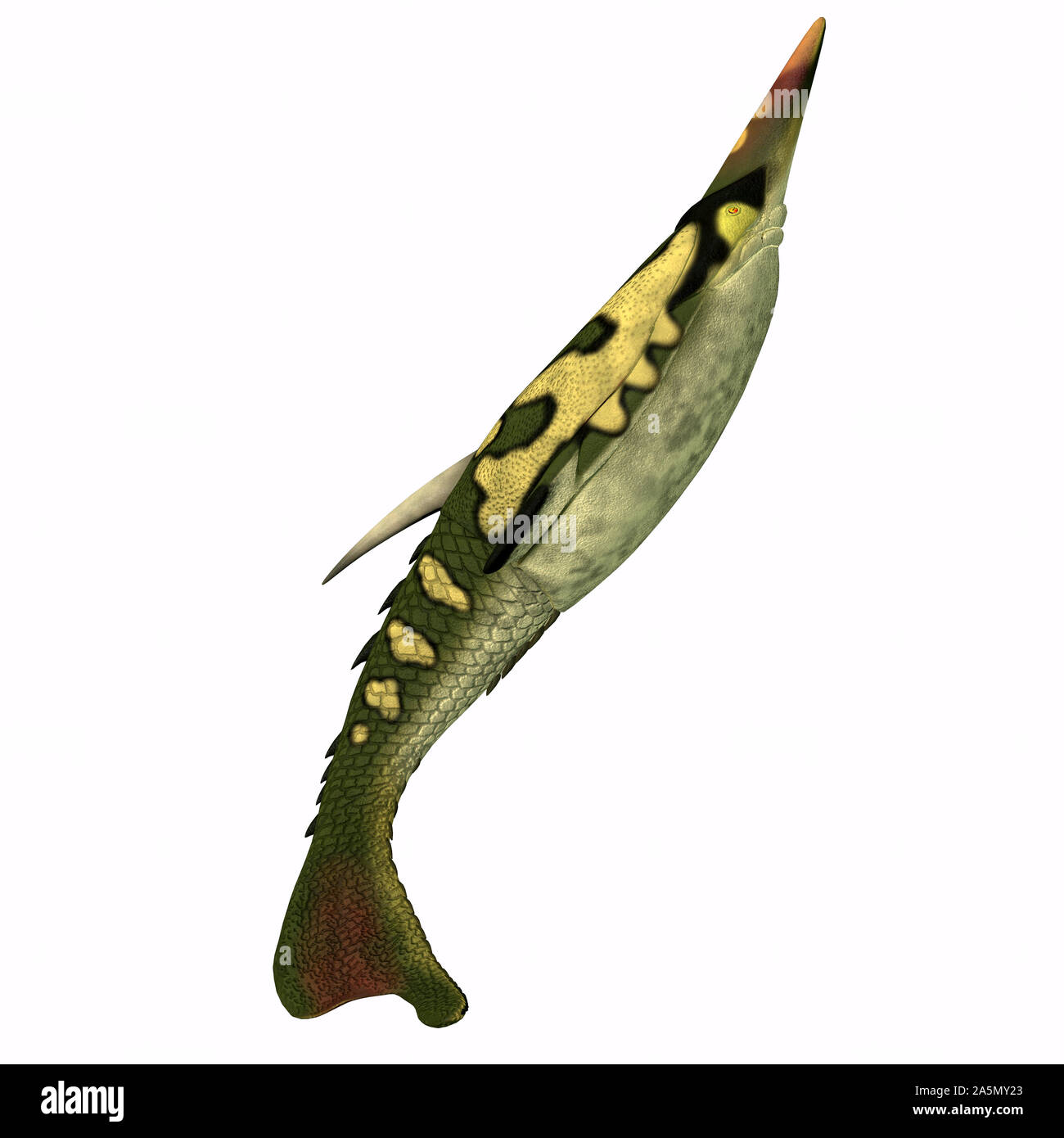 Pteraspis was a carnivorous marine fish that was heavily armored and lived during the Devonian Period. Stock Photohttps://www.alamy.com/image-license-details/?v=1https://www.alamy.com/pteraspis-was-a-carnivorous-marine-fish-that-was-heavily-armored-and-lived-during-the-devonian-period-image330530539.html
Pteraspis was a carnivorous marine fish that was heavily armored and lived during the Devonian Period. Stock Photohttps://www.alamy.com/image-license-details/?v=1https://www.alamy.com/pteraspis-was-a-carnivorous-marine-fish-that-was-heavily-armored-and-lived-during-the-devonian-period-image330530539.htmlRF2A5MY23–Pteraspis was a carnivorous marine fish that was heavily armored and lived during the Devonian Period.
![Infographic of the first fish species appeared on Earth. [QuarkXPress (.qxp); 6259x4015]. Stock Photo Infographic of the first fish species appeared on Earth. [QuarkXPress (.qxp); 6259x4015]. Stock Photo](https://c8.alamy.com/comp/2NEBHRA/infographic-of-the-first-fish-species-appeared-on-earth-quarkxpress-qxp-6259x4015-2NEBHRA.jpg) Infographic of the first fish species appeared on Earth. [QuarkXPress (.qxp); 6259x4015]. Stock Photohttps://www.alamy.com/image-license-details/?v=1https://www.alamy.com/infographic-of-the-first-fish-species-appeared-on-earth-quarkxpress-qxp-6259x4015-image525171678.html
Infographic of the first fish species appeared on Earth. [QuarkXPress (.qxp); 6259x4015]. Stock Photohttps://www.alamy.com/image-license-details/?v=1https://www.alamy.com/infographic-of-the-first-fish-species-appeared-on-earth-quarkxpress-qxp-6259x4015-image525171678.htmlRM2NEBHRA–Infographic of the first fish species appeared on Earth. [QuarkXPress (.qxp); 6259x4015].
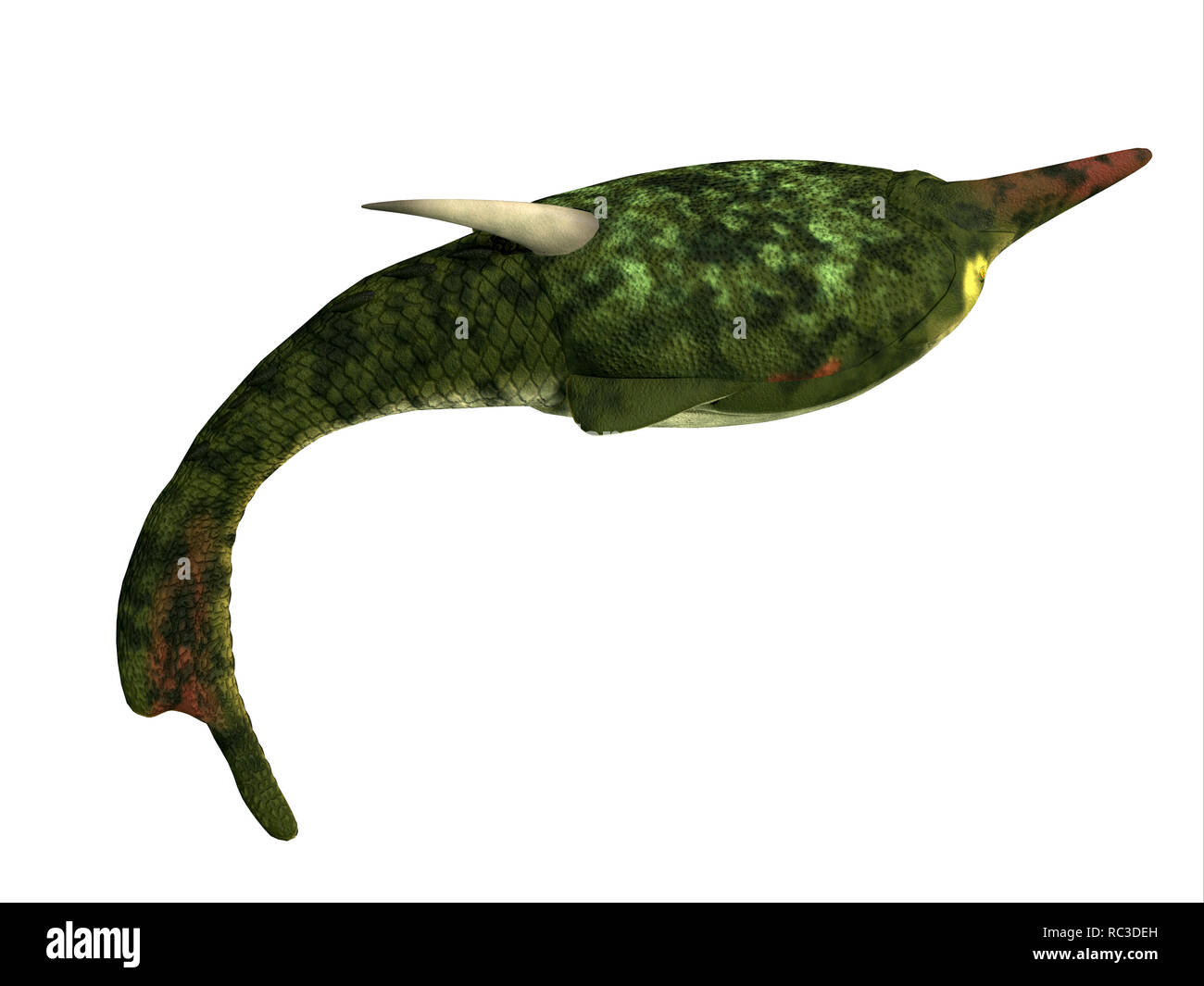 Pteraspis Fish Side Profile - Pteraspis was a primitive jawless fish that lived in the oceans of the Devonian Period. Stock Photohttps://www.alamy.com/image-license-details/?v=1https://www.alamy.com/pteraspis-fish-side-profile-pteraspis-was-a-primitive-jawless-fish-that-lived-in-the-oceans-of-the-devonian-period-image231187113.html
Pteraspis Fish Side Profile - Pteraspis was a primitive jawless fish that lived in the oceans of the Devonian Period. Stock Photohttps://www.alamy.com/image-license-details/?v=1https://www.alamy.com/pteraspis-fish-side-profile-pteraspis-was-a-primitive-jawless-fish-that-lived-in-the-oceans-of-the-devonian-period-image231187113.htmlRFRC3DEH–Pteraspis Fish Side Profile - Pteraspis was a primitive jawless fish that lived in the oceans of the Devonian Period.
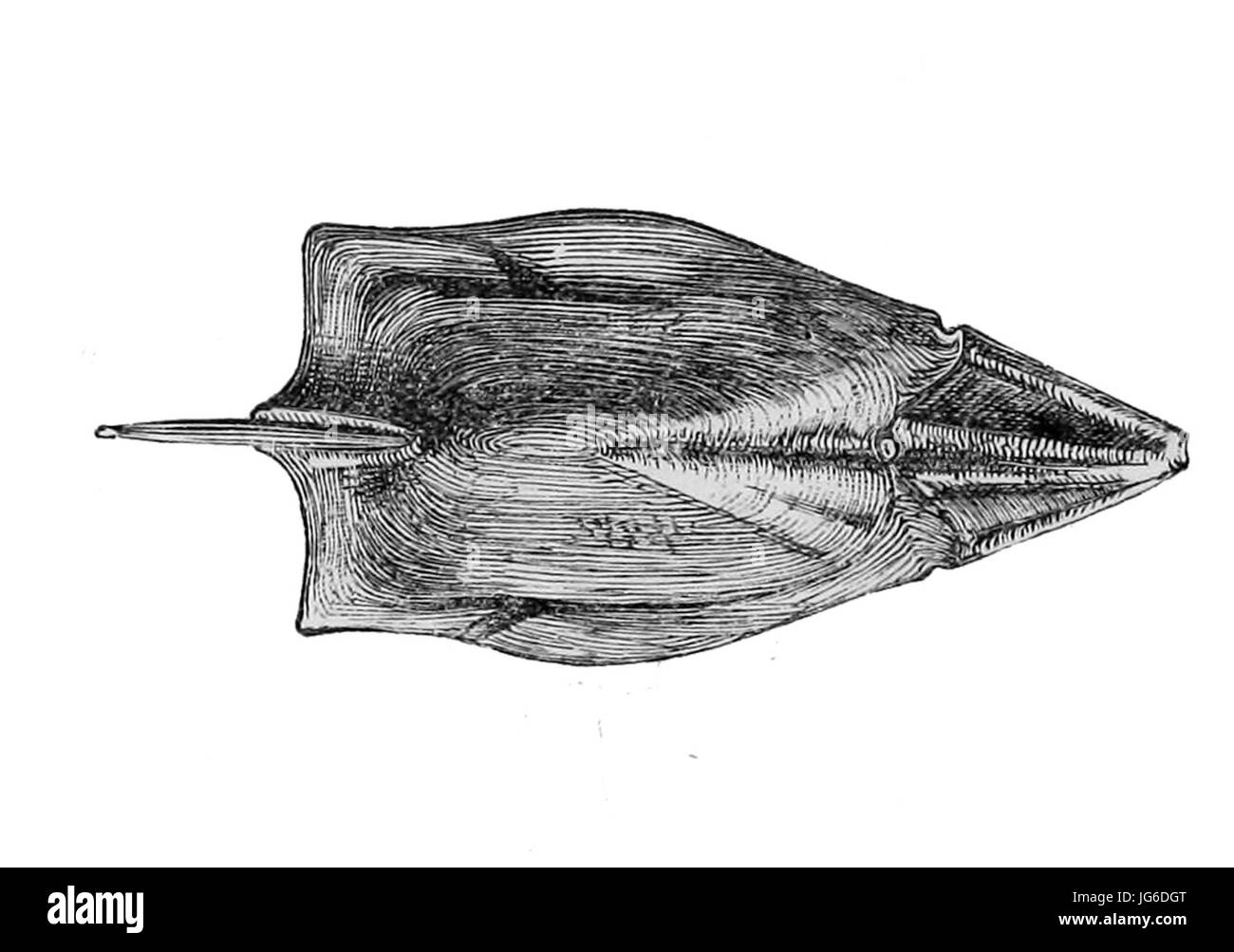 Pteraspis rostrata1 Stock Photohttps://www.alamy.com/image-license-details/?v=1https://www.alamy.com/stock-photo-pteraspis-rostrata1-147659816.html
Pteraspis rostrata1 Stock Photohttps://www.alamy.com/image-license-details/?v=1https://www.alamy.com/stock-photo-pteraspis-rostrata1-147659816.htmlRMJG6DGT–Pteraspis rostrata1
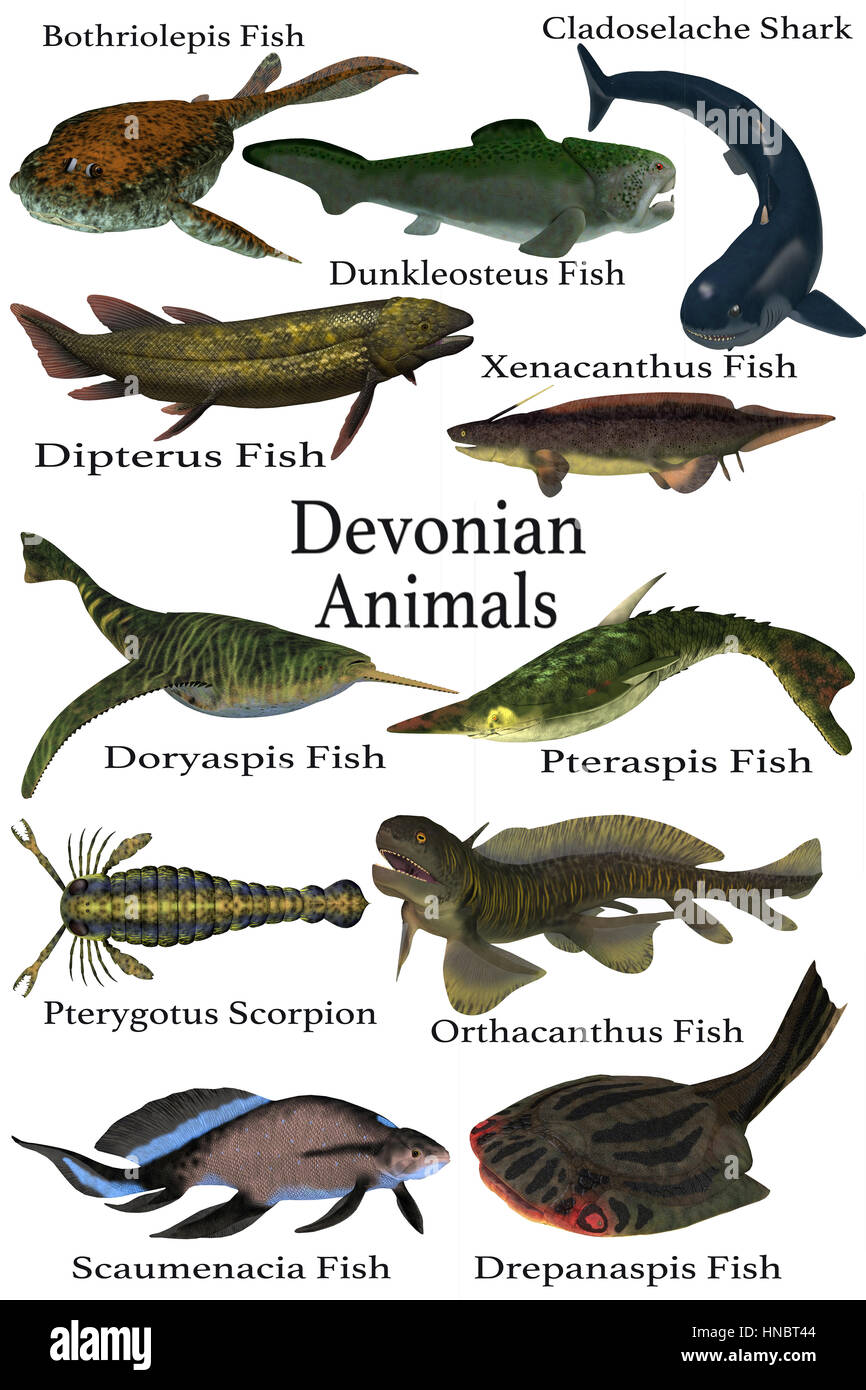 Devonian Animals - A collection of various aquatic animals that lived during the Devonian Period of Earth's history. Stock Photohttps://www.alamy.com/image-license-details/?v=1https://www.alamy.com/stock-photo-devonian-animals-a-collection-of-various-aquatic-animals-that-lived-133640756.html
Devonian Animals - A collection of various aquatic animals that lived during the Devonian Period of Earth's history. Stock Photohttps://www.alamy.com/image-license-details/?v=1https://www.alamy.com/stock-photo-devonian-animals-a-collection-of-various-aquatic-animals-that-lived-133640756.htmlRFHNBT44–Devonian Animals - A collection of various aquatic animals that lived during the Devonian Period of Earth's history.
 The first fish, Devonian period, Pteraspis rostratus, vintage engraved illustration. Earth before man – 1886. Stock Vectorhttps://www.alamy.com/image-license-details/?v=1https://www.alamy.com/stock-photo-the-first-fish-devonian-period-pteraspis-rostratus-vintage-engraved-84300373.html
The first fish, Devonian period, Pteraspis rostratus, vintage engraved illustration. Earth before man – 1886. Stock Vectorhttps://www.alamy.com/image-license-details/?v=1https://www.alamy.com/stock-photo-the-first-fish-devonian-period-pteraspis-rostratus-vintage-engraved-84300373.htmlRFEW45YH–The first fish, Devonian period, Pteraspis rostratus, vintage engraved illustration. Earth before man – 1886.
 . Devonian fishes of Iowa. Fishes, Fossil; Paleontology; Paleontology. 58 IOWA GEOLOGICAL SURVEY and somewhat later rocks in Lanarkshire. There is, indeed, no doubt that the granular armour was the "fashionable" fish- skeleton of Upper Silurian time. It soon became usual, however, for the skin-tubercles to fuse together into groups, and in the earliest Devonian faunas the most common Ostracoderms are those like Cepkalaspis and Pteraspis. The first of these (shown in Fig. 4) is especially in- structive as showing how the tubercles became plates, and how the shape of these plates depen Stock Photohttps://www.alamy.com/image-license-details/?v=1https://www.alamy.com/devonian-fishes-of-iowa-fishes-fossil-paleontology-paleontology-58-iowa-geological-survey-and-somewhat-later-rocks-in-lanarkshire-there-is-indeed-no-doubt-that-the-granular-armour-was-the-quotfashionablequot-fish-skeleton-of-upper-silurian-time-it-soon-became-usual-however-for-the-skin-tubercles-to-fuse-together-into-groups-and-in-the-earliest-devonian-faunas-the-most-common-ostracoderms-are-those-like-cepkalaspis-and-pteraspis-the-first-of-these-shown-in-fig-4-is-especially-in-structive-as-showing-how-the-tubercles-became-plates-and-how-the-shape-of-these-plates-depen-image215957131.html
. Devonian fishes of Iowa. Fishes, Fossil; Paleontology; Paleontology. 58 IOWA GEOLOGICAL SURVEY and somewhat later rocks in Lanarkshire. There is, indeed, no doubt that the granular armour was the "fashionable" fish- skeleton of Upper Silurian time. It soon became usual, however, for the skin-tubercles to fuse together into groups, and in the earliest Devonian faunas the most common Ostracoderms are those like Cepkalaspis and Pteraspis. The first of these (shown in Fig. 4) is especially in- structive as showing how the tubercles became plates, and how the shape of these plates depen Stock Photohttps://www.alamy.com/image-license-details/?v=1https://www.alamy.com/devonian-fishes-of-iowa-fishes-fossil-paleontology-paleontology-58-iowa-geological-survey-and-somewhat-later-rocks-in-lanarkshire-there-is-indeed-no-doubt-that-the-granular-armour-was-the-quotfashionablequot-fish-skeleton-of-upper-silurian-time-it-soon-became-usual-however-for-the-skin-tubercles-to-fuse-together-into-groups-and-in-the-earliest-devonian-faunas-the-most-common-ostracoderms-are-those-like-cepkalaspis-and-pteraspis-the-first-of-these-shown-in-fig-4-is-especially-in-structive-as-showing-how-the-tubercles-became-plates-and-how-the-shape-of-these-plates-depen-image215957131.htmlRMPF9KEK–. Devonian fishes of Iowa. Fishes, Fossil; Paleontology; Paleontology. 58 IOWA GEOLOGICAL SURVEY and somewhat later rocks in Lanarkshire. There is, indeed, no doubt that the granular armour was the "fashionable" fish- skeleton of Upper Silurian time. It soon became usual, however, for the skin-tubercles to fuse together into groups, and in the earliest Devonian faunas the most common Ostracoderms are those like Cepkalaspis and Pteraspis. The first of these (shown in Fig. 4) is especially in- structive as showing how the tubercles became plates, and how the shape of these plates depen
![The Quarterly journal of the Geological Society of London . think, best be interpreted byreference to the smaller and more perfect one. But with this helpthey enable us to observe some characters not plainly visible on No. 1.Pig. 1 shows three uiidulating lines of imprints, neither parallel * Quart. Journ. Greol. Soc. vol. xii. p. 100. t A fine slab of markings, probably due to Cephalaspjs, exists, or did exist afew years back, in the great Jerrayn Street Collection. It is from the Cornstonebeds of the OJd Red. A still finer one is in the Worcester Museum, 1867.] SALTER—TRACKS OF PTERASPIS. 33 Stock Photo The Quarterly journal of the Geological Society of London . think, best be interpreted byreference to the smaller and more perfect one. But with this helpthey enable us to observe some characters not plainly visible on No. 1.Pig. 1 shows three uiidulating lines of imprints, neither parallel * Quart. Journ. Greol. Soc. vol. xii. p. 100. t A fine slab of markings, probably due to Cephalaspjs, exists, or did exist afew years back, in the great Jerrayn Street Collection. It is from the Cornstonebeds of the OJd Red. A still finer one is in the Worcester Museum, 1867.] SALTER—TRACKS OF PTERASPIS. 33 Stock Photo](https://c8.alamy.com/comp/2AN34XA/the-quarterly-journal-of-the-geological-society-of-london-think-best-be-interpreted-byreference-to-the-smaller-and-more-perfect-one-but-with-this-helpthey-enable-us-to-observe-some-characters-not-plainly-visible-on-no-1pig-1-shows-three-uiidulating-lines-of-imprints-neither-parallel-quart-journ-greol-soc-vol-xii-p-100-t-a-fine-slab-of-markings-probably-due-to-cephalaspjs-exists-or-did-exist-afew-years-back-in-the-great-jerrayn-street-collection-it-is-from-the-cornstonebeds-of-the-ojd-red-a-still-finer-one-is-in-the-worcester-museum-1867-saltertracks-of-pteraspis-33-2AN34XA.jpg) The Quarterly journal of the Geological Society of London . think, best be interpreted byreference to the smaller and more perfect one. But with this helpthey enable us to observe some characters not plainly visible on No. 1.Pig. 1 shows three uiidulating lines of imprints, neither parallel * Quart. Journ. Greol. Soc. vol. xii. p. 100. t A fine slab of markings, probably due to Cephalaspjs, exists, or did exist afew years back, in the great Jerrayn Street Collection. It is from the Cornstonebeds of the OJd Red. A still finer one is in the Worcester Museum, 1867.] SALTER—TRACKS OF PTERASPIS. 33 Stock Photohttps://www.alamy.com/image-license-details/?v=1https://www.alamy.com/the-quarterly-journal-of-the-geological-society-of-london-think-best-be-interpreted-byreference-to-the-smaller-and-more-perfect-one-but-with-this-helpthey-enable-us-to-observe-some-characters-not-plainly-visible-on-no-1pig-1-shows-three-uiidulating-lines-of-imprints-neither-parallel-quart-journ-greol-soc-vol-xii-p-100-t-a-fine-slab-of-markings-probably-due-to-cephalaspjs-exists-or-did-exist-afew-years-back-in-the-great-jerrayn-street-collection-it-is-from-the-cornstonebeds-of-the-ojd-red-a-still-finer-one-is-in-the-worcester-museum-1867-saltertracks-of-pteraspis-33-image339974498.html
The Quarterly journal of the Geological Society of London . think, best be interpreted byreference to the smaller and more perfect one. But with this helpthey enable us to observe some characters not plainly visible on No. 1.Pig. 1 shows three uiidulating lines of imprints, neither parallel * Quart. Journ. Greol. Soc. vol. xii. p. 100. t A fine slab of markings, probably due to Cephalaspjs, exists, or did exist afew years back, in the great Jerrayn Street Collection. It is from the Cornstonebeds of the OJd Red. A still finer one is in the Worcester Museum, 1867.] SALTER—TRACKS OF PTERASPIS. 33 Stock Photohttps://www.alamy.com/image-license-details/?v=1https://www.alamy.com/the-quarterly-journal-of-the-geological-society-of-london-think-best-be-interpreted-byreference-to-the-smaller-and-more-perfect-one-but-with-this-helpthey-enable-us-to-observe-some-characters-not-plainly-visible-on-no-1pig-1-shows-three-uiidulating-lines-of-imprints-neither-parallel-quart-journ-greol-soc-vol-xii-p-100-t-a-fine-slab-of-markings-probably-due-to-cephalaspjs-exists-or-did-exist-afew-years-back-in-the-great-jerrayn-street-collection-it-is-from-the-cornstonebeds-of-the-ojd-red-a-still-finer-one-is-in-the-worcester-museum-1867-saltertracks-of-pteraspis-33-image339974498.htmlRM2AN34XA–The Quarterly journal of the Geological Society of London . think, best be interpreted byreference to the smaller and more perfect one. But with this helpthey enable us to observe some characters not plainly visible on No. 1.Pig. 1 shows three uiidulating lines of imprints, neither parallel * Quart. Journ. Greol. Soc. vol. xii. p. 100. t A fine slab of markings, probably due to Cephalaspjs, exists, or did exist afew years back, in the great Jerrayn Street Collection. It is from the Cornstonebeds of the OJd Red. A still finer one is in the Worcester Museum, 1867.] SALTER—TRACKS OF PTERASPIS. 33
 Early Devonian fishes from Utah : Heteroostraci earlydevonianfis117deni Year: 1953 338 FIELDIANA: GEOLOGY, VOLUME 11 Fig. 75. Protaspis dorfi; crushed dorsal shield, PF 868 (X 1). essentials with that of P. cf. bucheri, described on page 322. A new restoration of P. (P.) dorfi, based on PF 868, is given in figure 76. The pattern of the dorsal sensory canals agrees with that of Pteraspis. Protaspis (Protaspis) cf. bucheri (Bryant) A dorsal shield (figs. 77, 78), little crushed, and complete except postero-medially, is doubtfully referred to this species. It was col- lected by a student in Stock Photohttps://www.alamy.com/image-license-details/?v=1https://www.alamy.com/early-devonian-fishes-from-utah-heteroostraci-earlydevonianfis117deni-year-1953-338-fieldiana-geology-volume-11-fig-75-protaspis-dorfi-crushed-dorsal-shield-pf-868-x-1-essentials-with-that-of-p-cf-bucheri-described-on-page-322-a-new-restoration-of-p-p-dorfi-based-on-pf-868-is-given-in-figure-76-the-pattern-of-the-dorsal-sensory-canals-agrees-with-that-of-pteraspis-protaspis-protaspis-cf-bucheri-bryant-a-dorsal-shield-figs-77-78-little-crushed-and-complete-except-postero-medially-is-doubtfully-referred-to-this-species-it-was-col-lected-by-a-student-in-image240689639.html
Early Devonian fishes from Utah : Heteroostraci earlydevonianfis117deni Year: 1953 338 FIELDIANA: GEOLOGY, VOLUME 11 Fig. 75. Protaspis dorfi; crushed dorsal shield, PF 868 (X 1). essentials with that of P. cf. bucheri, described on page 322. A new restoration of P. (P.) dorfi, based on PF 868, is given in figure 76. The pattern of the dorsal sensory canals agrees with that of Pteraspis. Protaspis (Protaspis) cf. bucheri (Bryant) A dorsal shield (figs. 77, 78), little crushed, and complete except postero-medially, is doubtfully referred to this species. It was col- lected by a student in Stock Photohttps://www.alamy.com/image-license-details/?v=1https://www.alamy.com/early-devonian-fishes-from-utah-heteroostraci-earlydevonianfis117deni-year-1953-338-fieldiana-geology-volume-11-fig-75-protaspis-dorfi-crushed-dorsal-shield-pf-868-x-1-essentials-with-that-of-p-cf-bucheri-described-on-page-322-a-new-restoration-of-p-p-dorfi-based-on-pf-868-is-given-in-figure-76-the-pattern-of-the-dorsal-sensory-canals-agrees-with-that-of-pteraspis-protaspis-protaspis-cf-bucheri-bryant-a-dorsal-shield-figs-77-78-little-crushed-and-complete-except-postero-medially-is-doubtfully-referred-to-this-species-it-was-col-lected-by-a-student-in-image240689639.htmlRMRYGA2F–Early Devonian fishes from Utah : Heteroostraci earlydevonianfis117deni Year: 1953 338 FIELDIANA: GEOLOGY, VOLUME 11 Fig. 75. Protaspis dorfi; crushed dorsal shield, PF 868 (X 1). essentials with that of P. cf. bucheri, described on page 322. A new restoration of P. (P.) dorfi, based on PF 868, is given in figure 76. The pattern of the dorsal sensory canals agrees with that of Pteraspis. Protaspis (Protaspis) cf. bucheri (Bryant) A dorsal shield (figs. 77, 78), little crushed, and complete except postero-medially, is doubtfully referred to this species. It was col- lected by a student in
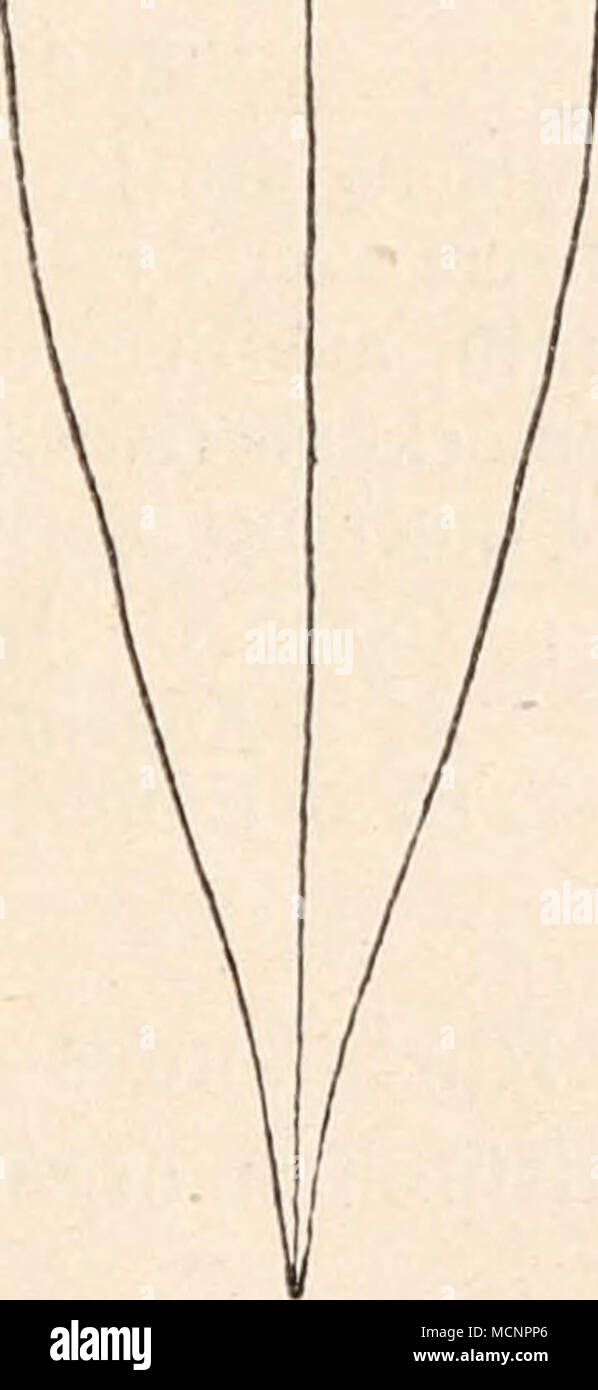 . Fig. 46. Fig. 45. Fig. 47. Fig. 45. Rekonstruktion von Pteraspis Crouchi, Lank., aus dem Unter- devon Nordfrankreichs und Englands, von oben gesehen. Fig. 46. Rekonstruktion von Pteraspis Gosseleti, Leriche, aus dem Ober- silur Nordfrankreichs, von oben gesehen. Fig. 47. Rekonstruktion von Pteraspis rostrata, Ag., aus dem Unter- devon Belgiens, Englands und Nordfrankreichs, von oben gesehen. (Alle 3 Figuren sind Orig.-Rekonstr. in 7/9 nat. Gr.) A. - Auge. Rs. = Rostrum. Sk. = Schleimkanäle. Ds. = Dorsalstachel. Sp. = Schlitz in der Cornutalplatte. Stock Photohttps://www.alamy.com/image-license-details/?v=1https://www.alamy.com/fig-46-fig-45-fig-47-fig-45-rekonstruktion-von-pteraspis-crouchi-lank-aus-dem-unter-devon-nordfrankreichs-und-englands-von-oben-gesehen-fig-46-rekonstruktion-von-pteraspis-gosseleti-leriche-aus-dem-ober-silur-nordfrankreichs-von-oben-gesehen-fig-47-rekonstruktion-von-pteraspis-rostrata-ag-aus-dem-unter-devon-belgiens-englands-und-nordfrankreichs-von-oben-gesehen-alle-3-figuren-sind-orig-rekonstr-in-79-nat-gr-a-auge-rs-=-rostrum-sk-=-schleimkanle-ds-=-dorsalstachel-sp-=-schlitz-in-der-cornutalplatte-image179958414.html
. Fig. 46. Fig. 45. Fig. 47. Fig. 45. Rekonstruktion von Pteraspis Crouchi, Lank., aus dem Unter- devon Nordfrankreichs und Englands, von oben gesehen. Fig. 46. Rekonstruktion von Pteraspis Gosseleti, Leriche, aus dem Ober- silur Nordfrankreichs, von oben gesehen. Fig. 47. Rekonstruktion von Pteraspis rostrata, Ag., aus dem Unter- devon Belgiens, Englands und Nordfrankreichs, von oben gesehen. (Alle 3 Figuren sind Orig.-Rekonstr. in 7/9 nat. Gr.) A. - Auge. Rs. = Rostrum. Sk. = Schleimkanäle. Ds. = Dorsalstachel. Sp. = Schlitz in der Cornutalplatte. Stock Photohttps://www.alamy.com/image-license-details/?v=1https://www.alamy.com/fig-46-fig-45-fig-47-fig-45-rekonstruktion-von-pteraspis-crouchi-lank-aus-dem-unter-devon-nordfrankreichs-und-englands-von-oben-gesehen-fig-46-rekonstruktion-von-pteraspis-gosseleti-leriche-aus-dem-ober-silur-nordfrankreichs-von-oben-gesehen-fig-47-rekonstruktion-von-pteraspis-rostrata-ag-aus-dem-unter-devon-belgiens-englands-und-nordfrankreichs-von-oben-gesehen-alle-3-figuren-sind-orig-rekonstr-in-79-nat-gr-a-auge-rs-=-rostrum-sk-=-schleimkanle-ds-=-dorsalstachel-sp-=-schlitz-in-der-cornutalplatte-image179958414.htmlRMMCNPP6–. Fig. 46. Fig. 45. Fig. 47. Fig. 45. Rekonstruktion von Pteraspis Crouchi, Lank., aus dem Unter- devon Nordfrankreichs und Englands, von oben gesehen. Fig. 46. Rekonstruktion von Pteraspis Gosseleti, Leriche, aus dem Ober- silur Nordfrankreichs, von oben gesehen. Fig. 47. Rekonstruktion von Pteraspis rostrata, Ag., aus dem Unter- devon Belgiens, Englands und Nordfrankreichs, von oben gesehen. (Alle 3 Figuren sind Orig.-Rekonstr. in 7/9 nat. Gr.) A. - Auge. Rs. = Rostrum. Sk. = Schleimkanäle. Ds. = Dorsalstachel. Sp. = Schlitz in der Cornutalplatte.
![Infographic about the first prehistoric fish, whose evolution assumed the appearance of all the rest of the animal species. [QuarkXPress (.qxp); Adobe InDesign (.indd); 4960x3188]. Stock Photo Infographic about the first prehistoric fish, whose evolution assumed the appearance of all the rest of the animal species. [QuarkXPress (.qxp); Adobe InDesign (.indd); 4960x3188]. Stock Photo](https://c8.alamy.com/comp/2NEC340/infographic-about-the-first-prehistoric-fish-whose-evolution-assumed-the-appearance-of-all-the-rest-of-the-animal-species-quarkxpress-qxp-adobe-indesign-indd-4960x3188-2NEC340.jpg) Infographic about the first prehistoric fish, whose evolution assumed the appearance of all the rest of the animal species. [QuarkXPress (.qxp); Adobe InDesign (.indd); 4960x3188]. Stock Photohttps://www.alamy.com/image-license-details/?v=1https://www.alamy.com/infographic-about-the-first-prehistoric-fish-whose-evolution-assumed-the-appearance-of-all-the-rest-of-the-animal-species-quarkxpress-qxp-adobe-indesign-indd-4960x3188-image525182112.html
Infographic about the first prehistoric fish, whose evolution assumed the appearance of all the rest of the animal species. [QuarkXPress (.qxp); Adobe InDesign (.indd); 4960x3188]. Stock Photohttps://www.alamy.com/image-license-details/?v=1https://www.alamy.com/infographic-about-the-first-prehistoric-fish-whose-evolution-assumed-the-appearance-of-all-the-rest-of-the-animal-species-quarkxpress-qxp-adobe-indesign-indd-4960x3188-image525182112.htmlRM2NEC340–Infographic about the first prehistoric fish, whose evolution assumed the appearance of all the rest of the animal species. [QuarkXPress (.qxp); Adobe InDesign (.indd); 4960x3188].
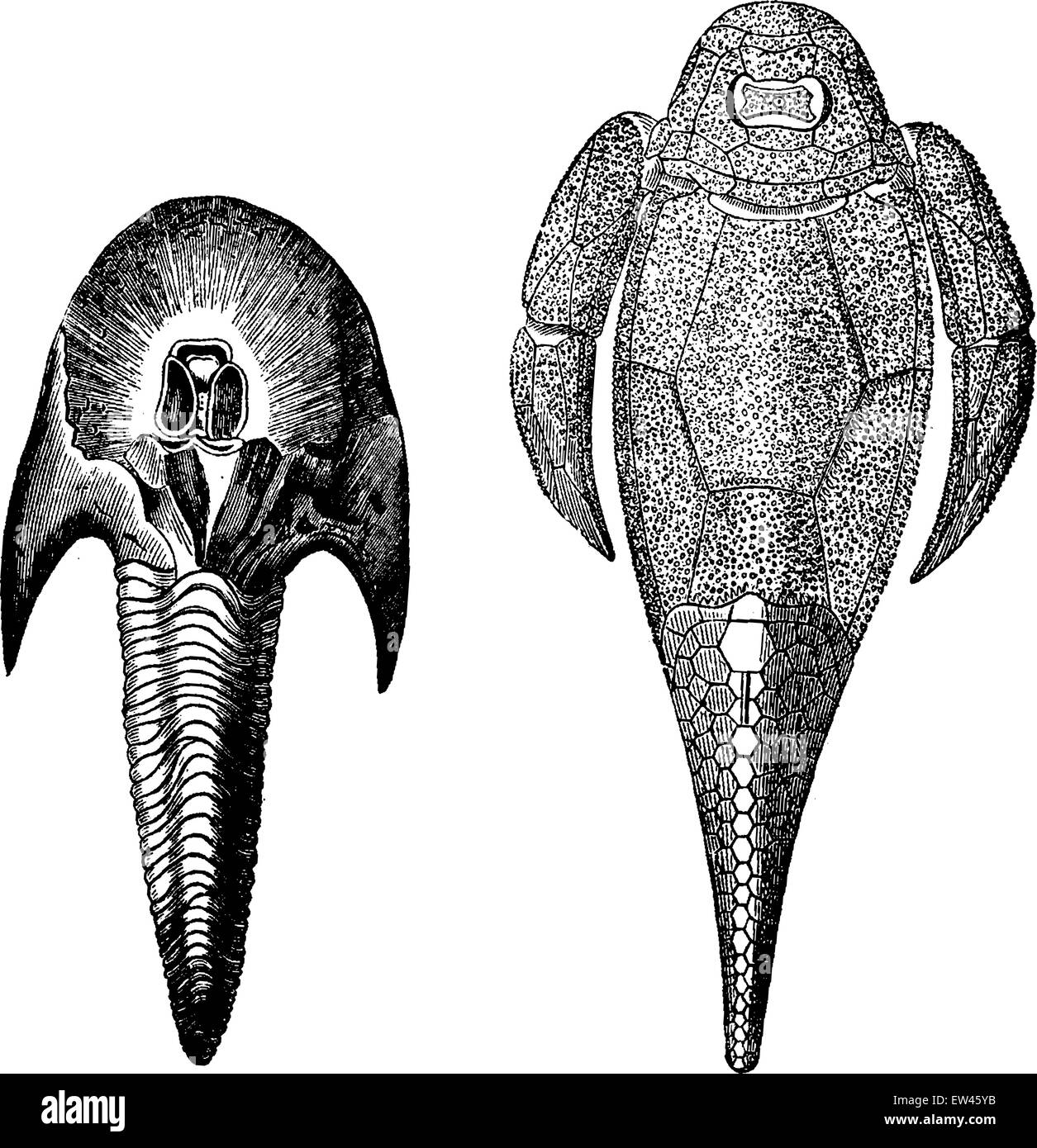 The first fish, Devonian period, Cephalaspis lloydii and Pteraspis miller, vintage engraved illustration. Earth before man – 1886. Stock Vectorhttps://www.alamy.com/image-license-details/?v=1https://www.alamy.com/stock-photo-the-first-fish-devonian-period-cephalaspis-lloydii-and-pteraspis-miller-84300367.html
The first fish, Devonian period, Cephalaspis lloydii and Pteraspis miller, vintage engraved illustration. Earth before man – 1886. Stock Vectorhttps://www.alamy.com/image-license-details/?v=1https://www.alamy.com/stock-photo-the-first-fish-devonian-period-cephalaspis-lloydii-and-pteraspis-miller-84300367.htmlRFEW45YB–The first fish, Devonian period, Cephalaspis lloydii and Pteraspis miller, vintage engraved illustration. Earth before man – 1886.
 . The Cyathaspididae; a family of Silurian and Devonian jawless vertebrates. Cyathaspididae. DENISON: THE CYATHASPIDIDAE 365 Occurrence.—Late Silurian (Early Ludlovian), glacial erratic of Graptolithengestein, Muntzeschen quarry, Kothen, Saxony, Germany. cep—^*-. Fig. 113. Archegonaspis schmidti, rostral view, drawn from cast of type speci- men (X 3). cep, central epitegum; lep, lateral epitegum; orb, orbit; pop, preorbital process; rep, rostral epitegum; ro, rostrum. Archegonaspis ludensis (Salter) Pteraspis ludensis Salter, 1859, Ann. Mag. Nat. Hist., (3), 4, pp. 45-47, fig. 1. Scaphaspis lu Stock Photohttps://www.alamy.com/image-license-details/?v=1https://www.alamy.com/the-cyathaspididae-a-family-of-silurian-and-devonian-jawless-vertebrates-cyathaspididae-denison-the-cyathaspididae-365-occurrencelate-silurian-early-ludlovian-glacial-erratic-of-graptolithengestein-muntzeschen-quarry-kothen-saxony-germany-cep-fig-113-archegonaspis-schmidti-rostral-view-drawn-from-cast-of-type-speci-men-x-3-cep-central-epitegum-lep-lateral-epitegum-orb-orbit-pop-preorbital-process-rep-rostral-epitegum-ro-rostrum-archegonaspis-ludensis-salter-pteraspis-ludensis-salter-1859-ann-mag-nat-hist-3-4-pp-45-47-fig-1-scaphaspis-lu-image216309090.html
. The Cyathaspididae; a family of Silurian and Devonian jawless vertebrates. Cyathaspididae. DENISON: THE CYATHASPIDIDAE 365 Occurrence.—Late Silurian (Early Ludlovian), glacial erratic of Graptolithengestein, Muntzeschen quarry, Kothen, Saxony, Germany. cep—^*-. Fig. 113. Archegonaspis schmidti, rostral view, drawn from cast of type speci- men (X 3). cep, central epitegum; lep, lateral epitegum; orb, orbit; pop, preorbital process; rep, rostral epitegum; ro, rostrum. Archegonaspis ludensis (Salter) Pteraspis ludensis Salter, 1859, Ann. Mag. Nat. Hist., (3), 4, pp. 45-47, fig. 1. Scaphaspis lu Stock Photohttps://www.alamy.com/image-license-details/?v=1https://www.alamy.com/the-cyathaspididae-a-family-of-silurian-and-devonian-jawless-vertebrates-cyathaspididae-denison-the-cyathaspididae-365-occurrencelate-silurian-early-ludlovian-glacial-erratic-of-graptolithengestein-muntzeschen-quarry-kothen-saxony-germany-cep-fig-113-archegonaspis-schmidti-rostral-view-drawn-from-cast-of-type-speci-men-x-3-cep-central-epitegum-lep-lateral-epitegum-orb-orbit-pop-preorbital-process-rep-rostral-epitegum-ro-rostrum-archegonaspis-ludensis-salter-pteraspis-ludensis-salter-1859-ann-mag-nat-hist-3-4-pp-45-47-fig-1-scaphaspis-lu-image216309090.htmlRMPFWMCJ–. The Cyathaspididae; a family of Silurian and Devonian jawless vertebrates. Cyathaspididae. DENISON: THE CYATHASPIDIDAE 365 Occurrence.—Late Silurian (Early Ludlovian), glacial erratic of Graptolithengestein, Muntzeschen quarry, Kothen, Saxony, Germany. cep—^*-. Fig. 113. Archegonaspis schmidti, rostral view, drawn from cast of type speci- men (X 3). cep, central epitegum; lep, lateral epitegum; orb, orbit; pop, preorbital process; rep, rostral epitegum; ro, rostrum. Archegonaspis ludensis (Salter) Pteraspis ludensis Salter, 1859, Ann. Mag. Nat. Hist., (3), 4, pp. 45-47, fig. 1. Scaphaspis lu
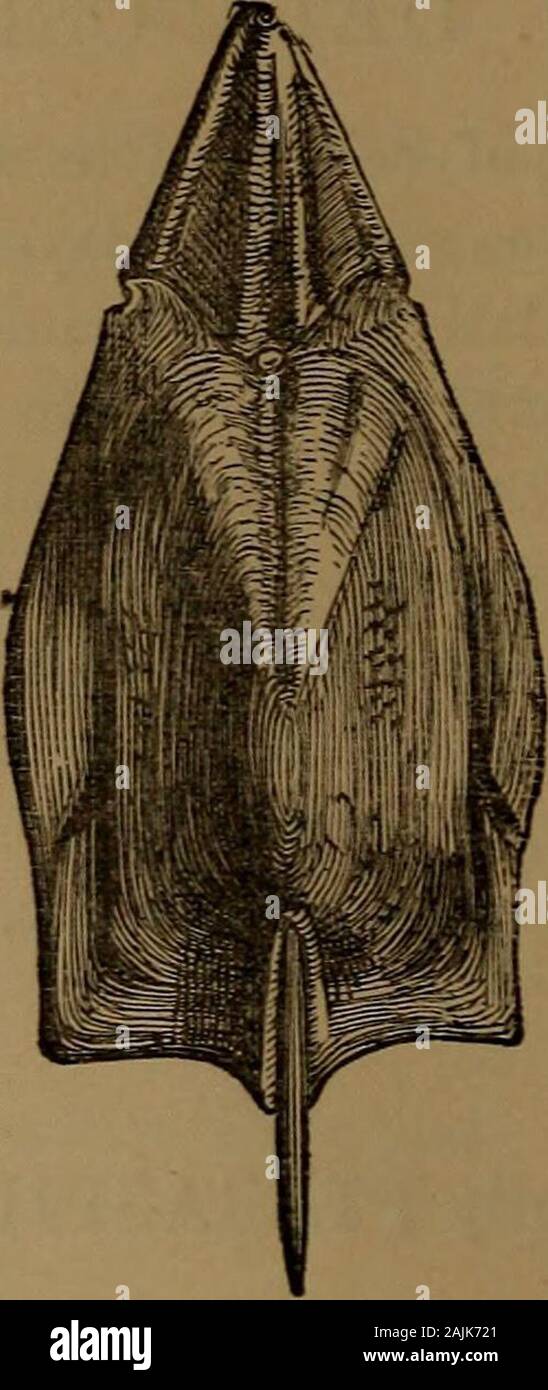 Catalogue of the fossil fishes in the British Museum (Natural History) .. . small. Scales of caudal region,when present, numerous and rhomboidal. 160 HETEROSTRACI. Synopsis of Genera. I. Orbits enclosed in dorsal shield. Shield consisting of seven parts, fused in adult. Pteraspis (p. 160). II. Orbits forming lateral notches in dorsal shield. Shield consisting of a single plate Palcsaspis (p. 169). Shield consisting of four parts , Cyathaspis (p. 170). Genus PTERASPIS, Kner & Huxley. [R. Kner, Haidingers Naturw. Abhandlungen, vol. i. 1847, p. 165 ;emend. T. H. Huxley, Quart. Journ. Geol. Soc. v Stock Photohttps://www.alamy.com/image-license-details/?v=1https://www.alamy.com/catalogue-of-the-fossil-fishes-in-the-british-museum-natural-history-small-scales-of-caudal-regionwhen-present-numerous-and-rhomboidal-160-heterostraci-synopsis-of-genera-i-orbits-enclosed-in-dorsal-shield-shield-consisting-of-seven-parts-fused-in-adult-pteraspis-p-160-ii-orbits-forming-lateral-notches-in-dorsal-shield-shield-consisting-of-a-single-plate-palcsaspis-p-169-shield-consisting-of-four-parts-cyathaspis-p-170-genus-pteraspis-kner-huxley-r-kner-haidingers-naturw-abhandlungen-vol-i-1847-p-165-emend-t-h-huxley-quart-journ-geol-soc-v-image338483433.html
Catalogue of the fossil fishes in the British Museum (Natural History) .. . small. Scales of caudal region,when present, numerous and rhomboidal. 160 HETEROSTRACI. Synopsis of Genera. I. Orbits enclosed in dorsal shield. Shield consisting of seven parts, fused in adult. Pteraspis (p. 160). II. Orbits forming lateral notches in dorsal shield. Shield consisting of a single plate Palcsaspis (p. 169). Shield consisting of four parts , Cyathaspis (p. 170). Genus PTERASPIS, Kner & Huxley. [R. Kner, Haidingers Naturw. Abhandlungen, vol. i. 1847, p. 165 ;emend. T. H. Huxley, Quart. Journ. Geol. Soc. v Stock Photohttps://www.alamy.com/image-license-details/?v=1https://www.alamy.com/catalogue-of-the-fossil-fishes-in-the-british-museum-natural-history-small-scales-of-caudal-regionwhen-present-numerous-and-rhomboidal-160-heterostraci-synopsis-of-genera-i-orbits-enclosed-in-dorsal-shield-shield-consisting-of-seven-parts-fused-in-adult-pteraspis-p-160-ii-orbits-forming-lateral-notches-in-dorsal-shield-shield-consisting-of-a-single-plate-palcsaspis-p-169-shield-consisting-of-four-parts-cyathaspis-p-170-genus-pteraspis-kner-huxley-r-kner-haidingers-naturw-abhandlungen-vol-i-1847-p-165-emend-t-h-huxley-quart-journ-geol-soc-v-image338483433.htmlRM2AJK721–Catalogue of the fossil fishes in the British Museum (Natural History) .. . small. Scales of caudal region,when present, numerous and rhomboidal. 160 HETEROSTRACI. Synopsis of Genera. I. Orbits enclosed in dorsal shield. Shield consisting of seven parts, fused in adult. Pteraspis (p. 160). II. Orbits forming lateral notches in dorsal shield. Shield consisting of a single plate Palcsaspis (p. 169). Shield consisting of four parts , Cyathaspis (p. 170). Genus PTERASPIS, Kner & Huxley. [R. Kner, Haidingers Naturw. Abhandlungen, vol. i. 1847, p. 165 ;emend. T. H. Huxley, Quart. Journ. Geol. Soc. v
 Archive image from page 104 of Die stämme der wirbeltiere (1919). Die stämme der wirbeltiere diestmmederwir00abel Year: 1919 Fische (Pisces). 83 sich bei Pteraspis (mit Ausnahme von P. Gosseleti) ein beweglicher, medianer Rückenstachel eingelenkt. Ob sich eine Rückenflosse daran schloß, ist ungewiß. Vom Hinterkörper ist nur der vordere Teil besser erhalten, der mit rhombischen Schuppen besetzt war. Die Augenhöhlen waren bei Pteraspis sehr klein, bei Cyathaspis etwas größer, und standen seitlich. Diese Augenstellung in Verbindung mit der allgemeinen Gestalt des Vorderkörpers beweist, daß Pter Stock Photohttps://www.alamy.com/image-license-details/?v=1https://www.alamy.com/archive-image-from-page-104-of-die-stmme-der-wirbeltiere-1919-die-stmme-der-wirbeltiere-diestmmederwir00abel-year-1919-fische-pisces-83-sich-bei-pteraspis-mit-ausnahme-von-p-gosseleti-ein-beweglicher-medianer-rckenstachel-eingelenkt-ob-sich-eine-rckenflosse-daran-schlo-ist-ungewi-vom-hinterkrper-ist-nur-der-vordere-teil-besser-erhalten-der-mit-rhombischen-schuppen-besetzt-war-die-augenhhlen-waren-bei-pteraspis-sehr-klein-bei-cyathaspis-etwas-grer-und-standen-seitlich-diese-augenstellung-in-verbindung-mit-der-allgemeinen-gestalt-des-vorderkrpers-beweist-da-pter-image243355311.html
Archive image from page 104 of Die stämme der wirbeltiere (1919). Die stämme der wirbeltiere diestmmederwir00abel Year: 1919 Fische (Pisces). 83 sich bei Pteraspis (mit Ausnahme von P. Gosseleti) ein beweglicher, medianer Rückenstachel eingelenkt. Ob sich eine Rückenflosse daran schloß, ist ungewiß. Vom Hinterkörper ist nur der vordere Teil besser erhalten, der mit rhombischen Schuppen besetzt war. Die Augenhöhlen waren bei Pteraspis sehr klein, bei Cyathaspis etwas größer, und standen seitlich. Diese Augenstellung in Verbindung mit der allgemeinen Gestalt des Vorderkörpers beweist, daß Pter Stock Photohttps://www.alamy.com/image-license-details/?v=1https://www.alamy.com/archive-image-from-page-104-of-die-stmme-der-wirbeltiere-1919-die-stmme-der-wirbeltiere-diestmmederwir00abel-year-1919-fische-pisces-83-sich-bei-pteraspis-mit-ausnahme-von-p-gosseleti-ein-beweglicher-medianer-rckenstachel-eingelenkt-ob-sich-eine-rckenflosse-daran-schlo-ist-ungewi-vom-hinterkrper-ist-nur-der-vordere-teil-besser-erhalten-der-mit-rhombischen-schuppen-besetzt-war-die-augenhhlen-waren-bei-pteraspis-sehr-klein-bei-cyathaspis-etwas-grer-und-standen-seitlich-diese-augenstellung-in-verbindung-mit-der-allgemeinen-gestalt-des-vorderkrpers-beweist-da-pter-image243355311.htmlRMT3WP53–Archive image from page 104 of Die stämme der wirbeltiere (1919). Die stämme der wirbeltiere diestmmederwir00abel Year: 1919 Fische (Pisces). 83 sich bei Pteraspis (mit Ausnahme von P. Gosseleti) ein beweglicher, medianer Rückenstachel eingelenkt. Ob sich eine Rückenflosse daran schloß, ist ungewiß. Vom Hinterkörper ist nur der vordere Teil besser erhalten, der mit rhombischen Schuppen besetzt war. Die Augenhöhlen waren bei Pteraspis sehr klein, bei Cyathaspis etwas größer, und standen seitlich. Diese Augenstellung in Verbindung mit der allgemeinen Gestalt des Vorderkörpers beweist, daß Pter
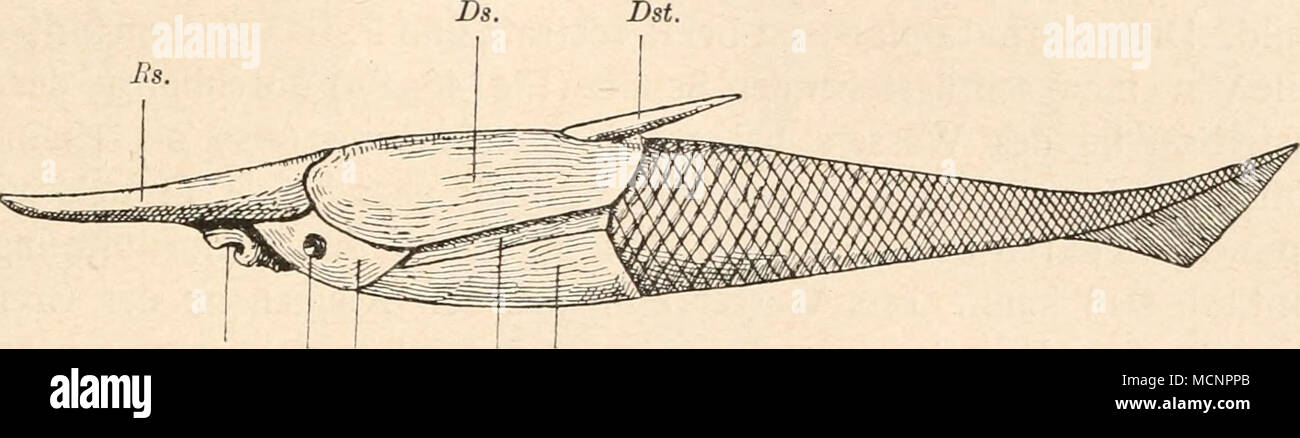 . M. A. Os. Op. Vs. Fig. 44. Rekonstruktion von Pteraspis Crouchi, Lank., aus dem Unterdevon Nord- frankreichs und Englands, von der Seite gesehen, in 2/3 nat. Gr. (Orig.-Rek. auf Grundlage der Abbildungen von A. Smith Woodward, R. H. Tra- quair und M. Leriche und unter Benützung der von M. Leriche ver- öffentlichten Photographien der Originale.) M. = Mundöffnung. Vs. = Ventralschild. A. = Auge. Ds. = Dorsalschild. Os. = Augenschild. Dst. = Dorsalstachel. Cp. = Cornutalschild. Rs. = Rostrum. Indessen spricht der Besitz des Rostrums dafür, daß z. B. Pteraspis Crouchi (F.g. 44, 45) eine bodenbew Stock Photohttps://www.alamy.com/image-license-details/?v=1https://www.alamy.com/m-a-os-op-vs-fig-44-rekonstruktion-von-pteraspis-crouchi-lank-aus-dem-unterdevon-nord-frankreichs-und-englands-von-der-seite-gesehen-in-23-nat-gr-orig-rek-auf-grundlage-der-abbildungen-von-a-smith-woodward-r-h-tra-quair-und-m-leriche-und-unter-bentzung-der-von-m-leriche-ver-ffentlichten-photographien-der-originale-m-=-mundffnung-vs-=-ventralschild-a-=-auge-ds-=-dorsalschild-os-=-augenschild-dst-=-dorsalstachel-cp-=-cornutalschild-rs-=-rostrum-indessen-spricht-der-besitz-des-rostrums-dafr-da-z-b-pteraspis-crouchi-fg-44-45-eine-bodenbew-image179958419.html
. M. A. Os. Op. Vs. Fig. 44. Rekonstruktion von Pteraspis Crouchi, Lank., aus dem Unterdevon Nord- frankreichs und Englands, von der Seite gesehen, in 2/3 nat. Gr. (Orig.-Rek. auf Grundlage der Abbildungen von A. Smith Woodward, R. H. Tra- quair und M. Leriche und unter Benützung der von M. Leriche ver- öffentlichten Photographien der Originale.) M. = Mundöffnung. Vs. = Ventralschild. A. = Auge. Ds. = Dorsalschild. Os. = Augenschild. Dst. = Dorsalstachel. Cp. = Cornutalschild. Rs. = Rostrum. Indessen spricht der Besitz des Rostrums dafür, daß z. B. Pteraspis Crouchi (F.g. 44, 45) eine bodenbew Stock Photohttps://www.alamy.com/image-license-details/?v=1https://www.alamy.com/m-a-os-op-vs-fig-44-rekonstruktion-von-pteraspis-crouchi-lank-aus-dem-unterdevon-nord-frankreichs-und-englands-von-der-seite-gesehen-in-23-nat-gr-orig-rek-auf-grundlage-der-abbildungen-von-a-smith-woodward-r-h-tra-quair-und-m-leriche-und-unter-bentzung-der-von-m-leriche-ver-ffentlichten-photographien-der-originale-m-=-mundffnung-vs-=-ventralschild-a-=-auge-ds-=-dorsalschild-os-=-augenschild-dst-=-dorsalstachel-cp-=-cornutalschild-rs-=-rostrum-indessen-spricht-der-besitz-des-rostrums-dafr-da-z-b-pteraspis-crouchi-fg-44-45-eine-bodenbew-image179958419.htmlRMMCNPPB–. M. A. Os. Op. Vs. Fig. 44. Rekonstruktion von Pteraspis Crouchi, Lank., aus dem Unterdevon Nord- frankreichs und Englands, von der Seite gesehen, in 2/3 nat. Gr. (Orig.-Rek. auf Grundlage der Abbildungen von A. Smith Woodward, R. H. Tra- quair und M. Leriche und unter Benützung der von M. Leriche ver- öffentlichten Photographien der Originale.) M. = Mundöffnung. Vs. = Ventralschild. A. = Auge. Ds. = Dorsalschild. Os. = Augenschild. Dst. = Dorsalstachel. Cp. = Cornutalschild. Rs. = Rostrum. Indessen spricht der Besitz des Rostrums dafür, daß z. B. Pteraspis Crouchi (F.g. 44, 45) eine bodenbew
![Infographic of the fish that lived during the Devonian period (416 million years ago). [QuarkXPress (.qxp); 4960x3188]. Stock Photo Infographic of the fish that lived during the Devonian period (416 million years ago). [QuarkXPress (.qxp); 4960x3188]. Stock Photo](https://c8.alamy.com/comp/2NECA4N/infographic-of-the-fish-that-lived-during-the-devonian-period-416-million-years-ago-quarkxpress-qxp-4960x3188-2NECA4N.jpg) Infographic of the fish that lived during the Devonian period (416 million years ago). [QuarkXPress (.qxp); 4960x3188]. Stock Photohttps://www.alamy.com/image-license-details/?v=1https://www.alamy.com/infographic-of-the-fish-that-lived-during-the-devonian-period-416-million-years-ago-quarkxpress-qxp-4960x3188-image525187621.html
Infographic of the fish that lived during the Devonian period (416 million years ago). [QuarkXPress (.qxp); 4960x3188]. Stock Photohttps://www.alamy.com/image-license-details/?v=1https://www.alamy.com/infographic-of-the-fish-that-lived-during-the-devonian-period-416-million-years-ago-quarkxpress-qxp-4960x3188-image525187621.htmlRM2NECA4N–Infographic of the fish that lived during the Devonian period (416 million years ago). [QuarkXPress (.qxp); 4960x3188].
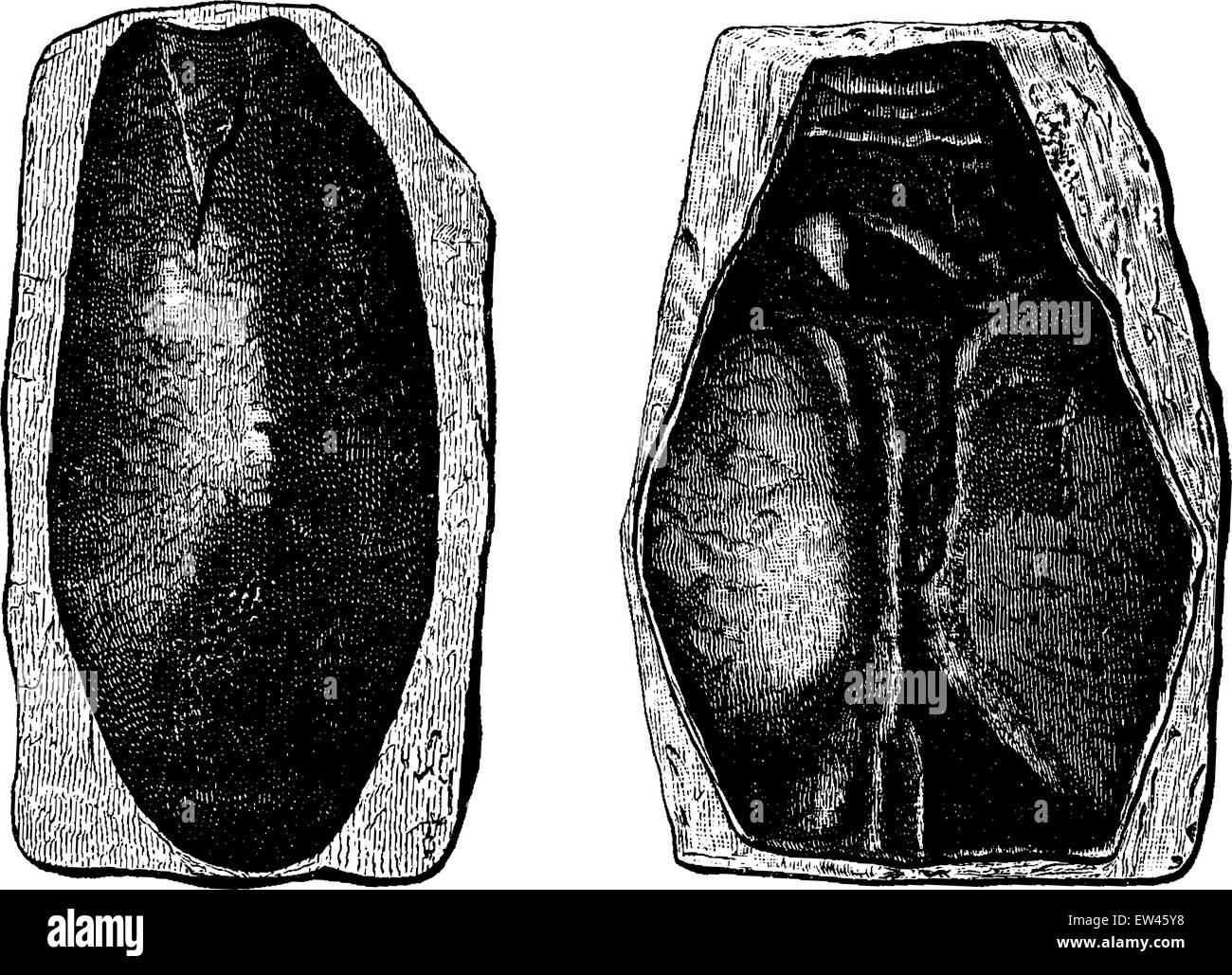 The first fish, Devonian period, Cephalaspis lloydii and Pteraspis rostratus, vintage engraved illustration. Earth before man – 1886. Stock Vectorhttps://www.alamy.com/image-license-details/?v=1https://www.alamy.com/stock-photo-the-first-fish-devonian-period-cephalaspis-lloydii-and-pteraspis-rostratus-84300364.html
The first fish, Devonian period, Cephalaspis lloydii and Pteraspis rostratus, vintage engraved illustration. Earth before man – 1886. Stock Vectorhttps://www.alamy.com/image-license-details/?v=1https://www.alamy.com/stock-photo-the-first-fish-devonian-period-cephalaspis-lloydii-and-pteraspis-rostratus-84300364.htmlRFEW45Y8–The first fish, Devonian period, Cephalaspis lloydii and Pteraspis rostratus, vintage engraved illustration. Earth before man – 1886.
 . The Cyathaspididae; a family of Silurian and Devonian jawless vertebrates. Cyathaspididae. 358 FIELDIANA: GEOLOGY, VOLUME 13. Fig. 110. Cyathaspis banksi (from Kiaer, 1932); specimens in collection of Geological Survey of Great Britain (X about 3). A, dorsal shield; B, ventral shield. orb, orbit. in Archegonaspis ludensis but this is apparently in error; the speci- men to which he refers (Brit. Mus. P. 3241) is Cyathaspis banksi. Kiaer (1932, p. 22) stated that Cyathaspis had a "real dorsal spine" comparable to that of Pteraspis, but judging from his own figure (op. cit, pi. 8, fig Stock Photohttps://www.alamy.com/image-license-details/?v=1https://www.alamy.com/the-cyathaspididae-a-family-of-silurian-and-devonian-jawless-vertebrates-cyathaspididae-358-fieldiana-geology-volume-13-fig-110-cyathaspis-banksi-from-kiaer-1932-specimens-in-collection-of-geological-survey-of-great-britain-x-about-3-a-dorsal-shield-b-ventral-shield-orb-orbit-in-archegonaspis-ludensis-but-this-is-apparently-in-error-the-speci-men-to-which-he-refers-brit-mus-p-3241-is-cyathaspis-banksi-kiaer-1932-p-22-stated-that-cyathaspis-had-a-quotreal-dorsal-spinequot-comparable-to-that-of-pteraspis-but-judging-from-his-own-figure-op-cit-pi-8-fig-image216309220.html
. The Cyathaspididae; a family of Silurian and Devonian jawless vertebrates. Cyathaspididae. 358 FIELDIANA: GEOLOGY, VOLUME 13. Fig. 110. Cyathaspis banksi (from Kiaer, 1932); specimens in collection of Geological Survey of Great Britain (X about 3). A, dorsal shield; B, ventral shield. orb, orbit. in Archegonaspis ludensis but this is apparently in error; the speci- men to which he refers (Brit. Mus. P. 3241) is Cyathaspis banksi. Kiaer (1932, p. 22) stated that Cyathaspis had a "real dorsal spine" comparable to that of Pteraspis, but judging from his own figure (op. cit, pi. 8, fig Stock Photohttps://www.alamy.com/image-license-details/?v=1https://www.alamy.com/the-cyathaspididae-a-family-of-silurian-and-devonian-jawless-vertebrates-cyathaspididae-358-fieldiana-geology-volume-13-fig-110-cyathaspis-banksi-from-kiaer-1932-specimens-in-collection-of-geological-survey-of-great-britain-x-about-3-a-dorsal-shield-b-ventral-shield-orb-orbit-in-archegonaspis-ludensis-but-this-is-apparently-in-error-the-speci-men-to-which-he-refers-brit-mus-p-3241-is-cyathaspis-banksi-kiaer-1932-p-22-stated-that-cyathaspis-had-a-quotreal-dorsal-spinequot-comparable-to-that-of-pteraspis-but-judging-from-his-own-figure-op-cit-pi-8-fig-image216309220.htmlRMPFWMH8–. The Cyathaspididae; a family of Silurian and Devonian jawless vertebrates. Cyathaspididae. 358 FIELDIANA: GEOLOGY, VOLUME 13. Fig. 110. Cyathaspis banksi (from Kiaer, 1932); specimens in collection of Geological Survey of Great Britain (X about 3). A, dorsal shield; B, ventral shield. orb, orbit. in Archegonaspis ludensis but this is apparently in error; the speci- men to which he refers (Brit. Mus. P. 3241) is Cyathaspis banksi. Kiaer (1932, p. 22) stated that Cyathaspis had a "real dorsal spine" comparable to that of Pteraspis, but judging from his own figure (op. cit, pi. 8, fig
![Catalogue of the fossil fishes in the British Museum (Natural History) .. . ?. ; lOVbodL-warcL deLefcllth.. We st, Newm an. imp. Coccosteidae. PLATE IX. Fig. Page 1. Pteraspis rostrata (Ag.); transverse section of dorsal shield, in outline.—Lower Old Red Sandstone ; Goldtops,Newport. Monmouthshire. [P. 5037.] 162 2. 2 a. Ditto ? ; ventral shield ( Scaphaspis lewisi), inferior and lateral aspects, two-thirds nat. size.—Lower OldRsd Sandstone; Kentchurch, Herefordshire. [P. 5861.] 164 3. Cyaihaspis banksi (Huxl. & Salt.); portion of dorsal shield, outer aspect, twice nat. size, showing ornament. Stock Photo Catalogue of the fossil fishes in the British Museum (Natural History) .. . ?. ; lOVbodL-warcL deLefcllth.. We st, Newm an. imp. Coccosteidae. PLATE IX. Fig. Page 1. Pteraspis rostrata (Ag.); transverse section of dorsal shield, in outline.—Lower Old Red Sandstone ; Goldtops,Newport. Monmouthshire. [P. 5037.] 162 2. 2 a. Ditto ? ; ventral shield ( Scaphaspis lewisi), inferior and lateral aspects, two-thirds nat. size.—Lower OldRsd Sandstone; Kentchurch, Herefordshire. [P. 5861.] 164 3. Cyaihaspis banksi (Huxl. & Salt.); portion of dorsal shield, outer aspect, twice nat. size, showing ornament. Stock Photo](https://c8.alamy.com/comp/2AJJ577/catalogue-of-the-fossil-fishes-in-the-british-museum-natural-history-lovbodl-warcl-delefcllth-we-st-newm-an-imp-coccosteidae-plate-ix-fig-page-1-pteraspis-rostrata-ag-transverse-section-of-dorsal-shield-in-outlinelower-old-red-sandstone-goldtopsnewport-monmouthshire-p-5037-162-2-2-a-ditto-ventral-shield-scaphaspis-lewisi-inferior-and-lateral-aspects-two-thirds-nat-sizelower-oldrsd-sandstone-kentchurch-herefordshire-p-5861-164-3-cyaihaspis-banksi-huxl-salt-portion-of-dorsal-shield-outer-aspect-twice-nat-size-showing-ornament-2AJJ577.jpg) Catalogue of the fossil fishes in the British Museum (Natural History) .. . ?. ; lOVbodL-warcL deLefcllth.. We st, Newm an. imp. Coccosteidae. PLATE IX. Fig. Page 1. Pteraspis rostrata (Ag.); transverse section of dorsal shield, in outline.—Lower Old Red Sandstone ; Goldtops,Newport. Monmouthshire. [P. 5037.] 162 2. 2 a. Ditto ? ; ventral shield ( Scaphaspis lewisi), inferior and lateral aspects, two-thirds nat. size.—Lower OldRsd Sandstone; Kentchurch, Herefordshire. [P. 5861.] 164 3. Cyaihaspis banksi (Huxl. & Salt.); portion of dorsal shield, outer aspect, twice nat. size, showing ornament. Stock Photohttps://www.alamy.com/image-license-details/?v=1https://www.alamy.com/catalogue-of-the-fossil-fishes-in-the-british-museum-natural-history-lovbodl-warcl-delefcllth-we-st-newm-an-imp-coccosteidae-plate-ix-fig-page-1-pteraspis-rostrata-ag-transverse-section-of-dorsal-shield-in-outlinelower-old-red-sandstone-goldtopsnewport-monmouthshire-p-5037-162-2-2-a-ditto-ventral-shield-scaphaspis-lewisi-inferior-and-lateral-aspects-two-thirds-nat-sizelower-oldrsd-sandstone-kentchurch-herefordshire-p-5861-164-3-cyaihaspis-banksi-huxl-salt-portion-of-dorsal-shield-outer-aspect-twice-nat-size-showing-ornament-image338460059.html
Catalogue of the fossil fishes in the British Museum (Natural History) .. . ?. ; lOVbodL-warcL deLefcllth.. We st, Newm an. imp. Coccosteidae. PLATE IX. Fig. Page 1. Pteraspis rostrata (Ag.); transverse section of dorsal shield, in outline.—Lower Old Red Sandstone ; Goldtops,Newport. Monmouthshire. [P. 5037.] 162 2. 2 a. Ditto ? ; ventral shield ( Scaphaspis lewisi), inferior and lateral aspects, two-thirds nat. size.—Lower OldRsd Sandstone; Kentchurch, Herefordshire. [P. 5861.] 164 3. Cyaihaspis banksi (Huxl. & Salt.); portion of dorsal shield, outer aspect, twice nat. size, showing ornament. Stock Photohttps://www.alamy.com/image-license-details/?v=1https://www.alamy.com/catalogue-of-the-fossil-fishes-in-the-british-museum-natural-history-lovbodl-warcl-delefcllth-we-st-newm-an-imp-coccosteidae-plate-ix-fig-page-1-pteraspis-rostrata-ag-transverse-section-of-dorsal-shield-in-outlinelower-old-red-sandstone-goldtopsnewport-monmouthshire-p-5037-162-2-2-a-ditto-ventral-shield-scaphaspis-lewisi-inferior-and-lateral-aspects-two-thirds-nat-sizelower-oldrsd-sandstone-kentchurch-herefordshire-p-5861-164-3-cyaihaspis-banksi-huxl-salt-portion-of-dorsal-shield-outer-aspect-twice-nat-size-showing-ornament-image338460059.htmlRM2AJJ577–Catalogue of the fossil fishes in the British Museum (Natural History) .. . ?. ; lOVbodL-warcL deLefcllth.. We st, Newm an. imp. Coccosteidae. PLATE IX. Fig. Page 1. Pteraspis rostrata (Ag.); transverse section of dorsal shield, in outline.—Lower Old Red Sandstone ; Goldtops,Newport. Monmouthshire. [P. 5037.] 162 2. 2 a. Ditto ? ; ventral shield ( Scaphaspis lewisi), inferior and lateral aspects, two-thirds nat. size.—Lower OldRsd Sandstone; Kentchurch, Herefordshire. [P. 5861.] 164 3. Cyaihaspis banksi (Huxl. & Salt.); portion of dorsal shield, outer aspect, twice nat. size, showing ornament.
 Archive image from page 106 of Die stämme der wirbeltiere (1919). Die stämme der wirbeltiere diestmmederwir00abel Year: 1919 Fig. 46. Fig. 45. Fig. 47. Fig. 45. Rekonstruktion von Pteraspis Crouchi, Lank., aus dem Unter- devon Nordfrankreichs und Englands, von oben gesehen. Fig. 46. Rekonstruktion von Pteraspis Gosseleti, Leriche, aus dem Ober- silur Nordfrankreichs, von oben gesehen. Fig. 47. Rekonstruktion von Pteraspis rostrata, Ag., aus dem Unter- devon Belgiens, Englands und Nordfrankreichs, von oben gesehen. (Alle 3 Figuren sind Orig.-Rekonstr. in 7/9 nat. Gr.) A. - Auge. Rs. = Rostrum Stock Photohttps://www.alamy.com/image-license-details/?v=1https://www.alamy.com/archive-image-from-page-106-of-die-stmme-der-wirbeltiere-1919-die-stmme-der-wirbeltiere-diestmmederwir00abel-year-1919-fig-46-fig-45-fig-47-fig-45-rekonstruktion-von-pteraspis-crouchi-lank-aus-dem-unter-devon-nordfrankreichs-und-englands-von-oben-gesehen-fig-46-rekonstruktion-von-pteraspis-gosseleti-leriche-aus-dem-ober-silur-nordfrankreichs-von-oben-gesehen-fig-47-rekonstruktion-von-pteraspis-rostrata-ag-aus-dem-unter-devon-belgiens-englands-und-nordfrankreichs-von-oben-gesehen-alle-3-figuren-sind-orig-rekonstr-in-79-nat-gr-a-auge-rs-=-rostrum-image243355454.html
Archive image from page 106 of Die stämme der wirbeltiere (1919). Die stämme der wirbeltiere diestmmederwir00abel Year: 1919 Fig. 46. Fig. 45. Fig. 47. Fig. 45. Rekonstruktion von Pteraspis Crouchi, Lank., aus dem Unter- devon Nordfrankreichs und Englands, von oben gesehen. Fig. 46. Rekonstruktion von Pteraspis Gosseleti, Leriche, aus dem Ober- silur Nordfrankreichs, von oben gesehen. Fig. 47. Rekonstruktion von Pteraspis rostrata, Ag., aus dem Unter- devon Belgiens, Englands und Nordfrankreichs, von oben gesehen. (Alle 3 Figuren sind Orig.-Rekonstr. in 7/9 nat. Gr.) A. - Auge. Rs. = Rostrum Stock Photohttps://www.alamy.com/image-license-details/?v=1https://www.alamy.com/archive-image-from-page-106-of-die-stmme-der-wirbeltiere-1919-die-stmme-der-wirbeltiere-diestmmederwir00abel-year-1919-fig-46-fig-45-fig-47-fig-45-rekonstruktion-von-pteraspis-crouchi-lank-aus-dem-unter-devon-nordfrankreichs-und-englands-von-oben-gesehen-fig-46-rekonstruktion-von-pteraspis-gosseleti-leriche-aus-dem-ober-silur-nordfrankreichs-von-oben-gesehen-fig-47-rekonstruktion-von-pteraspis-rostrata-ag-aus-dem-unter-devon-belgiens-englands-und-nordfrankreichs-von-oben-gesehen-alle-3-figuren-sind-orig-rekonstr-in-79-nat-gr-a-auge-rs-=-rostrum-image243355454.htmlRMT3WPA6–Archive image from page 106 of Die stämme der wirbeltiere (1919). Die stämme der wirbeltiere diestmmederwir00abel Year: 1919 Fig. 46. Fig. 45. Fig. 47. Fig. 45. Rekonstruktion von Pteraspis Crouchi, Lank., aus dem Unter- devon Nordfrankreichs und Englands, von oben gesehen. Fig. 46. Rekonstruktion von Pteraspis Gosseleti, Leriche, aus dem Ober- silur Nordfrankreichs, von oben gesehen. Fig. 47. Rekonstruktion von Pteraspis rostrata, Ag., aus dem Unter- devon Belgiens, Englands und Nordfrankreichs, von oben gesehen. (Alle 3 Figuren sind Orig.-Rekonstr. in 7/9 nat. Gr.) A. - Auge. Rs. = Rostrum
![Infographics about the Devonian period of the Palaeozoic era, when a great diversity of fish appeared. [QuarkXPress (.qxp); 4842x3248]. Stock Photo Infographics about the Devonian period of the Palaeozoic era, when a great diversity of fish appeared. [QuarkXPress (.qxp); 4842x3248]. Stock Photo](https://c8.alamy.com/comp/2NEBY3B/infographics-about-the-devonian-period-of-the-palaeozoic-era-when-a-great-diversity-of-fish-appeared-quarkxpress-qxp-4842x3248-2NEBY3B.jpg) Infographics about the Devonian period of the Palaeozoic era, when a great diversity of fish appeared. [QuarkXPress (.qxp); 4842x3248]. Stock Photohttps://www.alamy.com/image-license-details/?v=1https://www.alamy.com/infographics-about-the-devonian-period-of-the-palaeozoic-era-when-a-great-diversity-of-fish-appeared-quarkxpress-qxp-4842x3248-image525178959.html
Infographics about the Devonian period of the Palaeozoic era, when a great diversity of fish appeared. [QuarkXPress (.qxp); 4842x3248]. Stock Photohttps://www.alamy.com/image-license-details/?v=1https://www.alamy.com/infographics-about-the-devonian-period-of-the-palaeozoic-era-when-a-great-diversity-of-fish-appeared-quarkxpress-qxp-4842x3248-image525178959.htmlRM2NEBY3B–Infographics about the Devonian period of the Palaeozoic era, when a great diversity of fish appeared. [QuarkXPress (.qxp); 4842x3248].
 . A dictionary of the fossils of Pennsylvania and neighboring states named in the reports and catalogues of the survey ... Paleontology. Il ALt^oiit 576 See Pteraspis, for figure illustratiye of the internal struc- ture of shield. PalaeasterP dyeri. Meek, American Jour. Sci. Vol. 3,1872-. Pal. Ohio, Vol. 1, 1873, page 58, plate 4, fig. 2 a, part of ven- tral side of a specimen, part of disc, parts of rays, some mar- ginal and ambulacral pieces with spines, a few dorsal pieces of one ray distorted, the whole obscured by shale; 2 S, magniUed (X2) underside of part of one ray; 2 c, mag, (X2} part Stock Photohttps://www.alamy.com/image-license-details/?v=1https://www.alamy.com/a-dictionary-of-the-fossils-of-pennsylvania-and-neighboring-states-named-in-the-reports-and-catalogues-of-the-survey-paleontology-il-altoiit-576-see-pteraspis-for-figure-illustratiye-of-the-internal-struc-ture-of-shield-palaeasterp-dyeri-meek-american-jour-sci-vol-31872-pal-ohio-vol-1-1873-page-58-plate-4-fig-2-a-part-of-ven-tral-side-of-a-specimen-part-of-disc-parts-of-rays-some-mar-ginal-and-ambulacral-pieces-with-spines-a-few-dorsal-pieces-of-one-ray-distorted-the-whole-obscured-by-shale-2-s-magniued-x2-underside-of-part-of-one-ray-2-c-mag-x2-part-image216328942.html
. A dictionary of the fossils of Pennsylvania and neighboring states named in the reports and catalogues of the survey ... Paleontology. Il ALt^oiit 576 See Pteraspis, for figure illustratiye of the internal struc- ture of shield. PalaeasterP dyeri. Meek, American Jour. Sci. Vol. 3,1872-. Pal. Ohio, Vol. 1, 1873, page 58, plate 4, fig. 2 a, part of ven- tral side of a specimen, part of disc, parts of rays, some mar- ginal and ambulacral pieces with spines, a few dorsal pieces of one ray distorted, the whole obscured by shale; 2 S, magniUed (X2) underside of part of one ray; 2 c, mag, (X2} part Stock Photohttps://www.alamy.com/image-license-details/?v=1https://www.alamy.com/a-dictionary-of-the-fossils-of-pennsylvania-and-neighboring-states-named-in-the-reports-and-catalogues-of-the-survey-paleontology-il-altoiit-576-see-pteraspis-for-figure-illustratiye-of-the-internal-struc-ture-of-shield-palaeasterp-dyeri-meek-american-jour-sci-vol-31872-pal-ohio-vol-1-1873-page-58-plate-4-fig-2-a-part-of-ven-tral-side-of-a-specimen-part-of-disc-parts-of-rays-some-mar-ginal-and-ambulacral-pieces-with-spines-a-few-dorsal-pieces-of-one-ray-distorted-the-whole-obscured-by-shale-2-s-magniued-x2-underside-of-part-of-one-ray-2-c-mag-x2-part-image216328942.htmlRMPFXHNJ–. A dictionary of the fossils of Pennsylvania and neighboring states named in the reports and catalogues of the survey ... Paleontology. Il ALt^oiit 576 See Pteraspis, for figure illustratiye of the internal struc- ture of shield. PalaeasterP dyeri. Meek, American Jour. Sci. Vol. 3,1872-. Pal. Ohio, Vol. 1, 1873, page 58, plate 4, fig. 2 a, part of ven- tral side of a specimen, part of disc, parts of rays, some mar- ginal and ambulacral pieces with spines, a few dorsal pieces of one ray distorted, the whole obscured by shale; 2 S, magniUed (X2) underside of part of one ray; 2 c, mag, (X2} part
![Catalogue of the fossil fishes in the British Museum (Natural History) .. . nd in natural association ; and aScaphasjus-shs-iped shield occurs in the same beds as the type species.Until confirmatory evidence is obtained, we venture to regard thetransverse division of the lateral cornua in Diplaspis as accidental. Cyathaspis banksi (Huxley & Salter). [Plate IX. fig. 3.] 1856. Pteraspis banksii, Huxley & Salter, Quart. Journ. Geol. Soc.vol. xh. p. 100; pi. ii. fig. 2. PTERASPID^E. 171 1858. Pteraspis banksii, T. II. Huxley, ibid. vol. xiv. p. 274, pi. xv.1865. Cyathaspis banksii, E. R. Lankester Stock Photo Catalogue of the fossil fishes in the British Museum (Natural History) .. . nd in natural association ; and aScaphasjus-shs-iped shield occurs in the same beds as the type species.Until confirmatory evidence is obtained, we venture to regard thetransverse division of the lateral cornua in Diplaspis as accidental. Cyathaspis banksi (Huxley & Salter). [Plate IX. fig. 3.] 1856. Pteraspis banksii, Huxley & Salter, Quart. Journ. Geol. Soc.vol. xh. p. 100; pi. ii. fig. 2. PTERASPID^E. 171 1858. Pteraspis banksii, T. II. Huxley, ibid. vol. xiv. p. 274, pi. xv.1865. Cyathaspis banksii, E. R. Lankester Stock Photo](https://c8.alamy.com/comp/2AJK6JH/catalogue-of-the-fossil-fishes-in-the-british-museum-natural-history-nd-in-natural-association-and-ascaphasjus-shs-iped-shield-occurs-in-the-same-beds-as-the-type-speciesuntil-confirmatory-evidence-is-obtained-we-venture-to-regard-thetransverse-division-of-the-lateral-cornua-in-diplaspis-as-accidental-cyathaspis-banksi-huxley-salter-plate-ix-fig-3-1856-pteraspis-banksii-huxley-salter-quart-journ-geol-socvol-xh-p-100-pi-ii-fig-2-pteraspide-171-1858-pteraspis-banksii-t-ii-huxley-ibid-vol-xiv-p-274-pi-xv1865-cyathaspis-banksii-e-r-lankester-2AJK6JH.jpg) Catalogue of the fossil fishes in the British Museum (Natural History) .. . nd in natural association ; and aScaphasjus-shs-iped shield occurs in the same beds as the type species.Until confirmatory evidence is obtained, we venture to regard thetransverse division of the lateral cornua in Diplaspis as accidental. Cyathaspis banksi (Huxley & Salter). [Plate IX. fig. 3.] 1856. Pteraspis banksii, Huxley & Salter, Quart. Journ. Geol. Soc.vol. xh. p. 100; pi. ii. fig. 2. PTERASPID^E. 171 1858. Pteraspis banksii, T. II. Huxley, ibid. vol. xiv. p. 274, pi. xv.1865. Cyathaspis banksii, E. R. Lankester Stock Photohttps://www.alamy.com/image-license-details/?v=1https://www.alamy.com/catalogue-of-the-fossil-fishes-in-the-british-museum-natural-history-nd-in-natural-association-and-ascaphasjus-shs-iped-shield-occurs-in-the-same-beds-as-the-type-speciesuntil-confirmatory-evidence-is-obtained-we-venture-to-regard-thetransverse-division-of-the-lateral-cornua-in-diplaspis-as-accidental-cyathaspis-banksi-huxley-salter-plate-ix-fig-3-1856-pteraspis-banksii-huxley-salter-quart-journ-geol-socvol-xh-p-100-pi-ii-fig-2-pteraspide-171-1858-pteraspis-banksii-t-ii-huxley-ibid-vol-xiv-p-274-pi-xv1865-cyathaspis-banksii-e-r-lankester-image338483113.html
Catalogue of the fossil fishes in the British Museum (Natural History) .. . nd in natural association ; and aScaphasjus-shs-iped shield occurs in the same beds as the type species.Until confirmatory evidence is obtained, we venture to regard thetransverse division of the lateral cornua in Diplaspis as accidental. Cyathaspis banksi (Huxley & Salter). [Plate IX. fig. 3.] 1856. Pteraspis banksii, Huxley & Salter, Quart. Journ. Geol. Soc.vol. xh. p. 100; pi. ii. fig. 2. PTERASPID^E. 171 1858. Pteraspis banksii, T. II. Huxley, ibid. vol. xiv. p. 274, pi. xv.1865. Cyathaspis banksii, E. R. Lankester Stock Photohttps://www.alamy.com/image-license-details/?v=1https://www.alamy.com/catalogue-of-the-fossil-fishes-in-the-british-museum-natural-history-nd-in-natural-association-and-ascaphasjus-shs-iped-shield-occurs-in-the-same-beds-as-the-type-speciesuntil-confirmatory-evidence-is-obtained-we-venture-to-regard-thetransverse-division-of-the-lateral-cornua-in-diplaspis-as-accidental-cyathaspis-banksi-huxley-salter-plate-ix-fig-3-1856-pteraspis-banksii-huxley-salter-quart-journ-geol-socvol-xh-p-100-pi-ii-fig-2-pteraspide-171-1858-pteraspis-banksii-t-ii-huxley-ibid-vol-xiv-p-274-pi-xv1865-cyathaspis-banksii-e-r-lankester-image338483113.htmlRM2AJK6JH–Catalogue of the fossil fishes in the British Museum (Natural History) .. . nd in natural association ; and aScaphasjus-shs-iped shield occurs in the same beds as the type species.Until confirmatory evidence is obtained, we venture to regard thetransverse division of the lateral cornua in Diplaspis as accidental. Cyathaspis banksi (Huxley & Salter). [Plate IX. fig. 3.] 1856. Pteraspis banksii, Huxley & Salter, Quart. Journ. Geol. Soc.vol. xh. p. 100; pi. ii. fig. 2. PTERASPID^E. 171 1858. Pteraspis banksii, T. II. Huxley, ibid. vol. xiv. p. 274, pi. xv.1865. Cyathaspis banksii, E. R. Lankester
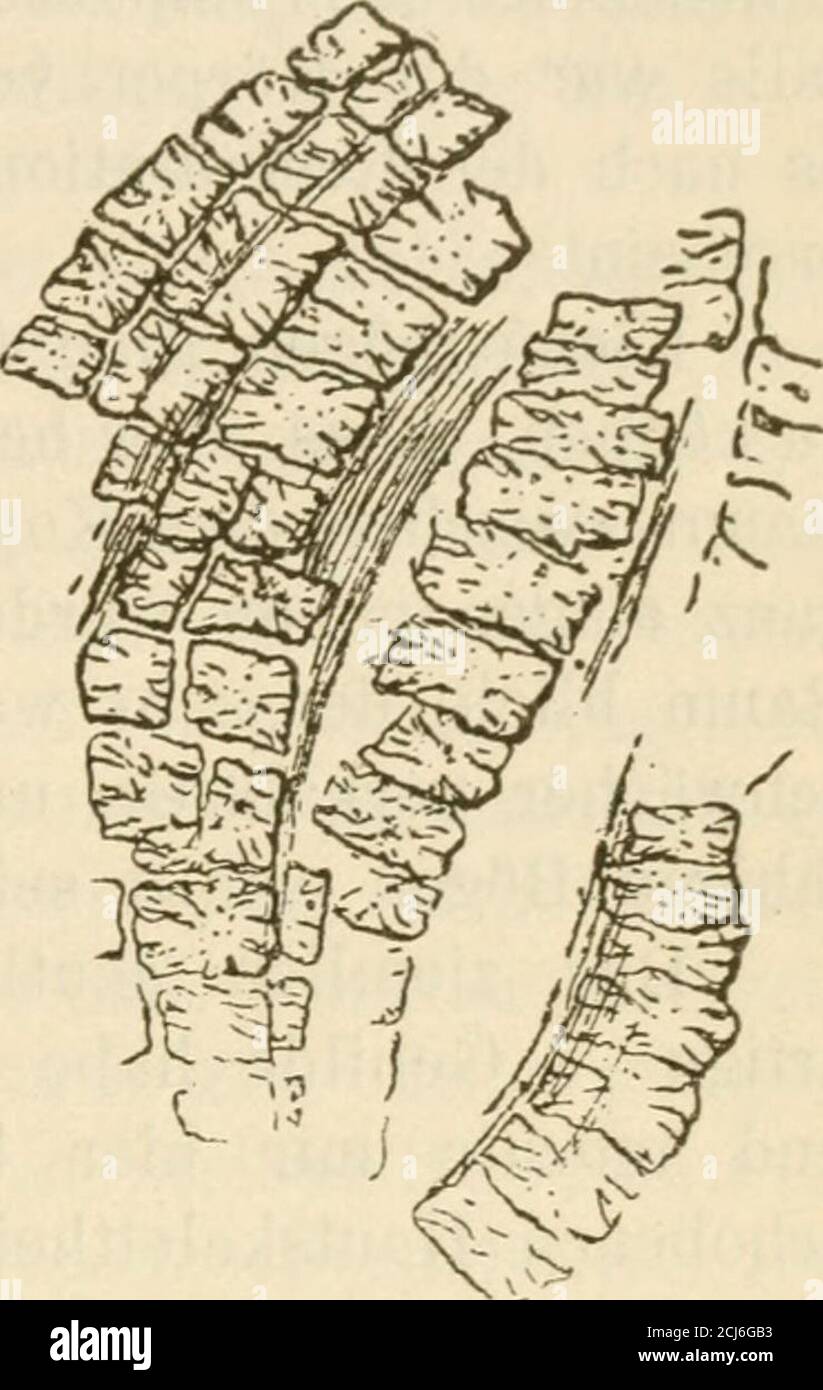 . Sitzungsberichte der Gesellschaft Naturforschender Freunde zu Berlin . vollkommen in die verkalkendeSubstanz aufgenommen wurden. Aus der mikroskopischenUntersuchung namentlich von üyathaspis, Pteraspis undCephalaspiden ist es mir unzweifelhaft geworden, dass diegrossblasige Structur dieser Hautverkalkungen zur echtenKnochenbildung hinüberleitet, indem phylogenetisch erst bei derVerdickung der interpulparen Kalkwände Knochenkörperchenin diese aufgenommen werden können, da sie einen gewissenRaum beanspruchen und ihr Einschluss ohne eine gewisseIntensität der Kalkausscheidung schwer verständlic Stock Photohttps://www.alamy.com/image-license-details/?v=1https://www.alamy.com/sitzungsberichte-der-gesellschaft-naturforschender-freunde-zu-berlin-vollkommen-in-die-verkalkendesubstanz-aufgenommen-wurden-aus-der-mikroskopischenuntersuchung-namentlich-von-yathaspis-pteraspis-undcephalaspiden-ist-es-mir-unzweifelhaft-geworden-dass-diegrossblasige-structur-dieser-hautverkalkungen-zur-echtenknochenbildung-hinberleitet-indem-phylogenetisch-erst-bei-derverdickung-der-interpulparen-kalkwnde-knochenkrperchenin-diese-aufgenommen-werden-knnen-da-sie-einen-gewissenraum-beanspruchen-und-ihr-einschluss-ohne-eine-gewisseintensitt-der-kalkausscheidung-schwer-verstndlic-image372626103.html
. Sitzungsberichte der Gesellschaft Naturforschender Freunde zu Berlin . vollkommen in die verkalkendeSubstanz aufgenommen wurden. Aus der mikroskopischenUntersuchung namentlich von üyathaspis, Pteraspis undCephalaspiden ist es mir unzweifelhaft geworden, dass diegrossblasige Structur dieser Hautverkalkungen zur echtenKnochenbildung hinüberleitet, indem phylogenetisch erst bei derVerdickung der interpulparen Kalkwände Knochenkörperchenin diese aufgenommen werden können, da sie einen gewissenRaum beanspruchen und ihr Einschluss ohne eine gewisseIntensität der Kalkausscheidung schwer verständlic Stock Photohttps://www.alamy.com/image-license-details/?v=1https://www.alamy.com/sitzungsberichte-der-gesellschaft-naturforschender-freunde-zu-berlin-vollkommen-in-die-verkalkendesubstanz-aufgenommen-wurden-aus-der-mikroskopischenuntersuchung-namentlich-von-yathaspis-pteraspis-undcephalaspiden-ist-es-mir-unzweifelhaft-geworden-dass-diegrossblasige-structur-dieser-hautverkalkungen-zur-echtenknochenbildung-hinberleitet-indem-phylogenetisch-erst-bei-derverdickung-der-interpulparen-kalkwnde-knochenkrperchenin-diese-aufgenommen-werden-knnen-da-sie-einen-gewissenraum-beanspruchen-und-ihr-einschluss-ohne-eine-gewisseintensitt-der-kalkausscheidung-schwer-verstndlic-image372626103.htmlRM2CJ6GB3–. Sitzungsberichte der Gesellschaft Naturforschender Freunde zu Berlin . vollkommen in die verkalkendeSubstanz aufgenommen wurden. Aus der mikroskopischenUntersuchung namentlich von üyathaspis, Pteraspis undCephalaspiden ist es mir unzweifelhaft geworden, dass diegrossblasige Structur dieser Hautverkalkungen zur echtenKnochenbildung hinüberleitet, indem phylogenetisch erst bei derVerdickung der interpulparen Kalkwände Knochenkörperchenin diese aufgenommen werden können, da sie einen gewissenRaum beanspruchen und ihr Einschluss ohne eine gewisseIntensität der Kalkausscheidung schwer verständlic
 . Bulletin of the British Museum (Natural History), Geology. . PTERASPIS. Please note that these images are extracted from scanned page images that may have been digitally enhanced for readability - coloration and appearance of these illustrations may not perfectly resemble the original work.. British Museum (Natural History). London : BM(NH) Stock Photohttps://www.alamy.com/image-license-details/?v=1https://www.alamy.com/bulletin-of-the-british-museum-natural-history-geology-pteraspis-please-note-that-these-images-are-extracted-from-scanned-page-images-that-may-have-been-digitally-enhanced-for-readability-coloration-and-appearance-of-these-illustrations-may-not-perfectly-resemble-the-original-work-british-museum-natural-history-london-bmnh-image233930798.html
. Bulletin of the British Museum (Natural History), Geology. . PTERASPIS. Please note that these images are extracted from scanned page images that may have been digitally enhanced for readability - coloration and appearance of these illustrations may not perfectly resemble the original work.. British Museum (Natural History). London : BM(NH) Stock Photohttps://www.alamy.com/image-license-details/?v=1https://www.alamy.com/bulletin-of-the-british-museum-natural-history-geology-pteraspis-please-note-that-these-images-are-extracted-from-scanned-page-images-that-may-have-been-digitally-enhanced-for-readability-coloration-and-appearance-of-these-illustrations-may-not-perfectly-resemble-the-original-work-british-museum-natural-history-london-bmnh-image233930798.htmlRMRGGD3A–. Bulletin of the British Museum (Natural History), Geology. . PTERASPIS. Please note that these images are extracted from scanned page images that may have been digitally enhanced for readability - coloration and appearance of these illustrations may not perfectly resemble the original work.. British Museum (Natural History). London : BM(NH)
 . Bulletin of the British Museum (Natural History), Geology. . PTERASPIS. Please note that these images are extracted from scanned page images that may have been digitally enhanced for readability - coloration and appearance of these illustrations may not perfectly resemble the original work.. British Museum (Natural History). London : BM(NH) Stock Photohttps://www.alamy.com/image-license-details/?v=1https://www.alamy.com/bulletin-of-the-british-museum-natural-history-geology-pteraspis-please-note-that-these-images-are-extracted-from-scanned-page-images-that-may-have-been-digitally-enhanced-for-readability-coloration-and-appearance-of-these-illustrations-may-not-perfectly-resemble-the-original-work-british-museum-natural-history-london-bmnh-image233978176.html
. Bulletin of the British Museum (Natural History), Geology. . PTERASPIS. Please note that these images are extracted from scanned page images that may have been digitally enhanced for readability - coloration and appearance of these illustrations may not perfectly resemble the original work.. British Museum (Natural History). London : BM(NH) Stock Photohttps://www.alamy.com/image-license-details/?v=1https://www.alamy.com/bulletin-of-the-british-museum-natural-history-geology-pteraspis-please-note-that-these-images-are-extracted-from-scanned-page-images-that-may-have-been-digitally-enhanced-for-readability-coloration-and-appearance-of-these-illustrations-may-not-perfectly-resemble-the-original-work-british-museum-natural-history-london-bmnh-image233978176.htmlRMRGJHFC–. Bulletin of the British Museum (Natural History), Geology. . PTERASPIS. Please note that these images are extracted from scanned page images that may have been digitally enhanced for readability - coloration and appearance of these illustrations may not perfectly resemble the original work.. British Museum (Natural History). London : BM(NH)
 . Bulletin of the British Museum (Natural History), Geology. . PTERASPIS. Please note that these images are extracted from scanned page images that may have been digitally enhanced for readability - coloration and appearance of these illustrations may not perfectly resemble the original work.. British Museum (Natural History). London : BM(NH) Stock Photohttps://www.alamy.com/image-license-details/?v=1https://www.alamy.com/bulletin-of-the-british-museum-natural-history-geology-pteraspis-please-note-that-these-images-are-extracted-from-scanned-page-images-that-may-have-been-digitally-enhanced-for-readability-coloration-and-appearance-of-these-illustrations-may-not-perfectly-resemble-the-original-work-british-museum-natural-history-london-bmnh-image233930760.html
. Bulletin of the British Museum (Natural History), Geology. . PTERASPIS. Please note that these images are extracted from scanned page images that may have been digitally enhanced for readability - coloration and appearance of these illustrations may not perfectly resemble the original work.. British Museum (Natural History). London : BM(NH) Stock Photohttps://www.alamy.com/image-license-details/?v=1https://www.alamy.com/bulletin-of-the-british-museum-natural-history-geology-pteraspis-please-note-that-these-images-are-extracted-from-scanned-page-images-that-may-have-been-digitally-enhanced-for-readability-coloration-and-appearance-of-these-illustrations-may-not-perfectly-resemble-the-original-work-british-museum-natural-history-london-bmnh-image233930760.htmlRMRGGD20–. Bulletin of the British Museum (Natural History), Geology. . PTERASPIS. Please note that these images are extracted from scanned page images that may have been digitally enhanced for readability - coloration and appearance of these illustrations may not perfectly resemble the original work.. British Museum (Natural History). London : BM(NH)
 . Bulletin of the British Museum (Natural History), Geology. 4a. PTERASPIS, ACANTHODIANS and ARTHRODIRES. Please note that these images are extracted from scanned page images that may have been digitally enhanced for readability - coloration and appearance of these illustrations may not perfectly resemble the original work.. British Museum (Natural History). London : BM(NH) Stock Photohttps://www.alamy.com/image-license-details/?v=1https://www.alamy.com/bulletin-of-the-british-museum-natural-history-geology-4a-pteraspis-acanthodians-and-arthrodires-please-note-that-these-images-are-extracted-from-scanned-page-images-that-may-have-been-digitally-enhanced-for-readability-coloration-and-appearance-of-these-illustrations-may-not-perfectly-resemble-the-original-work-british-museum-natural-history-london-bmnh-image233977966.html
. Bulletin of the British Museum (Natural History), Geology. 4a. PTERASPIS, ACANTHODIANS and ARTHRODIRES. Please note that these images are extracted from scanned page images that may have been digitally enhanced for readability - coloration and appearance of these illustrations may not perfectly resemble the original work.. British Museum (Natural History). London : BM(NH) Stock Photohttps://www.alamy.com/image-license-details/?v=1https://www.alamy.com/bulletin-of-the-british-museum-natural-history-geology-4a-pteraspis-acanthodians-and-arthrodires-please-note-that-these-images-are-extracted-from-scanned-page-images-that-may-have-been-digitally-enhanced-for-readability-coloration-and-appearance-of-these-illustrations-may-not-perfectly-resemble-the-original-work-british-museum-natural-history-london-bmnh-image233977966.htmlRMRGJH7X–. Bulletin of the British Museum (Natural History), Geology. 4a. PTERASPIS, ACANTHODIANS and ARTHRODIRES. Please note that these images are extracted from scanned page images that may have been digitally enhanced for readability - coloration and appearance of these illustrations may not perfectly resemble the original work.. British Museum (Natural History). London : BM(NH)
 . Bulletin of the British Museum (Natural History), Geology. ^*|#f. â ^f.;! PTERASPIS. Please note that these images are extracted from scanned page images that may have been digitally enhanced for readability - coloration and appearance of these illustrations may not perfectly resemble the original work.. British Museum (Natural History). London : BM(NH) Stock Photohttps://www.alamy.com/image-license-details/?v=1https://www.alamy.com/bulletin-of-the-british-museum-natural-history-geology-f-f!-pteraspis-please-note-that-these-images-are-extracted-from-scanned-page-images-that-may-have-been-digitally-enhanced-for-readability-coloration-and-appearance-of-these-illustrations-may-not-perfectly-resemble-the-original-work-british-museum-natural-history-london-bmnh-image233978361.html
. Bulletin of the British Museum (Natural History), Geology. ^*|#f. â ^f.;! PTERASPIS. Please note that these images are extracted from scanned page images that may have been digitally enhanced for readability - coloration and appearance of these illustrations may not perfectly resemble the original work.. British Museum (Natural History). London : BM(NH) Stock Photohttps://www.alamy.com/image-license-details/?v=1https://www.alamy.com/bulletin-of-the-british-museum-natural-history-geology-f-f!-pteraspis-please-note-that-these-images-are-extracted-from-scanned-page-images-that-may-have-been-digitally-enhanced-for-readability-coloration-and-appearance-of-these-illustrations-may-not-perfectly-resemble-the-original-work-british-museum-natural-history-london-bmnh-image233978361.htmlRMRGJHP1–. Bulletin of the British Museum (Natural History), Geology. ^*|#f. â ^f.;! PTERASPIS. Please note that these images are extracted from scanned page images that may have been digitally enhanced for readability - coloration and appearance of these illustrations may not perfectly resemble the original work.. British Museum (Natural History). London : BM(NH)
 . Bulletin of the British Museum (Natural History), Geology. . ^':. mk CEPHALASPIS & PTERASPIS. Please note that these images are extracted from scanned page images that may have been digitally enhanced for readability - coloration and appearance of these illustrations may not perfectly resemble the original work.. British Museum (Natural History). London : BM(NH) Stock Photohttps://www.alamy.com/image-license-details/?v=1https://www.alamy.com/bulletin-of-the-british-museum-natural-history-geology-mk-cephalaspis-amp-pteraspis-please-note-that-these-images-are-extracted-from-scanned-page-images-that-may-have-been-digitally-enhanced-for-readability-coloration-and-appearance-of-these-illustrations-may-not-perfectly-resemble-the-original-work-british-museum-natural-history-london-bmnh-image233978271.html
. Bulletin of the British Museum (Natural History), Geology. . ^':. mk CEPHALASPIS & PTERASPIS. Please note that these images are extracted from scanned page images that may have been digitally enhanced for readability - coloration and appearance of these illustrations may not perfectly resemble the original work.. British Museum (Natural History). London : BM(NH) Stock Photohttps://www.alamy.com/image-license-details/?v=1https://www.alamy.com/bulletin-of-the-british-museum-natural-history-geology-mk-cephalaspis-amp-pteraspis-please-note-that-these-images-are-extracted-from-scanned-page-images-that-may-have-been-digitally-enhanced-for-readability-coloration-and-appearance-of-these-illustrations-may-not-perfectly-resemble-the-original-work-british-museum-natural-history-london-bmnh-image233978271.htmlRMRGJHJR–. Bulletin of the British Museum (Natural History), Geology. . ^':. mk CEPHALASPIS & PTERASPIS. Please note that these images are extracted from scanned page images that may have been digitally enhanced for readability - coloration and appearance of these illustrations may not perfectly resemble the original work.. British Museum (Natural History). London : BM(NH)
 . Bulletin of the British Museum (Natural History), Geology. Bull. B.M. (N.H.) Geol. 5, 7 PLATE 34. PTERASPIS. Please note that these images are extracted from scanned page images that may have been digitally enhanced for readability - coloration and appearance of these illustrations may not perfectly resemble the original work.. British Museum (Natural History). London : BM(NH) Stock Photohttps://www.alamy.com/image-license-details/?v=1https://www.alamy.com/bulletin-of-the-british-museum-natural-history-geology-bull-bm-nh-geol-5-7-plate-34-pteraspis-please-note-that-these-images-are-extracted-from-scanned-page-images-that-may-have-been-digitally-enhanced-for-readability-coloration-and-appearance-of-these-illustrations-may-not-perfectly-resemble-the-original-work-british-museum-natural-history-london-bmnh-image233978426.html
. Bulletin of the British Museum (Natural History), Geology. Bull. B.M. (N.H.) Geol. 5, 7 PLATE 34. PTERASPIS. Please note that these images are extracted from scanned page images that may have been digitally enhanced for readability - coloration and appearance of these illustrations may not perfectly resemble the original work.. British Museum (Natural History). London : BM(NH) Stock Photohttps://www.alamy.com/image-license-details/?v=1https://www.alamy.com/bulletin-of-the-british-museum-natural-history-geology-bull-bm-nh-geol-5-7-plate-34-pteraspis-please-note-that-these-images-are-extracted-from-scanned-page-images-that-may-have-been-digitally-enhanced-for-readability-coloration-and-appearance-of-these-illustrations-may-not-perfectly-resemble-the-original-work-british-museum-natural-history-london-bmnh-image233978426.htmlRMRGJHTA–. Bulletin of the British Museum (Natural History), Geology. Bull. B.M. (N.H.) Geol. 5, 7 PLATE 34. PTERASPIS. Please note that these images are extracted from scanned page images that may have been digitally enhanced for readability - coloration and appearance of these illustrations may not perfectly resemble the original work.. British Museum (Natural History). London : BM(NH)
 . Bulletin of the British Museum (Natural History), Geology. 10 15 19 20. 39 40 41 42 43 44 PTERASPIS. Please note that these images are extracted from scanned page images that may have been digitally enhanced for readability - coloration and appearance of these illustrations may not perfectly resemble the original work.. British Museum (Natural History). London : BM(NH) Stock Photohttps://www.alamy.com/image-license-details/?v=1https://www.alamy.com/bulletin-of-the-british-museum-natural-history-geology-10-15-19-20-39-40-41-42-43-44-pteraspis-please-note-that-these-images-are-extracted-from-scanned-page-images-that-may-have-been-digitally-enhanced-for-readability-coloration-and-appearance-of-these-illustrations-may-not-perfectly-resemble-the-original-work-british-museum-natural-history-london-bmnh-image233978098.html
. Bulletin of the British Museum (Natural History), Geology. 10 15 19 20. 39 40 41 42 43 44 PTERASPIS. Please note that these images are extracted from scanned page images that may have been digitally enhanced for readability - coloration and appearance of these illustrations may not perfectly resemble the original work.. British Museum (Natural History). London : BM(NH) Stock Photohttps://www.alamy.com/image-license-details/?v=1https://www.alamy.com/bulletin-of-the-british-museum-natural-history-geology-10-15-19-20-39-40-41-42-43-44-pteraspis-please-note-that-these-images-are-extracted-from-scanned-page-images-that-may-have-been-digitally-enhanced-for-readability-coloration-and-appearance-of-these-illustrations-may-not-perfectly-resemble-the-original-work-british-museum-natural-history-london-bmnh-image233978098.htmlRMRGJHCJ–. Bulletin of the British Museum (Natural History), Geology. 10 15 19 20. 39 40 41 42 43 44 PTERASPIS. Please note that these images are extracted from scanned page images that may have been digitally enhanced for readability - coloration and appearance of these illustrations may not perfectly resemble the original work.. British Museum (Natural History). London : BM(NH)
 . Bulletin of the British Museum (Natural History), Geology. Bull. B.M. (N.H.) Geo!. 5, 7 PLATE 37. ORAL PLATES OF PTERASPIS. Please note that these images are extracted from scanned page images that may have been digitally enhanced for readability - coloration and appearance of these illustrations may not perfectly resemble the original work.. British Museum (Natural History). London : BM(NH) Stock Photohttps://www.alamy.com/image-license-details/?v=1https://www.alamy.com/bulletin-of-the-british-museum-natural-history-geology-bull-bm-nh-geo!-5-7-plate-37-oral-plates-of-pteraspis-please-note-that-these-images-are-extracted-from-scanned-page-images-that-may-have-been-digitally-enhanced-for-readability-coloration-and-appearance-of-these-illustrations-may-not-perfectly-resemble-the-original-work-british-museum-natural-history-london-bmnh-image233978259.html
. Bulletin of the British Museum (Natural History), Geology. Bull. B.M. (N.H.) Geo!. 5, 7 PLATE 37. ORAL PLATES OF PTERASPIS. Please note that these images are extracted from scanned page images that may have been digitally enhanced for readability - coloration and appearance of these illustrations may not perfectly resemble the original work.. British Museum (Natural History). London : BM(NH) Stock Photohttps://www.alamy.com/image-license-details/?v=1https://www.alamy.com/bulletin-of-the-british-museum-natural-history-geology-bull-bm-nh-geo!-5-7-plate-37-oral-plates-of-pteraspis-please-note-that-these-images-are-extracted-from-scanned-page-images-that-may-have-been-digitally-enhanced-for-readability-coloration-and-appearance-of-these-illustrations-may-not-perfectly-resemble-the-original-work-british-museum-natural-history-london-bmnh-image233978259.htmlRMRGJHJB–. Bulletin of the British Museum (Natural History), Geology. Bull. B.M. (N.H.) Geo!. 5, 7 PLATE 37. ORAL PLATES OF PTERASPIS. Please note that these images are extracted from scanned page images that may have been digitally enhanced for readability - coloration and appearance of these illustrations may not perfectly resemble the original work.. British Museum (Natural History). London : BM(NH)
 . Bulletin of the British Museum (Natural History), Geology. Bull. B.M. {N.H.) Geol. I, 3 PLATE. PTERASPIS [SIMOPTERASPIS) LEATHENSIS White. Please note that these images are extracted from scanned page images that may have been digitally enhanced for readability - coloration and appearance of these illustrations may not perfectly resemble the original work.. British Museum (Natural History). London : BM(NH) Stock Photohttps://www.alamy.com/image-license-details/?v=1https://www.alamy.com/bulletin-of-the-british-museum-natural-history-geology-bull-bm-nh-geol-i-3-plate-pteraspis-simopteraspis-leathensis-white-please-note-that-these-images-are-extracted-from-scanned-page-images-that-may-have-been-digitally-enhanced-for-readability-coloration-and-appearance-of-these-illustrations-may-not-perfectly-resemble-the-original-work-british-museum-natural-history-london-bmnh-image233996057.html
. Bulletin of the British Museum (Natural History), Geology. Bull. B.M. {N.H.) Geol. I, 3 PLATE. PTERASPIS [SIMOPTERASPIS) LEATHENSIS White. Please note that these images are extracted from scanned page images that may have been digitally enhanced for readability - coloration and appearance of these illustrations may not perfectly resemble the original work.. British Museum (Natural History). London : BM(NH) Stock Photohttps://www.alamy.com/image-license-details/?v=1https://www.alamy.com/bulletin-of-the-british-museum-natural-history-geology-bull-bm-nh-geol-i-3-plate-pteraspis-simopteraspis-leathensis-white-please-note-that-these-images-are-extracted-from-scanned-page-images-that-may-have-been-digitally-enhanced-for-readability-coloration-and-appearance-of-these-illustrations-may-not-perfectly-resemble-the-original-work-british-museum-natural-history-london-bmnh-image233996057.htmlRMRGKCA1–. Bulletin of the British Museum (Natural History), Geology. Bull. B.M. {N.H.) Geol. I, 3 PLATE. PTERASPIS [SIMOPTERASPIS) LEATHENSIS White. Please note that these images are extracted from scanned page images that may have been digitally enhanced for readability - coloration and appearance of these illustrations may not perfectly resemble the original work.. British Museum (Natural History). London : BM(NH)
 . Bulletin of the British Museum (Natural History), Geology. Bull. B.M. (N.H.) Geol. 5, 7 PLATE 33 %. PTERASPIS. Please note that these images are extracted from scanned page images that may have been digitally enhanced for readability - coloration and appearance of these illustrations may not perfectly resemble the original work.. British Museum (Natural History). London : BM(NH) Stock Photohttps://www.alamy.com/image-license-details/?v=1https://www.alamy.com/bulletin-of-the-british-museum-natural-history-geology-bull-bm-nh-geol-5-7-plate-33-pteraspis-please-note-that-these-images-are-extracted-from-scanned-page-images-that-may-have-been-digitally-enhanced-for-readability-coloration-and-appearance-of-these-illustrations-may-not-perfectly-resemble-the-original-work-british-museum-natural-history-london-bmnh-image233978447.html
. Bulletin of the British Museum (Natural History), Geology. Bull. B.M. (N.H.) Geol. 5, 7 PLATE 33 %. PTERASPIS. Please note that these images are extracted from scanned page images that may have been digitally enhanced for readability - coloration and appearance of these illustrations may not perfectly resemble the original work.. British Museum (Natural History). London : BM(NH) Stock Photohttps://www.alamy.com/image-license-details/?v=1https://www.alamy.com/bulletin-of-the-british-museum-natural-history-geology-bull-bm-nh-geol-5-7-plate-33-pteraspis-please-note-that-these-images-are-extracted-from-scanned-page-images-that-may-have-been-digitally-enhanced-for-readability-coloration-and-appearance-of-these-illustrations-may-not-perfectly-resemble-the-original-work-british-museum-natural-history-london-bmnh-image233978447.htmlRMRGJHW3–. Bulletin of the British Museum (Natural History), Geology. Bull. B.M. (N.H.) Geol. 5, 7 PLATE 33 %. PTERASPIS. Please note that these images are extracted from scanned page images that may have been digitally enhanced for readability - coloration and appearance of these illustrations may not perfectly resemble the original work.. British Museum (Natural History). London : BM(NH)
 . Chordate morphology. Morphology (Animals); Chordata. BIRKENIA. PTERASPIS Figure 5-29. Lateral views of reconstructions of fossil ognaths: A, osteostracan, B, anospid, and C, heterostrocan. (Partly after Stensio, Jorvik, and Romer) 134 • THE HEAD SKELETON OF FISHES. Please note that these images are extracted from scanned page images that may have been digitally enhanced for readability - coloration and appearance of these illustrations may not perfectly resemble the original work.. Jollie, Malcolm. New York, Reinhold Stock Photohttps://www.alamy.com/image-license-details/?v=1https://www.alamy.com/chordate-morphology-morphology-animals-chordata-birkenia-pteraspis-figure-5-29-lateral-views-of-reconstructions-of-fossil-ognaths-a-osteostracan-b-anospid-and-c-heterostrocan-partly-after-stensio-jorvik-and-romer-134-the-head-skeleton-of-fishes-please-note-that-these-images-are-extracted-from-scanned-page-images-that-may-have-been-digitally-enhanced-for-readability-coloration-and-appearance-of-these-illustrations-may-not-perfectly-resemble-the-original-work-jollie-malcolm-new-york-reinhold-image234908343.html
. Chordate morphology. Morphology (Animals); Chordata. BIRKENIA. PTERASPIS Figure 5-29. Lateral views of reconstructions of fossil ognaths: A, osteostracan, B, anospid, and C, heterostrocan. (Partly after Stensio, Jorvik, and Romer) 134 • THE HEAD SKELETON OF FISHES. Please note that these images are extracted from scanned page images that may have been digitally enhanced for readability - coloration and appearance of these illustrations may not perfectly resemble the original work.. Jollie, Malcolm. New York, Reinhold Stock Photohttps://www.alamy.com/image-license-details/?v=1https://www.alamy.com/chordate-morphology-morphology-animals-chordata-birkenia-pteraspis-figure-5-29-lateral-views-of-reconstructions-of-fossil-ognaths-a-osteostracan-b-anospid-and-c-heterostrocan-partly-after-stensio-jorvik-and-romer-134-the-head-skeleton-of-fishes-please-note-that-these-images-are-extracted-from-scanned-page-images-that-may-have-been-digitally-enhanced-for-readability-coloration-and-appearance-of-these-illustrations-may-not-perfectly-resemble-the-original-work-jollie-malcolm-new-york-reinhold-image234908343.htmlRMRJ4YYK–. Chordate morphology. Morphology (Animals); Chordata. BIRKENIA. PTERASPIS Figure 5-29. Lateral views of reconstructions of fossil ognaths: A, osteostracan, B, anospid, and C, heterostrocan. (Partly after Stensio, Jorvik, and Romer) 134 • THE HEAD SKELETON OF FISHES. Please note that these images are extracted from scanned page images that may have been digitally enhanced for readability - coloration and appearance of these illustrations may not perfectly resemble the original work.. Jollie, Malcolm. New York, Reinhold
 . Bulletin of the British Museum (Natural History), Geology. THE OLD RED SANDSTONE OF BROWN CLEE HILL 277 that clear, but as in the similar case of Pteraspis leathensis White (1950 : 79), there must be some uncertainty as to the relative sizes of the scales and plates owing to the possibility of water-sorting. As in the Pteraspis, however, the relative maximum sizes of plates and scales do not vary substantially from one locality to another. "iil«. Please note that these images are extracted from scanned page images that may have been digitally enhanced for readability - coloration and ap Stock Photohttps://www.alamy.com/image-license-details/?v=1https://www.alamy.com/bulletin-of-the-british-museum-natural-history-geology-the-old-red-sandstone-of-brown-clee-hill-277-that-clear-but-as-in-the-similar-case-of-pteraspis-leathensis-white-1950-79-there-must-be-some-uncertainty-as-to-the-relative-sizes-of-the-scales-and-plates-owing-to-the-possibility-of-water-sorting-as-in-the-pteraspis-however-the-relative-maximum-sizes-of-plates-and-scales-do-not-vary-substantially-from-one-locality-to-another-quotiil-please-note-that-these-images-are-extracted-from-scanned-page-images-that-may-have-been-digitally-enhanced-for-readability-coloration-and-ap-image233986629.html
. Bulletin of the British Museum (Natural History), Geology. THE OLD RED SANDSTONE OF BROWN CLEE HILL 277 that clear, but as in the similar case of Pteraspis leathensis White (1950 : 79), there must be some uncertainty as to the relative sizes of the scales and plates owing to the possibility of water-sorting. As in the Pteraspis, however, the relative maximum sizes of plates and scales do not vary substantially from one locality to another. "iil«. Please note that these images are extracted from scanned page images that may have been digitally enhanced for readability - coloration and ap Stock Photohttps://www.alamy.com/image-license-details/?v=1https://www.alamy.com/bulletin-of-the-british-museum-natural-history-geology-the-old-red-sandstone-of-brown-clee-hill-277-that-clear-but-as-in-the-similar-case-of-pteraspis-leathensis-white-1950-79-there-must-be-some-uncertainty-as-to-the-relative-sizes-of-the-scales-and-plates-owing-to-the-possibility-of-water-sorting-as-in-the-pteraspis-however-the-relative-maximum-sizes-of-plates-and-scales-do-not-vary-substantially-from-one-locality-to-another-quotiil-please-note-that-these-images-are-extracted-from-scanned-page-images-that-may-have-been-digitally-enhanced-for-readability-coloration-and-ap-image233986629.htmlRMRGK099–. Bulletin of the British Museum (Natural History), Geology. THE OLD RED SANDSTONE OF BROWN CLEE HILL 277 that clear, but as in the similar case of Pteraspis leathensis White (1950 : 79), there must be some uncertainty as to the relative sizes of the scales and plates owing to the possibility of water-sorting. As in the Pteraspis, however, the relative maximum sizes of plates and scales do not vary substantially from one locality to another. "iil«. Please note that these images are extracted from scanned page images that may have been digitally enhanced for readability - coloration and ap
 . A manual of zoology for the use of students : with a general introduction on the principles of zoology . Zoology. GANOIDEI. 393 the pectoral fins is the peculiar characteristic of the Pterichthys. These were in the form of two long curved spines, something like wings, covered by finely-tuberculated ganoid plates. From their form, they cannot have been of much use in swimming; but they probably, as suggested by Owen, enabled the fish to shuffle along the sandy bottom of the sea, if left dry at low water. b. Pteraspis.—In most respects this genus was not unlike Pterichthys, but it did not poss Stock Photohttps://www.alamy.com/image-license-details/?v=1https://www.alamy.com/a-manual-of-zoology-for-the-use-of-students-with-a-general-introduction-on-the-principles-of-zoology-zoology-ganoidei-393-the-pectoral-fins-is-the-peculiar-characteristic-of-the-pterichthys-these-were-in-the-form-of-two-long-curved-spines-something-like-wings-covered-by-finely-tuberculated-ganoid-plates-from-their-form-they-cannot-have-been-of-much-use-in-swimming-but-they-probably-as-suggested-by-owen-enabled-the-fish-to-shuffle-along-the-sandy-bottom-of-the-sea-if-left-dry-at-low-water-b-pteraspisin-most-respects-this-genus-was-not-unlike-pterichthys-but-it-did-not-poss-image232158299.html
. A manual of zoology for the use of students : with a general introduction on the principles of zoology . Zoology. GANOIDEI. 393 the pectoral fins is the peculiar characteristic of the Pterichthys. These were in the form of two long curved spines, something like wings, covered by finely-tuberculated ganoid plates. From their form, they cannot have been of much use in swimming; but they probably, as suggested by Owen, enabled the fish to shuffle along the sandy bottom of the sea, if left dry at low water. b. Pteraspis.—In most respects this genus was not unlike Pterichthys, but it did not poss Stock Photohttps://www.alamy.com/image-license-details/?v=1https://www.alamy.com/a-manual-of-zoology-for-the-use-of-students-with-a-general-introduction-on-the-principles-of-zoology-zoology-ganoidei-393-the-pectoral-fins-is-the-peculiar-characteristic-of-the-pterichthys-these-were-in-the-form-of-two-long-curved-spines-something-like-wings-covered-by-finely-tuberculated-ganoid-plates-from-their-form-they-cannot-have-been-of-much-use-in-swimming-but-they-probably-as-suggested-by-owen-enabled-the-fish-to-shuffle-along-the-sandy-bottom-of-the-sea-if-left-dry-at-low-water-b-pteraspisin-most-respects-this-genus-was-not-unlike-pterichthys-but-it-did-not-poss-image232158299.htmlRMRDKM7R–. A manual of zoology for the use of students : with a general introduction on the principles of zoology . Zoology. GANOIDEI. 393 the pectoral fins is the peculiar characteristic of the Pterichthys. These were in the form of two long curved spines, something like wings, covered by finely-tuberculated ganoid plates. From their form, they cannot have been of much use in swimming; but they probably, as suggested by Owen, enabled the fish to shuffle along the sandy bottom of the sea, if left dry at low water. b. Pteraspis.—In most respects this genus was not unlike Pterichthys, but it did not poss
 . Bulletin of the British Museum (Natural History), Geology. 70 PTERASPIS LEATHENSIS WHITE, A DITTONIAN ZONE-FOSSIL Outside the Anglo-Welsh area closely related species have been found in north France and Spitsbergen, in the former the resemblance being so close as to suggest possible identity when the French fossils are better known. •:iii;-: 17.. Pteraspis crouchi Pteraspis leathensis Traquairaspis symondsi Traquairaspis pococki iPsammosteus i Limestone Cephalaspis Sandstone-cornstones Dittonian Sandstones and Cornstones with Cephalaspids Text-fig. i. Diagrammatic representation of the class Stock Photohttps://www.alamy.com/image-license-details/?v=1https://www.alamy.com/bulletin-of-the-british-museum-natural-history-geology-70-pteraspis-leathensis-white-a-dittonian-zone-fossil-outside-the-anglo-welsh-area-closely-related-species-have-been-found-in-north-france-and-spitsbergen-in-the-former-the-resemblance-being-so-close-as-to-suggest-possible-identity-when-the-french-fossils-are-better-known-iii-17-pteraspis-crouchi-pteraspis-leathensis-traquairaspis-symondsi-traquairaspis-pococki-ipsammosteus-i-limestone-cephalaspis-sandstone-cornstones-dittonian-sandstones-and-cornstones-with-cephalaspids-text-fig-i-diagrammatic-representation-of-the-class-image233996266.html
. Bulletin of the British Museum (Natural History), Geology. 70 PTERASPIS LEATHENSIS WHITE, A DITTONIAN ZONE-FOSSIL Outside the Anglo-Welsh area closely related species have been found in north France and Spitsbergen, in the former the resemblance being so close as to suggest possible identity when the French fossils are better known. •:iii;-: 17.. Pteraspis crouchi Pteraspis leathensis Traquairaspis symondsi Traquairaspis pococki iPsammosteus i Limestone Cephalaspis Sandstone-cornstones Dittonian Sandstones and Cornstones with Cephalaspids Text-fig. i. Diagrammatic representation of the class Stock Photohttps://www.alamy.com/image-license-details/?v=1https://www.alamy.com/bulletin-of-the-british-museum-natural-history-geology-70-pteraspis-leathensis-white-a-dittonian-zone-fossil-outside-the-anglo-welsh-area-closely-related-species-have-been-found-in-north-france-and-spitsbergen-in-the-former-the-resemblance-being-so-close-as-to-suggest-possible-identity-when-the-french-fossils-are-better-known-iii-17-pteraspis-crouchi-pteraspis-leathensis-traquairaspis-symondsi-traquairaspis-pococki-ipsammosteus-i-limestone-cephalaspis-sandstone-cornstones-dittonian-sandstones-and-cornstones-with-cephalaspids-text-fig-i-diagrammatic-representation-of-the-class-image233996266.htmlRMRGKCHE–. Bulletin of the British Museum (Natural History), Geology. 70 PTERASPIS LEATHENSIS WHITE, A DITTONIAN ZONE-FOSSIL Outside the Anglo-Welsh area closely related species have been found in north France and Spitsbergen, in the former the resemblance being so close as to suggest possible identity when the French fossils are better known. •:iii;-: 17.. Pteraspis crouchi Pteraspis leathensis Traquairaspis symondsi Traquairaspis pococki iPsammosteus i Limestone Cephalaspis Sandstone-cornstones Dittonian Sandstones and Cornstones with Cephalaspids Text-fig. i. Diagrammatic representation of the class
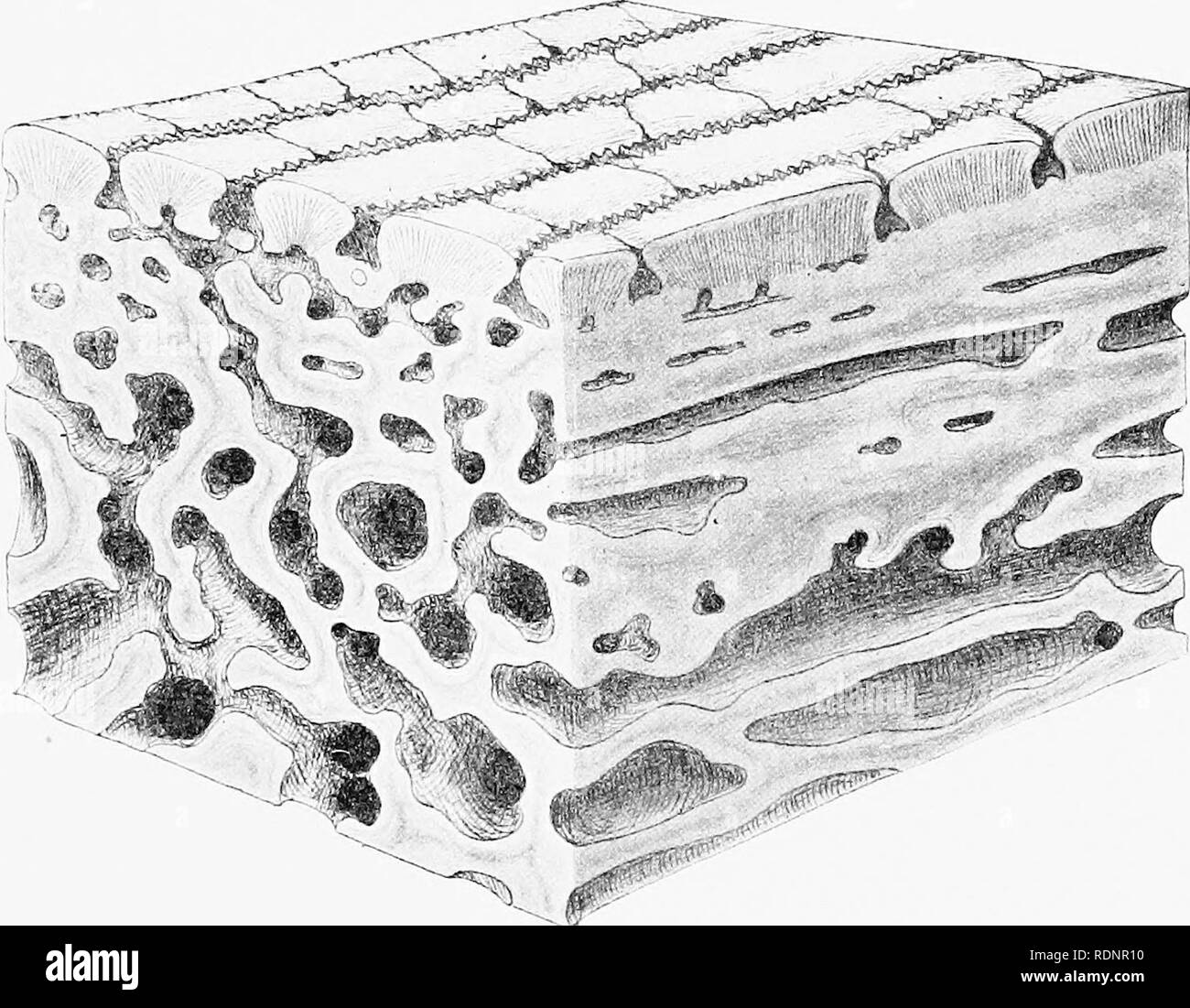 . Report of the Second Norwegian Arctic expedition in the "Fram" 1898-1902 ... "Fram" Expedition. 1898-1902; Natural history; Meteorology. 1898-1902. No 33. UPPER DEVONIAN FISH REMAINS. 35 The.se nssiiiH(iti(iiis of PaiXoek are mainly of historic interest as far as we are concerned. After TiiAuii.viu'^ investigations, wliicli iiave been earned fmilier l>y my own jiroofs of tlie structure of the skeleton, it has Lieen consulei-etl certain that Psainmosteus. Drepanaspis and Pteraspis ai-e nearly related forms. Drrpanaspis, the dermal skeleton of which is knovn in most det Stock Photohttps://www.alamy.com/image-license-details/?v=1https://www.alamy.com/report-of-the-second-norwegian-arctic-expedition-in-the-quotframquot-1898-1902-quotframquot-expedition-1898-1902-natural-history-meteorology-1898-1902-no-33-upper-devonian-fish-remains-35-these-nssiiihitiiiis-of-paixoek-are-mainly-of-historic-interest-as-far-as-we-are-concerned-after-tiiauiiviu-investigations-wliicli-iiave-been-earned-fmilier-lgty-my-own-jiroofs-of-tlie-structure-of-the-skeleton-it-has-lieen-consulei-etl-certain-that-psainmosteus-drepanaspis-and-pteraspis-ai-e-nearly-related-forms-drrpanaspis-the-dermal-skeleton-of-which-is-knovn-in-most-det-image232204364.html
. Report of the Second Norwegian Arctic expedition in the "Fram" 1898-1902 ... "Fram" Expedition. 1898-1902; Natural history; Meteorology. 1898-1902. No 33. UPPER DEVONIAN FISH REMAINS. 35 The.se nssiiiH(iti(iiis of PaiXoek are mainly of historic interest as far as we are concerned. After TiiAuii.viu'^ investigations, wliicli iiave been earned fmilier l>y my own jiroofs of tlie structure of the skeleton, it has Lieen consulei-etl certain that Psainmosteus. Drepanaspis and Pteraspis ai-e nearly related forms. Drrpanaspis, the dermal skeleton of which is knovn in most det Stock Photohttps://www.alamy.com/image-license-details/?v=1https://www.alamy.com/report-of-the-second-norwegian-arctic-expedition-in-the-quotframquot-1898-1902-quotframquot-expedition-1898-1902-natural-history-meteorology-1898-1902-no-33-upper-devonian-fish-remains-35-these-nssiiihitiiiis-of-paixoek-are-mainly-of-historic-interest-as-far-as-we-are-concerned-after-tiiauiiviu-investigations-wliicli-iiave-been-earned-fmilier-lgty-my-own-jiroofs-of-tlie-structure-of-the-skeleton-it-has-lieen-consulei-etl-certain-that-psainmosteus-drepanaspis-and-pteraspis-ai-e-nearly-related-forms-drrpanaspis-the-dermal-skeleton-of-which-is-knovn-in-most-det-image232204364.htmlRMRDNR10–. Report of the Second Norwegian Arctic expedition in the "Fram" 1898-1902 ... "Fram" Expedition. 1898-1902; Natural history; Meteorology. 1898-1902. No 33. UPPER DEVONIAN FISH REMAINS. 35 The.se nssiiiH(iti(iiis of PaiXoek are mainly of historic interest as far as we are concerned. After TiiAuii.viu'^ investigations, wliicli iiave been earned fmilier l>y my own jiroofs of tlie structure of the skeleton, it has Lieen consulei-etl certain that Psainmosteus. Drepanaspis and Pteraspis ai-e nearly related forms. Drrpanaspis, the dermal skeleton of which is knovn in most det
 . Chordate morphology. Morphology (Animals); Chordata. GEMUNDINA BOTHRIOLEPIS Figure 2-14. Restorotions of some fossil plocoderms. Pteraspis, Drepanaspis, and Birkema (Figure 2-13). Tremataspis differed from Cephalaspis in lacking the horn-like develop- ments of the head margin and in lacking fins. These genera agreed in having the head and trunk largely encased in armor. The tail was covered by scales or plates. The naso- hypophyseal duct opened on the top of the head just Ln front of the eyes, which lay near the midline. Behind the eyes were a dorsal "field" covered by small plates Stock Photohttps://www.alamy.com/image-license-details/?v=1https://www.alamy.com/chordate-morphology-morphology-animals-chordata-gemundina-bothriolepis-figure-2-14-restorotions-of-some-fossil-plocoderms-pteraspis-drepanaspis-and-birkema-figure-2-13-tremataspis-differed-from-cephalaspis-in-lacking-the-horn-like-develop-ments-of-the-head-margin-and-in-lacking-fins-these-genera-agreed-in-having-the-head-and-trunk-largely-encased-in-armor-the-tail-was-covered-by-scales-or-plates-the-naso-hypophyseal-duct-opened-on-the-top-of-the-head-just-ln-front-of-the-eyes-which-lay-near-the-midline-behind-the-eyes-were-a-dorsal-quotfieldquot-covered-by-small-plates-image234909980.html
. Chordate morphology. Morphology (Animals); Chordata. GEMUNDINA BOTHRIOLEPIS Figure 2-14. Restorotions of some fossil plocoderms. Pteraspis, Drepanaspis, and Birkema (Figure 2-13). Tremataspis differed from Cephalaspis in lacking the horn-like develop- ments of the head margin and in lacking fins. These genera agreed in having the head and trunk largely encased in armor. The tail was covered by scales or plates. The naso- hypophyseal duct opened on the top of the head just Ln front of the eyes, which lay near the midline. Behind the eyes were a dorsal "field" covered by small plates Stock Photohttps://www.alamy.com/image-license-details/?v=1https://www.alamy.com/chordate-morphology-morphology-animals-chordata-gemundina-bothriolepis-figure-2-14-restorotions-of-some-fossil-plocoderms-pteraspis-drepanaspis-and-birkema-figure-2-13-tremataspis-differed-from-cephalaspis-in-lacking-the-horn-like-develop-ments-of-the-head-margin-and-in-lacking-fins-these-genera-agreed-in-having-the-head-and-trunk-largely-encased-in-armor-the-tail-was-covered-by-scales-or-plates-the-naso-hypophyseal-duct-opened-on-the-top-of-the-head-just-ln-front-of-the-eyes-which-lay-near-the-midline-behind-the-eyes-were-a-dorsal-quotfieldquot-covered-by-small-plates-image234909980.htmlRMRJ5224–. Chordate morphology. Morphology (Animals); Chordata. GEMUNDINA BOTHRIOLEPIS Figure 2-14. Restorotions of some fossil plocoderms. Pteraspis, Drepanaspis, and Birkema (Figure 2-13). Tremataspis differed from Cephalaspis in lacking the horn-like develop- ments of the head margin and in lacking fins. These genera agreed in having the head and trunk largely encased in armor. The tail was covered by scales or plates. The naso- hypophyseal duct opened on the top of the head just Ln front of the eyes, which lay near the midline. Behind the eyes were a dorsal "field" covered by small plates
 . Bulletin of the British Museum (Natural History), Geology. 84 PTERASPIS LEATHENSIS WHITE, A DITTONIAN ZONE-FOSSIL of P. leathensis with specimens of the Spitsbergen species and sent me photographs on which Text-figs. i8 and 21 are based. P. vogti attains a substantially greater size than the English species and appears to be somewhat broader and flatter with a shorter and more rounded rostrum, smaller orbital plates, and finer ornamentation. According to F0yn & Heintz (1943: 43) P. vogti is known only from the basal layers of the Ben Nevis Division, which they equate with the Dittonian.. Stock Photohttps://www.alamy.com/image-license-details/?v=1https://www.alamy.com/bulletin-of-the-british-museum-natural-history-geology-84-pteraspis-leathensis-white-a-dittonian-zone-fossil-of-p-leathensis-with-specimens-of-the-spitsbergen-species-and-sent-me-photographs-on-which-text-figs-i8-and-21-are-based-p-vogti-attains-a-substantially-greater-size-than-the-english-species-and-appears-to-be-somewhat-broader-and-flatter-with-a-shorter-and-more-rounded-rostrum-smaller-orbital-plates-and-finer-ornamentation-according-to-f0yn-amp-heintz-1943-43-p-vogti-is-known-only-from-the-basal-layers-of-the-ben-nevis-division-which-they-equate-with-the-dittonian-image233996135.html
. Bulletin of the British Museum (Natural History), Geology. 84 PTERASPIS LEATHENSIS WHITE, A DITTONIAN ZONE-FOSSIL of P. leathensis with specimens of the Spitsbergen species and sent me photographs on which Text-figs. i8 and 21 are based. P. vogti attains a substantially greater size than the English species and appears to be somewhat broader and flatter with a shorter and more rounded rostrum, smaller orbital plates, and finer ornamentation. According to F0yn & Heintz (1943: 43) P. vogti is known only from the basal layers of the Ben Nevis Division, which they equate with the Dittonian.. Stock Photohttps://www.alamy.com/image-license-details/?v=1https://www.alamy.com/bulletin-of-the-british-museum-natural-history-geology-84-pteraspis-leathensis-white-a-dittonian-zone-fossil-of-p-leathensis-with-specimens-of-the-spitsbergen-species-and-sent-me-photographs-on-which-text-figs-i8-and-21-are-based-p-vogti-attains-a-substantially-greater-size-than-the-english-species-and-appears-to-be-somewhat-broader-and-flatter-with-a-shorter-and-more-rounded-rostrum-smaller-orbital-plates-and-finer-ornamentation-according-to-f0yn-amp-heintz-1943-43-p-vogti-is-known-only-from-the-basal-layers-of-the-ben-nevis-division-which-they-equate-with-the-dittonian-image233996135.htmlRMRGKCCR–. Bulletin of the British Museum (Natural History), Geology. 84 PTERASPIS LEATHENSIS WHITE, A DITTONIAN ZONE-FOSSIL of P. leathensis with specimens of the Spitsbergen species and sent me photographs on which Text-figs. i8 and 21 are based. P. vogti attains a substantially greater size than the English species and appears to be somewhat broader and flatter with a shorter and more rounded rostrum, smaller orbital plates, and finer ornamentation. According to F0yn & Heintz (1943: 43) P. vogti is known only from the basal layers of the Ben Nevis Division, which they equate with the Dittonian..
 . The Canadian record of science. Natural history. 252 Canadian Record of Science. plates ("cornua" ?) are preserved, as well as the front half or third of the ventral shield; the stria? on the ven- tral scute are symmetrical in relation to a median line passing through it; there is a detached fragment of a plate with concentric striae like the eye plate of Pteraspis ros- trata.1 There is also a large plate more strongly arched than the ventral scute, on which the stria? are not arranged with entire symmetry; it appears to be the dextral half of the dorsal plate ; it resembles the sh Stock Photohttps://www.alamy.com/image-license-details/?v=1https://www.alamy.com/the-canadian-record-of-science-natural-history-252-canadian-record-of-science-plates-quotcornuaquot-are-preserved-as-well-as-the-front-half-or-third-of-the-ventral-shield-the-stria-on-the-ven-tral-scute-are-symmetrical-in-relation-to-a-median-line-passing-through-it-there-is-a-detached-fragment-of-a-plate-with-concentric-striae-like-the-eye-plate-of-pteraspis-ros-trata1-there-is-also-a-large-plate-more-strongly-arched-than-the-ventral-scute-on-which-the-stria-are-not-arranged-with-entire-symmetry-it-appears-to-be-the-dextral-half-of-the-dorsal-plate-it-resembles-the-sh-image233531818.html
. The Canadian record of science. Natural history. 252 Canadian Record of Science. plates ("cornua" ?) are preserved, as well as the front half or third of the ventral shield; the stria? on the ven- tral scute are symmetrical in relation to a median line passing through it; there is a detached fragment of a plate with concentric striae like the eye plate of Pteraspis ros- trata.1 There is also a large plate more strongly arched than the ventral scute, on which the stria? are not arranged with entire symmetry; it appears to be the dextral half of the dorsal plate ; it resembles the sh Stock Photohttps://www.alamy.com/image-license-details/?v=1https://www.alamy.com/the-canadian-record-of-science-natural-history-252-canadian-record-of-science-plates-quotcornuaquot-are-preserved-as-well-as-the-front-half-or-third-of-the-ventral-shield-the-stria-on-the-ven-tral-scute-are-symmetrical-in-relation-to-a-median-line-passing-through-it-there-is-a-detached-fragment-of-a-plate-with-concentric-striae-like-the-eye-plate-of-pteraspis-ros-trata1-there-is-also-a-large-plate-more-strongly-arched-than-the-ventral-scute-on-which-the-stria-are-not-arranged-with-entire-symmetry-it-appears-to-be-the-dextral-half-of-the-dorsal-plate-it-resembles-the-sh-image233531818.htmlRMRFX862–. The Canadian record of science. Natural history. 252 Canadian Record of Science. plates ("cornua" ?) are preserved, as well as the front half or third of the ventral shield; the stria? on the ven- tral scute are symmetrical in relation to a median line passing through it; there is a detached fragment of a plate with concentric striae like the eye plate of Pteraspis ros- trata.1 There is also a large plate more strongly arched than the ventral scute, on which the stria? are not arranged with entire symmetry; it appears to be the dextral half of the dorsal plate ; it resembles the sh
 . Bulletin of the British Museum (Natural History), Geology. PTERASPIS LEATHENSIS WHITE, A DITTONIAN ZONE-FOSSIL 8i irregularities seem to indicate the resumption of rapid growth after a resting period. The ornamentation in the antero-lateral marginal area of the ventral disk is often broken up into confused short lengths or tubercles (Text-fig. 9), and in the centre of this plate confused areas are also sometimes to be seen (P. 16853?).. Text-fig. 9. Pteraspis (Simopteraspis) leathensis White. External impression of ventral disk showing sensory canals, with cross-profile of internal cast at A Stock Photohttps://www.alamy.com/image-license-details/?v=1https://www.alamy.com/bulletin-of-the-british-museum-natural-history-geology-pteraspis-leathensis-white-a-dittonian-zone-fossil-8i-irregularities-seem-to-indicate-the-resumption-of-rapid-growth-after-a-resting-period-the-ornamentation-in-the-antero-lateral-marginal-area-of-the-ventral-disk-is-often-broken-up-into-confused-short-lengths-or-tubercles-text-fig-9-and-in-the-centre-of-this-plate-confused-areas-are-also-sometimes-to-be-seen-p-16853-text-fig-9-pteraspis-simopteraspis-leathensis-white-external-impression-of-ventral-disk-showing-sensory-canals-with-cross-profile-of-internal-cast-at-a-image233996166.html
. Bulletin of the British Museum (Natural History), Geology. PTERASPIS LEATHENSIS WHITE, A DITTONIAN ZONE-FOSSIL 8i irregularities seem to indicate the resumption of rapid growth after a resting period. The ornamentation in the antero-lateral marginal area of the ventral disk is often broken up into confused short lengths or tubercles (Text-fig. 9), and in the centre of this plate confused areas are also sometimes to be seen (P. 16853?).. Text-fig. 9. Pteraspis (Simopteraspis) leathensis White. External impression of ventral disk showing sensory canals, with cross-profile of internal cast at A Stock Photohttps://www.alamy.com/image-license-details/?v=1https://www.alamy.com/bulletin-of-the-british-museum-natural-history-geology-pteraspis-leathensis-white-a-dittonian-zone-fossil-8i-irregularities-seem-to-indicate-the-resumption-of-rapid-growth-after-a-resting-period-the-ornamentation-in-the-antero-lateral-marginal-area-of-the-ventral-disk-is-often-broken-up-into-confused-short-lengths-or-tubercles-text-fig-9-and-in-the-centre-of-this-plate-confused-areas-are-also-sometimes-to-be-seen-p-16853-text-fig-9-pteraspis-simopteraspis-leathensis-white-external-impression-of-ventral-disk-showing-sensory-canals-with-cross-profile-of-internal-cast-at-a-image233996166.htmlRMRGKCDX–. Bulletin of the British Museum (Natural History), Geology. PTERASPIS LEATHENSIS WHITE, A DITTONIAN ZONE-FOSSIL 8i irregularities seem to indicate the resumption of rapid growth after a resting period. The ornamentation in the antero-lateral marginal area of the ventral disk is often broken up into confused short lengths or tubercles (Text-fig. 9), and in the centre of this plate confused areas are also sometimes to be seen (P. 16853?).. Text-fig. 9. Pteraspis (Simopteraspis) leathensis White. External impression of ventral disk showing sensory canals, with cross-profile of internal cast at A
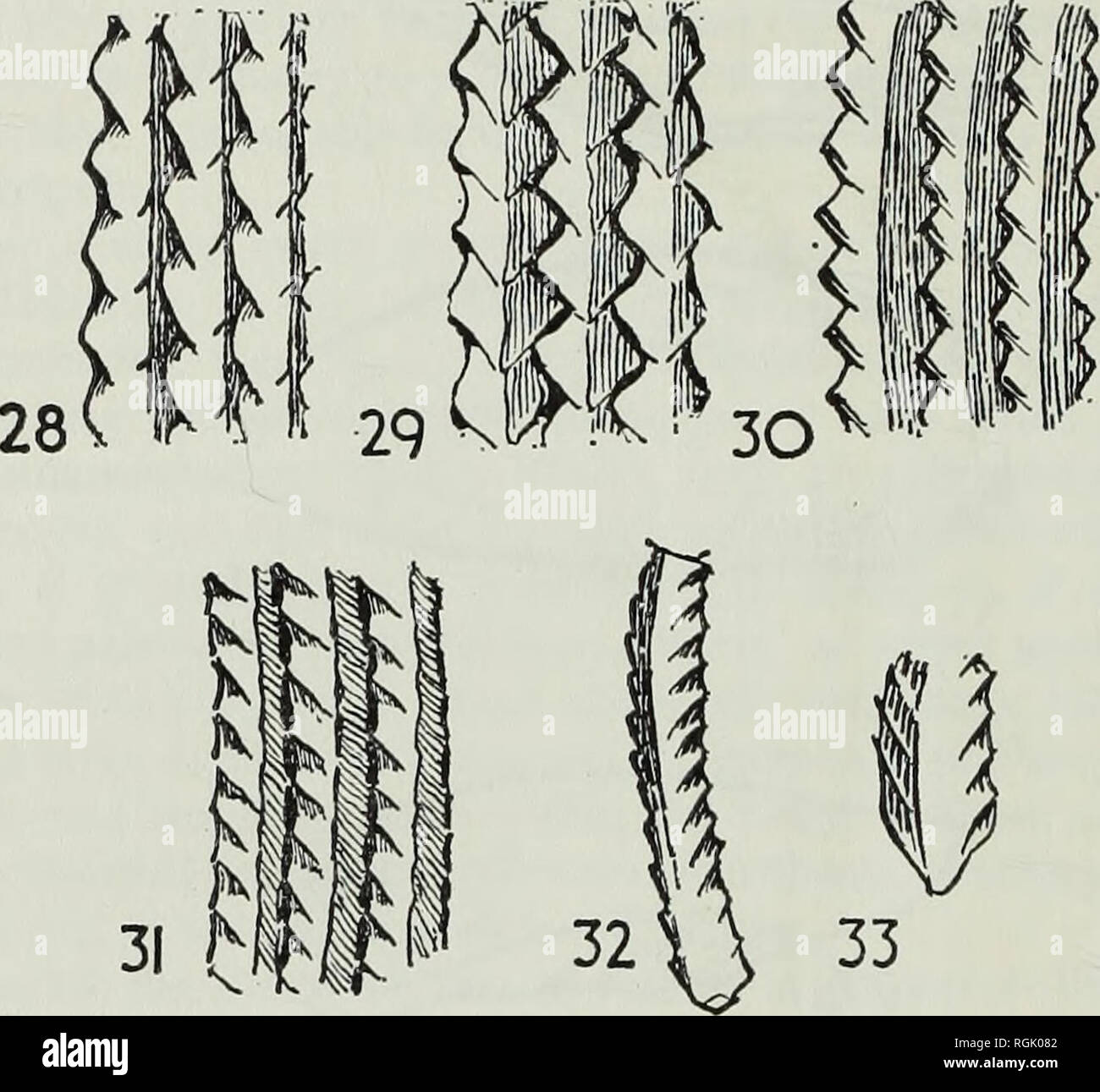 . Bulletin of the British Museum (Natural History), Geology. 278 THE OLD RED SANDSTONE OF BROWN CLEE HILL meets the normally disposed series at the margin almost at a right angle. It was an arrangement such as this constantly occurring in Pteraspis dixoni that led Stensio (1958 : 292) in the belief that such a pattern signified a different mode of de- velopment, to place this otherwise obvious species of Pteraspis, not only in a new genus, Penygaspis, but in a different Order, the Traquairaspida. As an irregularity it occurs occasionally in other species of pteraspids.. Protaspis (Europrotaspi Stock Photohttps://www.alamy.com/image-license-details/?v=1https://www.alamy.com/bulletin-of-the-british-museum-natural-history-geology-278-the-old-red-sandstone-of-brown-clee-hill-meets-the-normally-disposed-series-at-the-margin-almost-at-a-right-angle-it-was-an-arrangement-such-as-this-constantly-occurring-in-pteraspis-dixoni-that-led-stensio-1958-292-in-the-belief-that-such-a-pattern-signified-a-different-mode-of-de-velopment-to-place-this-otherwise-obvious-species-of-pteraspis-not-only-in-a-new-genus-penygaspis-but-in-a-different-order-the-traquairaspida-as-an-irregularity-it-occurs-occasionally-in-other-species-of-pteraspids-protaspis-europrotaspi-image233986594.html
. Bulletin of the British Museum (Natural History), Geology. 278 THE OLD RED SANDSTONE OF BROWN CLEE HILL meets the normally disposed series at the margin almost at a right angle. It was an arrangement such as this constantly occurring in Pteraspis dixoni that led Stensio (1958 : 292) in the belief that such a pattern signified a different mode of de- velopment, to place this otherwise obvious species of Pteraspis, not only in a new genus, Penygaspis, but in a different Order, the Traquairaspida. As an irregularity it occurs occasionally in other species of pteraspids.. Protaspis (Europrotaspi Stock Photohttps://www.alamy.com/image-license-details/?v=1https://www.alamy.com/bulletin-of-the-british-museum-natural-history-geology-278-the-old-red-sandstone-of-brown-clee-hill-meets-the-normally-disposed-series-at-the-margin-almost-at-a-right-angle-it-was-an-arrangement-such-as-this-constantly-occurring-in-pteraspis-dixoni-that-led-stensio-1958-292-in-the-belief-that-such-a-pattern-signified-a-different-mode-of-de-velopment-to-place-this-otherwise-obvious-species-of-pteraspis-not-only-in-a-new-genus-penygaspis-but-in-a-different-order-the-traquairaspida-as-an-irregularity-it-occurs-occasionally-in-other-species-of-pteraspids-protaspis-europrotaspi-image233986594.htmlRMRGK082–. Bulletin of the British Museum (Natural History), Geology. 278 THE OLD RED SANDSTONE OF BROWN CLEE HILL meets the normally disposed series at the margin almost at a right angle. It was an arrangement such as this constantly occurring in Pteraspis dixoni that led Stensio (1958 : 292) in the belief that such a pattern signified a different mode of de- velopment, to place this otherwise obvious species of Pteraspis, not only in a new genus, Penygaspis, but in a different Order, the Traquairaspida. As an irregularity it occurs occasionally in other species of pteraspids.. Protaspis (Europrotaspi
 . Bulletin of the British Museum (Natural History), Geology. 82 PTERASPIS LEATHENSIS WHITE, A DITTONIAN ZONE-FOSSIL from the 'Passage Beds' (Psammites de Lievin) of the Pas-de-Calais (see Barrois, Pruvost, & Dubois, 1922: 180-4). Thanks to the kindness of Professor Leriche and Professor Pruvost I have been able to examine these specimens from the collections of the University of Lille. There are four dorsal shields, two of which are nearly com- plete (Text-figs. 15-17, 19), but the surface of the plates has almost disappeared and. Pteraspis [Simopteraspis) leathensis White Text-fig. 10. Im Stock Photohttps://www.alamy.com/image-license-details/?v=1https://www.alamy.com/bulletin-of-the-british-museum-natural-history-geology-82-pteraspis-leathensis-white-a-dittonian-zone-fossil-from-the-passage-beds-psammites-de-lievin-of-the-pas-de-calais-see-barrois-pruvost-amp-dubois-1922-180-4-thanks-to-the-kindness-of-professor-leriche-and-professor-pruvost-i-have-been-able-to-examine-these-specimens-from-the-collections-of-the-university-of-lille-there-are-four-dorsal-shields-two-of-which-are-nearly-com-plete-text-figs-15-17-19-but-the-surface-of-the-plates-has-almost-disappeared-and-pteraspis-simopteraspis-leathensis-white-text-fig-10-im-image233996153.html
. Bulletin of the British Museum (Natural History), Geology. 82 PTERASPIS LEATHENSIS WHITE, A DITTONIAN ZONE-FOSSIL from the 'Passage Beds' (Psammites de Lievin) of the Pas-de-Calais (see Barrois, Pruvost, & Dubois, 1922: 180-4). Thanks to the kindness of Professor Leriche and Professor Pruvost I have been able to examine these specimens from the collections of the University of Lille. There are four dorsal shields, two of which are nearly com- plete (Text-figs. 15-17, 19), but the surface of the plates has almost disappeared and. Pteraspis [Simopteraspis) leathensis White Text-fig. 10. Im Stock Photohttps://www.alamy.com/image-license-details/?v=1https://www.alamy.com/bulletin-of-the-british-museum-natural-history-geology-82-pteraspis-leathensis-white-a-dittonian-zone-fossil-from-the-passage-beds-psammites-de-lievin-of-the-pas-de-calais-see-barrois-pruvost-amp-dubois-1922-180-4-thanks-to-the-kindness-of-professor-leriche-and-professor-pruvost-i-have-been-able-to-examine-these-specimens-from-the-collections-of-the-university-of-lille-there-are-four-dorsal-shields-two-of-which-are-nearly-com-plete-text-figs-15-17-19-but-the-surface-of-the-plates-has-almost-disappeared-and-pteraspis-simopteraspis-leathensis-white-text-fig-10-im-image233996153.htmlRMRGKCDD–. Bulletin of the British Museum (Natural History), Geology. 82 PTERASPIS LEATHENSIS WHITE, A DITTONIAN ZONE-FOSSIL from the 'Passage Beds' (Psammites de Lievin) of the Pas-de-Calais (see Barrois, Pruvost, & Dubois, 1922: 180-4). Thanks to the kindness of Professor Leriche and Professor Pruvost I have been able to examine these specimens from the collections of the University of Lille. There are four dorsal shields, two of which are nearly com- plete (Text-figs. 15-17, 19), but the surface of the plates has almost disappeared and. Pteraspis [Simopteraspis) leathensis White Text-fig. 10. Im
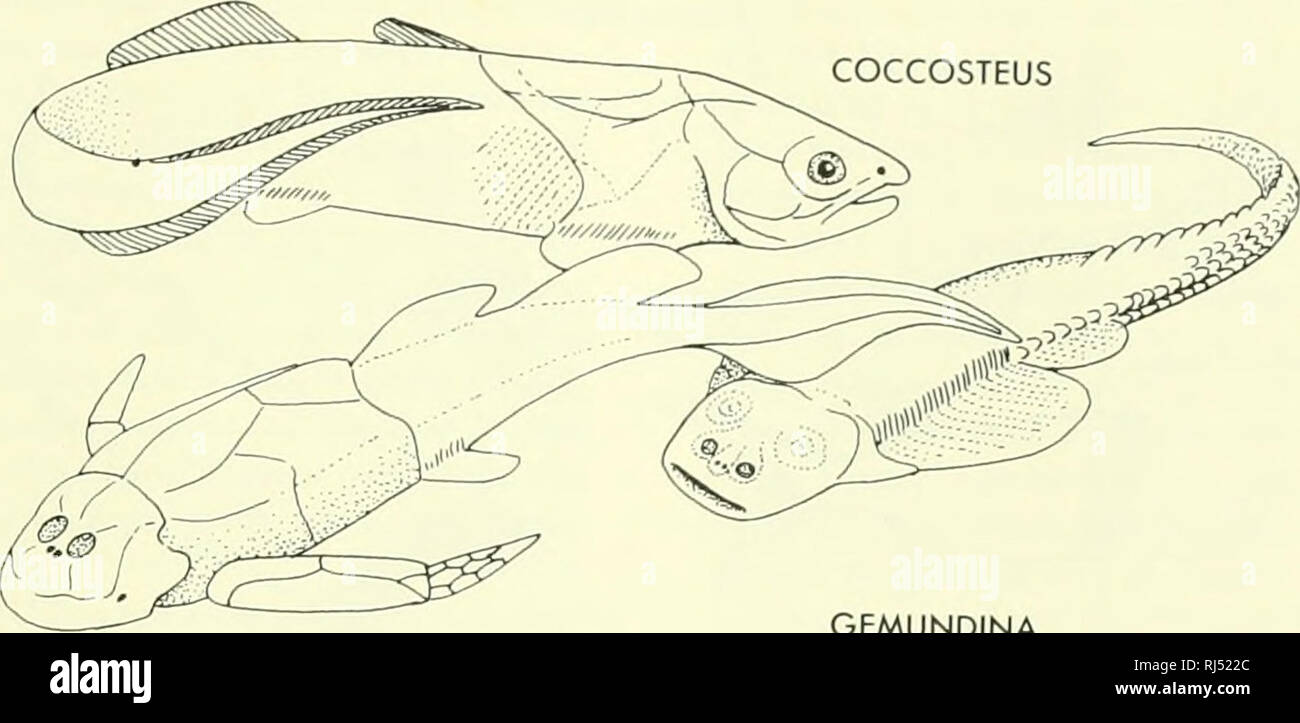 . Chordate morphology. Morphology (Animals); Chordata. COCCOSTEUS. GEMUNDINA BOTHRIOLEPIS Figure 2-14. Restorotions of some fossil plocoderms. Pteraspis, Drepanaspis, and Birkema (Figure 2-13). Tremataspis differed from Cephalaspis in lacking the horn-like develop- ments of the head margin and in lacking fins. These genera agreed in having the head and trunk largely encased in armor. The tail was covered by scales or plates. The naso- hypophyseal duct opened on the top of the head just Ln front of the eyes, which lay near the midline. Behind the eyes were a dorsal "field" covered by Stock Photohttps://www.alamy.com/image-license-details/?v=1https://www.alamy.com/chordate-morphology-morphology-animals-chordata-coccosteus-gemundina-bothriolepis-figure-2-14-restorotions-of-some-fossil-plocoderms-pteraspis-drepanaspis-and-birkema-figure-2-13-tremataspis-differed-from-cephalaspis-in-lacking-the-horn-like-develop-ments-of-the-head-margin-and-in-lacking-fins-these-genera-agreed-in-having-the-head-and-trunk-largely-encased-in-armor-the-tail-was-covered-by-scales-or-plates-the-naso-hypophyseal-duct-opened-on-the-top-of-the-head-just-ln-front-of-the-eyes-which-lay-near-the-midline-behind-the-eyes-were-a-dorsal-quotfieldquot-covered-by-image234909988.html
. Chordate morphology. Morphology (Animals); Chordata. COCCOSTEUS. GEMUNDINA BOTHRIOLEPIS Figure 2-14. Restorotions of some fossil plocoderms. Pteraspis, Drepanaspis, and Birkema (Figure 2-13). Tremataspis differed from Cephalaspis in lacking the horn-like develop- ments of the head margin and in lacking fins. These genera agreed in having the head and trunk largely encased in armor. The tail was covered by scales or plates. The naso- hypophyseal duct opened on the top of the head just Ln front of the eyes, which lay near the midline. Behind the eyes were a dorsal "field" covered by Stock Photohttps://www.alamy.com/image-license-details/?v=1https://www.alamy.com/chordate-morphology-morphology-animals-chordata-coccosteus-gemundina-bothriolepis-figure-2-14-restorotions-of-some-fossil-plocoderms-pteraspis-drepanaspis-and-birkema-figure-2-13-tremataspis-differed-from-cephalaspis-in-lacking-the-horn-like-develop-ments-of-the-head-margin-and-in-lacking-fins-these-genera-agreed-in-having-the-head-and-trunk-largely-encased-in-armor-the-tail-was-covered-by-scales-or-plates-the-naso-hypophyseal-duct-opened-on-the-top-of-the-head-just-ln-front-of-the-eyes-which-lay-near-the-midline-behind-the-eyes-were-a-dorsal-quotfieldquot-covered-by-image234909988.htmlRMRJ522C–. Chordate morphology. Morphology (Animals); Chordata. COCCOSTEUS. GEMUNDINA BOTHRIOLEPIS Figure 2-14. Restorotions of some fossil plocoderms. Pteraspis, Drepanaspis, and Birkema (Figure 2-13). Tremataspis differed from Cephalaspis in lacking the horn-like develop- ments of the head margin and in lacking fins. These genera agreed in having the head and trunk largely encased in armor. The tail was covered by scales or plates. The naso- hypophyseal duct opened on the top of the head just Ln front of the eyes, which lay near the midline. Behind the eyes were a dorsal "field" covered by
 . The Cyathaspididae; a family of Silurian and Devonian jawless vertebrates. Cyathaspididae. 358 FIELDIANA: GEOLOGY, VOLUME 13. Fig. 110. Cyathaspis banksi (from Kiaer, 1932); specimens in collection of Geological Survey of Great Britain (X about 3). A, dorsal shield; B, ventral shield. orb, orbit. in Archegonaspis ludensis but this is apparently in error; the speci- men to which he refers (Brit. Mus. P. 3241) is Cyathaspis banksi. Kiaer (1932, p. 22) stated that Cyathaspis had a "real dorsal spine" comparable to that of Pteraspis, but judging from his own figure (op. cit, pi. 8, fig Stock Photohttps://www.alamy.com/image-license-details/?v=1https://www.alamy.com/the-cyathaspididae-a-family-of-silurian-and-devonian-jawless-vertebrates-cyathaspididae-358-fieldiana-geology-volume-13-fig-110-cyathaspis-banksi-from-kiaer-1932-specimens-in-collection-of-geological-survey-of-great-britain-x-about-3-a-dorsal-shield-b-ventral-shield-orb-orbit-in-archegonaspis-ludensis-but-this-is-apparently-in-error-the-speci-men-to-which-he-refers-brit-mus-p-3241-is-cyathaspis-banksi-kiaer-1932-p-22-stated-that-cyathaspis-had-a-quotreal-dorsal-spinequot-comparable-to-that-of-pteraspis-but-judging-from-his-own-figure-op-cit-pi-8-fig-image231863571.html
. The Cyathaspididae; a family of Silurian and Devonian jawless vertebrates. Cyathaspididae. 358 FIELDIANA: GEOLOGY, VOLUME 13. Fig. 110. Cyathaspis banksi (from Kiaer, 1932); specimens in collection of Geological Survey of Great Britain (X about 3). A, dorsal shield; B, ventral shield. orb, orbit. in Archegonaspis ludensis but this is apparently in error; the speci- men to which he refers (Brit. Mus. P. 3241) is Cyathaspis banksi. Kiaer (1932, p. 22) stated that Cyathaspis had a "real dorsal spine" comparable to that of Pteraspis, but judging from his own figure (op. cit, pi. 8, fig Stock Photohttps://www.alamy.com/image-license-details/?v=1https://www.alamy.com/the-cyathaspididae-a-family-of-silurian-and-devonian-jawless-vertebrates-cyathaspididae-358-fieldiana-geology-volume-13-fig-110-cyathaspis-banksi-from-kiaer-1932-specimens-in-collection-of-geological-survey-of-great-britain-x-about-3-a-dorsal-shield-b-ventral-shield-orb-orbit-in-archegonaspis-ludensis-but-this-is-apparently-in-error-the-speci-men-to-which-he-refers-brit-mus-p-3241-is-cyathaspis-banksi-kiaer-1932-p-22-stated-that-cyathaspis-had-a-quotreal-dorsal-spinequot-comparable-to-that-of-pteraspis-but-judging-from-his-own-figure-op-cit-pi-8-fig-image231863571.htmlRMRD689R–. The Cyathaspididae; a family of Silurian and Devonian jawless vertebrates. Cyathaspididae. 358 FIELDIANA: GEOLOGY, VOLUME 13. Fig. 110. Cyathaspis banksi (from Kiaer, 1932); specimens in collection of Geological Survey of Great Britain (X about 3). A, dorsal shield; B, ventral shield. orb, orbit. in Archegonaspis ludensis but this is apparently in error; the speci- men to which he refers (Brit. Mus. P. 3241) is Cyathaspis banksi. Kiaer (1932, p. 22) stated that Cyathaspis had a "real dorsal spine" comparable to that of Pteraspis, but judging from his own figure (op. cit, pi. 8, fig
![. Bulletin of the British Museum (Natural History), Geology. PTERASPIS LEATHENSIS WHITE, A DITTONIAN ZONE-FOSSIL 87 P. crouchi to be even more diminutive than those of P. rostrata and the slenderness and length of the branchial plate seems to support this suggestion. Locality. The specimens came from sections in a stream near 'the Lobby', Oldfield, near Chetton, 4 miles south-west of Bridgnorth. The beds are in a small area determined as stage I. g by VVickham King, who separates it by faults from the. Pteraspis crouchi Lankester Text-fig. 23. Rostrum lacking proximal end. [RP461.] Text-fig. 2 Stock Photo . Bulletin of the British Museum (Natural History), Geology. PTERASPIS LEATHENSIS WHITE, A DITTONIAN ZONE-FOSSIL 87 P. crouchi to be even more diminutive than those of P. rostrata and the slenderness and length of the branchial plate seems to support this suggestion. Locality. The specimens came from sections in a stream near 'the Lobby', Oldfield, near Chetton, 4 miles south-west of Bridgnorth. The beds are in a small area determined as stage I. g by VVickham King, who separates it by faults from the. Pteraspis crouchi Lankester Text-fig. 23. Rostrum lacking proximal end. [RP461.] Text-fig. 2 Stock Photo](https://c8.alamy.com/comp/RGKCAR/bulletin-of-the-british-museum-natural-history-geology-pteraspis-leathensis-white-a-dittonian-zone-fossil-87-p-crouchi-to-be-even-more-diminutive-than-those-of-p-rostrata-and-the-slenderness-and-length-of-the-branchial-plate-seems-to-support-this-suggestion-locality-the-specimens-came-from-sections-in-a-stream-near-the-lobby-oldfield-near-chetton-4-miles-south-west-of-bridgnorth-the-beds-are-in-a-small-area-determined-as-stage-i-g-by-vvickham-king-who-separates-it-by-faults-from-the-pteraspis-crouchi-lankester-text-fig-23-rostrum-lacking-proximal-end-rp461-text-fig-2-RGKCAR.jpg) . Bulletin of the British Museum (Natural History), Geology. PTERASPIS LEATHENSIS WHITE, A DITTONIAN ZONE-FOSSIL 87 P. crouchi to be even more diminutive than those of P. rostrata and the slenderness and length of the branchial plate seems to support this suggestion. Locality. The specimens came from sections in a stream near 'the Lobby', Oldfield, near Chetton, 4 miles south-west of Bridgnorth. The beds are in a small area determined as stage I. g by VVickham King, who separates it by faults from the. Pteraspis crouchi Lankester Text-fig. 23. Rostrum lacking proximal end. [RP461.] Text-fig. 2 Stock Photohttps://www.alamy.com/image-license-details/?v=1https://www.alamy.com/bulletin-of-the-british-museum-natural-history-geology-pteraspis-leathensis-white-a-dittonian-zone-fossil-87-p-crouchi-to-be-even-more-diminutive-than-those-of-p-rostrata-and-the-slenderness-and-length-of-the-branchial-plate-seems-to-support-this-suggestion-locality-the-specimens-came-from-sections-in-a-stream-near-the-lobby-oldfield-near-chetton-4-miles-south-west-of-bridgnorth-the-beds-are-in-a-small-area-determined-as-stage-i-g-by-vvickham-king-who-separates-it-by-faults-from-the-pteraspis-crouchi-lankester-text-fig-23-rostrum-lacking-proximal-end-rp461-text-fig-2-image233996079.html
. Bulletin of the British Museum (Natural History), Geology. PTERASPIS LEATHENSIS WHITE, A DITTONIAN ZONE-FOSSIL 87 P. crouchi to be even more diminutive than those of P. rostrata and the slenderness and length of the branchial plate seems to support this suggestion. Locality. The specimens came from sections in a stream near 'the Lobby', Oldfield, near Chetton, 4 miles south-west of Bridgnorth. The beds are in a small area determined as stage I. g by VVickham King, who separates it by faults from the. Pteraspis crouchi Lankester Text-fig. 23. Rostrum lacking proximal end. [RP461.] Text-fig. 2 Stock Photohttps://www.alamy.com/image-license-details/?v=1https://www.alamy.com/bulletin-of-the-british-museum-natural-history-geology-pteraspis-leathensis-white-a-dittonian-zone-fossil-87-p-crouchi-to-be-even-more-diminutive-than-those-of-p-rostrata-and-the-slenderness-and-length-of-the-branchial-plate-seems-to-support-this-suggestion-locality-the-specimens-came-from-sections-in-a-stream-near-the-lobby-oldfield-near-chetton-4-miles-south-west-of-bridgnorth-the-beds-are-in-a-small-area-determined-as-stage-i-g-by-vvickham-king-who-separates-it-by-faults-from-the-pteraspis-crouchi-lankester-text-fig-23-rostrum-lacking-proximal-end-rp461-text-fig-2-image233996079.htmlRMRGKCAR–. Bulletin of the British Museum (Natural History), Geology. PTERASPIS LEATHENSIS WHITE, A DITTONIAN ZONE-FOSSIL 87 P. crouchi to be even more diminutive than those of P. rostrata and the slenderness and length of the branchial plate seems to support this suggestion. Locality. The specimens came from sections in a stream near 'the Lobby', Oldfield, near Chetton, 4 miles south-west of Bridgnorth. The beds are in a small area determined as stage I. g by VVickham King, who separates it by faults from the. Pteraspis crouchi Lankester Text-fig. 23. Rostrum lacking proximal end. [RP461.] Text-fig. 2
 . The Cyathaspididae; a family of Silurian and Devonian jawless vertebrates. Cyathaspididae. DENISON: THE CYATHASPIDIDAE 365 Occurrence.—Late Silurian (Early Ludlovian), glacial erratic of Graptolithengestein, Muntzeschen quarry, Kothen, Saxony, Germany. cep—^*-. Fig. 113. Archegonaspis schmidti, rostral view, drawn from cast of type speci- men (X 3). cep, central epitegum; lep, lateral epitegum; orb, orbit; pop, preorbital process; rep, rostral epitegum; ro, rostrum. Archegonaspis ludensis (Salter) Pteraspis ludensis Salter, 1859, Ann. Mag. Nat. Hist., (3), 4, pp. 45-47, fig. 1. Scaphaspis lu Stock Photohttps://www.alamy.com/image-license-details/?v=1https://www.alamy.com/the-cyathaspididae-a-family-of-silurian-and-devonian-jawless-vertebrates-cyathaspididae-denison-the-cyathaspididae-365-occurrencelate-silurian-early-ludlovian-glacial-erratic-of-graptolithengestein-muntzeschen-quarry-kothen-saxony-germany-cep-fig-113-archegonaspis-schmidti-rostral-view-drawn-from-cast-of-type-speci-men-x-3-cep-central-epitegum-lep-lateral-epitegum-orb-orbit-pop-preorbital-process-rep-rostral-epitegum-ro-rostrum-archegonaspis-ludensis-salter-pteraspis-ludensis-salter-1859-ann-mag-nat-hist-3-4-pp-45-47-fig-1-scaphaspis-lu-image231863546.html
. The Cyathaspididae; a family of Silurian and Devonian jawless vertebrates. Cyathaspididae. DENISON: THE CYATHASPIDIDAE 365 Occurrence.—Late Silurian (Early Ludlovian), glacial erratic of Graptolithengestein, Muntzeschen quarry, Kothen, Saxony, Germany. cep—^*-. Fig. 113. Archegonaspis schmidti, rostral view, drawn from cast of type speci- men (X 3). cep, central epitegum; lep, lateral epitegum; orb, orbit; pop, preorbital process; rep, rostral epitegum; ro, rostrum. Archegonaspis ludensis (Salter) Pteraspis ludensis Salter, 1859, Ann. Mag. Nat. Hist., (3), 4, pp. 45-47, fig. 1. Scaphaspis lu Stock Photohttps://www.alamy.com/image-license-details/?v=1https://www.alamy.com/the-cyathaspididae-a-family-of-silurian-and-devonian-jawless-vertebrates-cyathaspididae-denison-the-cyathaspididae-365-occurrencelate-silurian-early-ludlovian-glacial-erratic-of-graptolithengestein-muntzeschen-quarry-kothen-saxony-germany-cep-fig-113-archegonaspis-schmidti-rostral-view-drawn-from-cast-of-type-speci-men-x-3-cep-central-epitegum-lep-lateral-epitegum-orb-orbit-pop-preorbital-process-rep-rostral-epitegum-ro-rostrum-archegonaspis-ludensis-salter-pteraspis-ludensis-salter-1859-ann-mag-nat-hist-3-4-pp-45-47-fig-1-scaphaspis-lu-image231863546.htmlRMRD688X–. The Cyathaspididae; a family of Silurian and Devonian jawless vertebrates. Cyathaspididae. DENISON: THE CYATHASPIDIDAE 365 Occurrence.—Late Silurian (Early Ludlovian), glacial erratic of Graptolithengestein, Muntzeschen quarry, Kothen, Saxony, Germany. cep—^*-. Fig. 113. Archegonaspis schmidti, rostral view, drawn from cast of type speci- men (X 3). cep, central epitegum; lep, lateral epitegum; orb, orbit; pop, preorbital process; rep, rostral epitegum; ro, rostrum. Archegonaspis ludensis (Salter) Pteraspis ludensis Salter, 1859, Ann. Mag. Nat. Hist., (3), 4, pp. 45-47, fig. 1. Scaphaspis lu
 . Bulletin of the British Museum (Natural History), Geology. 8o PTERASPIS LEATHENSIS WHITE, A DITTONIAN ZONE-FOSSIL its absence in the numerous specimens of P. rostrata (White, 1935) is due to the chances of preservation—which is rather remarkable in view of the superb state of preserva- tion of the specimens from Wayne Herbert and Trimpley. Recently a fresh examina- tion has shown that this feature is partly preserved in one of the Trimpley scales (P.17444).. Pteraspis [Simoptevaspis) leathensis White Text-fig. 5. External impression of pineal area of dorsal shield. Ammons Hill. [P-23793- X 2 Stock Photohttps://www.alamy.com/image-license-details/?v=1https://www.alamy.com/bulletin-of-the-british-museum-natural-history-geology-8o-pteraspis-leathensis-white-a-dittonian-zone-fossil-its-absence-in-the-numerous-specimens-of-p-rostrata-white-1935-is-due-to-the-chances-of-preservationwhich-is-rather-remarkable-in-view-of-the-superb-state-of-preserva-tion-of-the-specimens-from-wayne-herbert-and-trimpley-recently-a-fresh-examina-tion-has-shown-that-this-feature-is-partly-preserved-in-one-of-the-trimpley-scales-p17444-pteraspis-simoptevaspis-leathensis-white-text-fig-5-external-impression-of-pineal-area-of-dorsal-shield-ammons-hill-p-23793-x-2-image233996177.html
. Bulletin of the British Museum (Natural History), Geology. 8o PTERASPIS LEATHENSIS WHITE, A DITTONIAN ZONE-FOSSIL its absence in the numerous specimens of P. rostrata (White, 1935) is due to the chances of preservation—which is rather remarkable in view of the superb state of preserva- tion of the specimens from Wayne Herbert and Trimpley. Recently a fresh examina- tion has shown that this feature is partly preserved in one of the Trimpley scales (P.17444).. Pteraspis [Simoptevaspis) leathensis White Text-fig. 5. External impression of pineal area of dorsal shield. Ammons Hill. [P-23793- X 2 Stock Photohttps://www.alamy.com/image-license-details/?v=1https://www.alamy.com/bulletin-of-the-british-museum-natural-history-geology-8o-pteraspis-leathensis-white-a-dittonian-zone-fossil-its-absence-in-the-numerous-specimens-of-p-rostrata-white-1935-is-due-to-the-chances-of-preservationwhich-is-rather-remarkable-in-view-of-the-superb-state-of-preserva-tion-of-the-specimens-from-wayne-herbert-and-trimpley-recently-a-fresh-examina-tion-has-shown-that-this-feature-is-partly-preserved-in-one-of-the-trimpley-scales-p17444-pteraspis-simoptevaspis-leathensis-white-text-fig-5-external-impression-of-pineal-area-of-dorsal-shield-ammons-hill-p-23793-x-2-image233996177.htmlRMRGKCE9–. Bulletin of the British Museum (Natural History), Geology. 8o PTERASPIS LEATHENSIS WHITE, A DITTONIAN ZONE-FOSSIL its absence in the numerous specimens of P. rostrata (White, 1935) is due to the chances of preservation—which is rather remarkable in view of the superb state of preserva- tion of the specimens from Wayne Herbert and Trimpley. Recently a fresh examina- tion has shown that this feature is partly preserved in one of the Trimpley scales (P.17444).. Pteraspis [Simoptevaspis) leathensis White Text-fig. 5. External impression of pineal area of dorsal shield. Ammons Hill. [P-23793- X 2
 . Bulletin of the British Museum (Natural History), Geology. THE VERTEBRATE FAUNAS OF THE LOWER OLD RED SANDSTONE OF THE WELSH BORDERS PTERASPIS LEATHENSIS White A DITTONIAN ZONE-FOSSIL BY ERROL IVOR WHITE. Pp. 49-89; P^- 5; 27 Text-figures BULLETIN OF THE BRITISH MUSEUM (NATURAL HISTORY) GEOLOGY Vol.1 No. 3 LONDON: 1950. Please note that these images are extracted from scanned page images that may have been digitally enhanced for readability - coloration and appearance of these illustrations may not perfectly resemble the original work.. British Museum (Natural History). London : BM(NH) Stock Photohttps://www.alamy.com/image-license-details/?v=1https://www.alamy.com/bulletin-of-the-british-museum-natural-history-geology-the-vertebrate-faunas-of-the-lower-old-red-sandstone-of-the-welsh-borders-pteraspis-leathensis-white-a-dittonian-zone-fossil-by-errol-ivor-white-pp-49-89-p-5-27-text-figures-bulletin-of-the-british-museum-natural-history-geology-vol1-no-3-london-1950-please-note-that-these-images-are-extracted-from-scanned-page-images-that-may-have-been-digitally-enhanced-for-readability-coloration-and-appearance-of-these-illustrations-may-not-perfectly-resemble-the-original-work-british-museum-natural-history-london-bmnh-image233996314.html
. Bulletin of the British Museum (Natural History), Geology. THE VERTEBRATE FAUNAS OF THE LOWER OLD RED SANDSTONE OF THE WELSH BORDERS PTERASPIS LEATHENSIS White A DITTONIAN ZONE-FOSSIL BY ERROL IVOR WHITE. Pp. 49-89; P^- 5; 27 Text-figures BULLETIN OF THE BRITISH MUSEUM (NATURAL HISTORY) GEOLOGY Vol.1 No. 3 LONDON: 1950. Please note that these images are extracted from scanned page images that may have been digitally enhanced for readability - coloration and appearance of these illustrations may not perfectly resemble the original work.. British Museum (Natural History). London : BM(NH) Stock Photohttps://www.alamy.com/image-license-details/?v=1https://www.alamy.com/bulletin-of-the-british-museum-natural-history-geology-the-vertebrate-faunas-of-the-lower-old-red-sandstone-of-the-welsh-borders-pteraspis-leathensis-white-a-dittonian-zone-fossil-by-errol-ivor-white-pp-49-89-p-5-27-text-figures-bulletin-of-the-british-museum-natural-history-geology-vol1-no-3-london-1950-please-note-that-these-images-are-extracted-from-scanned-page-images-that-may-have-been-digitally-enhanced-for-readability-coloration-and-appearance-of-these-illustrations-may-not-perfectly-resemble-the-original-work-british-museum-natural-history-london-bmnh-image233996314.htmlRMRGKCK6–. Bulletin of the British Museum (Natural History), Geology. THE VERTEBRATE FAUNAS OF THE LOWER OLD RED SANDSTONE OF THE WELSH BORDERS PTERASPIS LEATHENSIS White A DITTONIAN ZONE-FOSSIL BY ERROL IVOR WHITE. Pp. 49-89; P^- 5; 27 Text-figures BULLETIN OF THE BRITISH MUSEUM (NATURAL HISTORY) GEOLOGY Vol.1 No. 3 LONDON: 1950. Please note that these images are extracted from scanned page images that may have been digitally enhanced for readability - coloration and appearance of these illustrations may not perfectly resemble the original work.. British Museum (Natural History). London : BM(NH)
 . A brief general account of fossil fishes : the Triassic fishes of New Jersey. Fishes, Fossil; Paleontology. Pig. 2. Cephalaspis murchisoni Egert. Silurian and Lower Devonian; Hereford- shire. Lateral aspect, restored by Dr. A. S. Woodward. X %•. Fig- 3- Pteraspis rosirata Ag. Lower Old Red Sandstone; Great Britain, view of partially restored fish. X ZA- Side TremataspiSj together with the remarkable forms described with- in recent years from the Scottish Silurian, grouped by Dr. Tra- quair under the name of Anaspida. Of the above mentioned forms, only the genus Cephalaspis appears to have be Stock Photohttps://www.alamy.com/image-license-details/?v=1https://www.alamy.com/a-brief-general-account-of-fossil-fishes-the-triassic-fishes-of-new-jersey-fishes-fossil-paleontology-pig-2-cephalaspis-murchisoni-egert-silurian-and-lower-devonian-hereford-shire-lateral-aspect-restored-by-dr-a-s-woodward-x-fig-3-pteraspis-rosirata-ag-lower-old-red-sandstone-great-britain-view-of-partially-restored-fish-x-za-side-tremataspisj-together-with-the-remarkable-forms-described-with-in-recent-years-from-the-scottish-silurian-grouped-by-dr-tra-quair-under-the-name-of-anaspida-of-the-above-mentioned-forms-only-the-genus-cephalaspis-appears-to-have-be-image234277338.html
. A brief general account of fossil fishes : the Triassic fishes of New Jersey. Fishes, Fossil; Paleontology. Pig. 2. Cephalaspis murchisoni Egert. Silurian and Lower Devonian; Hereford- shire. Lateral aspect, restored by Dr. A. S. Woodward. X %•. Fig- 3- Pteraspis rosirata Ag. Lower Old Red Sandstone; Great Britain, view of partially restored fish. X ZA- Side TremataspiSj together with the remarkable forms described with- in recent years from the Scottish Silurian, grouped by Dr. Tra- quair under the name of Anaspida. Of the above mentioned forms, only the genus Cephalaspis appears to have be Stock Photohttps://www.alamy.com/image-license-details/?v=1https://www.alamy.com/a-brief-general-account-of-fossil-fishes-the-triassic-fishes-of-new-jersey-fishes-fossil-paleontology-pig-2-cephalaspis-murchisoni-egert-silurian-and-lower-devonian-hereford-shire-lateral-aspect-restored-by-dr-a-s-woodward-x-fig-3-pteraspis-rosirata-ag-lower-old-red-sandstone-great-britain-view-of-partially-restored-fish-x-za-side-tremataspisj-together-with-the-remarkable-forms-described-with-in-recent-years-from-the-scottish-silurian-grouped-by-dr-tra-quair-under-the-name-of-anaspida-of-the-above-mentioned-forms-only-the-genus-cephalaspis-appears-to-have-be-image234277338.htmlRMRH473P–. A brief general account of fossil fishes : the Triassic fishes of New Jersey. Fishes, Fossil; Paleontology. Pig. 2. Cephalaspis murchisoni Egert. Silurian and Lower Devonian; Hereford- shire. Lateral aspect, restored by Dr. A. S. Woodward. X %•. Fig- 3- Pteraspis rosirata Ag. Lower Old Red Sandstone; Great Britain, view of partially restored fish. X ZA- Side TremataspiSj together with the remarkable forms described with- in recent years from the Scottish Silurian, grouped by Dr. Tra- quair under the name of Anaspida. Of the above mentioned forms, only the genus Cephalaspis appears to have be
 . Bulletin of the British Museum (Natural History), Geology. PTERASPIS LEATHENSIS WHITE, A DITTONIAN ZONE-FOSSIL 77 This shield, comprising the rostrum, pineal plate, orbitals, dorsal disk, dorsal spine, branchial and cornual plates, is known in detail except for the extremity of the spine. The length of the adult dorsal shield as indicated by the largest specimens from Ammons Hill (Text-figs. 3, 4, &c.) reaches 5 cm. without the spine, and the Leath specimens (Text-fig. 2) are similar in size ; but the Porch Brook shields are only three- quarters as large (Text-figs. 6-7) and seem to have Stock Photohttps://www.alamy.com/image-license-details/?v=1https://www.alamy.com/bulletin-of-the-british-museum-natural-history-geology-pteraspis-leathensis-white-a-dittonian-zone-fossil-77-this-shield-comprising-the-rostrum-pineal-plate-orbitals-dorsal-disk-dorsal-spine-branchial-and-cornual-plates-is-known-in-detail-except-for-the-extremity-of-the-spine-the-length-of-the-adult-dorsal-shield-as-indicated-by-the-largest-specimens-from-ammons-hill-text-figs-3-4-ampc-reaches-5-cm-without-the-spine-and-the-leath-specimens-text-fig-2-are-similar-in-size-but-the-porch-brook-shields-are-only-three-quarters-as-large-text-figs-6-7-and-seem-to-have-image233996258.html
. Bulletin of the British Museum (Natural History), Geology. PTERASPIS LEATHENSIS WHITE, A DITTONIAN ZONE-FOSSIL 77 This shield, comprising the rostrum, pineal plate, orbitals, dorsal disk, dorsal spine, branchial and cornual plates, is known in detail except for the extremity of the spine. The length of the adult dorsal shield as indicated by the largest specimens from Ammons Hill (Text-figs. 3, 4, &c.) reaches 5 cm. without the spine, and the Leath specimens (Text-fig. 2) are similar in size ; but the Porch Brook shields are only three- quarters as large (Text-figs. 6-7) and seem to have Stock Photohttps://www.alamy.com/image-license-details/?v=1https://www.alamy.com/bulletin-of-the-british-museum-natural-history-geology-pteraspis-leathensis-white-a-dittonian-zone-fossil-77-this-shield-comprising-the-rostrum-pineal-plate-orbitals-dorsal-disk-dorsal-spine-branchial-and-cornual-plates-is-known-in-detail-except-for-the-extremity-of-the-spine-the-length-of-the-adult-dorsal-shield-as-indicated-by-the-largest-specimens-from-ammons-hill-text-figs-3-4-ampc-reaches-5-cm-without-the-spine-and-the-leath-specimens-text-fig-2-are-similar-in-size-but-the-porch-brook-shields-are-only-three-quarters-as-large-text-figs-6-7-and-seem-to-have-image233996258.htmlRMRGKCH6–. Bulletin of the British Museum (Natural History), Geology. PTERASPIS LEATHENSIS WHITE, A DITTONIAN ZONE-FOSSIL 77 This shield, comprising the rostrum, pineal plate, orbitals, dorsal disk, dorsal spine, branchial and cornual plates, is known in detail except for the extremity of the spine. The length of the adult dorsal shield as indicated by the largest specimens from Ammons Hill (Text-figs. 3, 4, &c.) reaches 5 cm. without the spine, and the Leath specimens (Text-fig. 2) are similar in size ; but the Porch Brook shields are only three- quarters as large (Text-figs. 6-7) and seem to have
 . Bulletin of the British Museum (Natural History), Geology. THE OLD RED SANDSTONE OF BROWN CLEE HILL 253 The dorsal spine was clearly short and deep (Text-fig. 4 ; P. 32243) but although the specimen figured has little missing, the tip is rubbed and may have been some- what more pointed. The orbitals are rather short but wide, with their medial extensions usually in full contact with the very wide and short pineal plate (PI. 33, figs. 1, 2 ; PI. 34, figs. 1, 3, 4)-. Fig. Pteraspis (Pteraspis) dairy'dinglensis sp. nov. Imperfect dorsal shield. Hopton Brook 4. P.42364. X 1-2. The branchial open Stock Photohttps://www.alamy.com/image-license-details/?v=1https://www.alamy.com/bulletin-of-the-british-museum-natural-history-geology-the-old-red-sandstone-of-brown-clee-hill-253-the-dorsal-spine-was-clearly-short-and-deep-text-fig-4-p-32243-but-although-the-specimen-figured-has-little-missing-the-tip-is-rubbed-and-may-have-been-some-what-more-pointed-the-orbitals-are-rather-short-but-wide-with-their-medial-extensions-usually-in-full-contact-with-the-very-wide-and-short-pineal-plate-pi-33-figs-1-2-pi-34-figs-1-3-4-fig-pteraspis-pteraspis-dairydinglensis-sp-nov-imperfect-dorsal-shield-hopton-brook-4-p42364-x-1-2-the-branchial-open-image233986820.html
. Bulletin of the British Museum (Natural History), Geology. THE OLD RED SANDSTONE OF BROWN CLEE HILL 253 The dorsal spine was clearly short and deep (Text-fig. 4 ; P. 32243) but although the specimen figured has little missing, the tip is rubbed and may have been some- what more pointed. The orbitals are rather short but wide, with their medial extensions usually in full contact with the very wide and short pineal plate (PI. 33, figs. 1, 2 ; PI. 34, figs. 1, 3, 4)-. Fig. Pteraspis (Pteraspis) dairy'dinglensis sp. nov. Imperfect dorsal shield. Hopton Brook 4. P.42364. X 1-2. The branchial open Stock Photohttps://www.alamy.com/image-license-details/?v=1https://www.alamy.com/bulletin-of-the-british-museum-natural-history-geology-the-old-red-sandstone-of-brown-clee-hill-253-the-dorsal-spine-was-clearly-short-and-deep-text-fig-4-p-32243-but-although-the-specimen-figured-has-little-missing-the-tip-is-rubbed-and-may-have-been-some-what-more-pointed-the-orbitals-are-rather-short-but-wide-with-their-medial-extensions-usually-in-full-contact-with-the-very-wide-and-short-pineal-plate-pi-33-figs-1-2-pi-34-figs-1-3-4-fig-pteraspis-pteraspis-dairydinglensis-sp-nov-imperfect-dorsal-shield-hopton-brook-4-p42364-x-1-2-the-branchial-open-image233986820.htmlRMRGK0G4–. Bulletin of the British Museum (Natural History), Geology. THE OLD RED SANDSTONE OF BROWN CLEE HILL 253 The dorsal spine was clearly short and deep (Text-fig. 4 ; P. 32243) but although the specimen figured has little missing, the tip is rubbed and may have been some- what more pointed. The orbitals are rather short but wide, with their medial extensions usually in full contact with the very wide and short pineal plate (PI. 33, figs. 1, 2 ; PI. 34, figs. 1, 3, 4)-. Fig. Pteraspis (Pteraspis) dairy'dinglensis sp. nov. Imperfect dorsal shield. Hopton Brook 4. P.42364. X 1-2. The branchial open
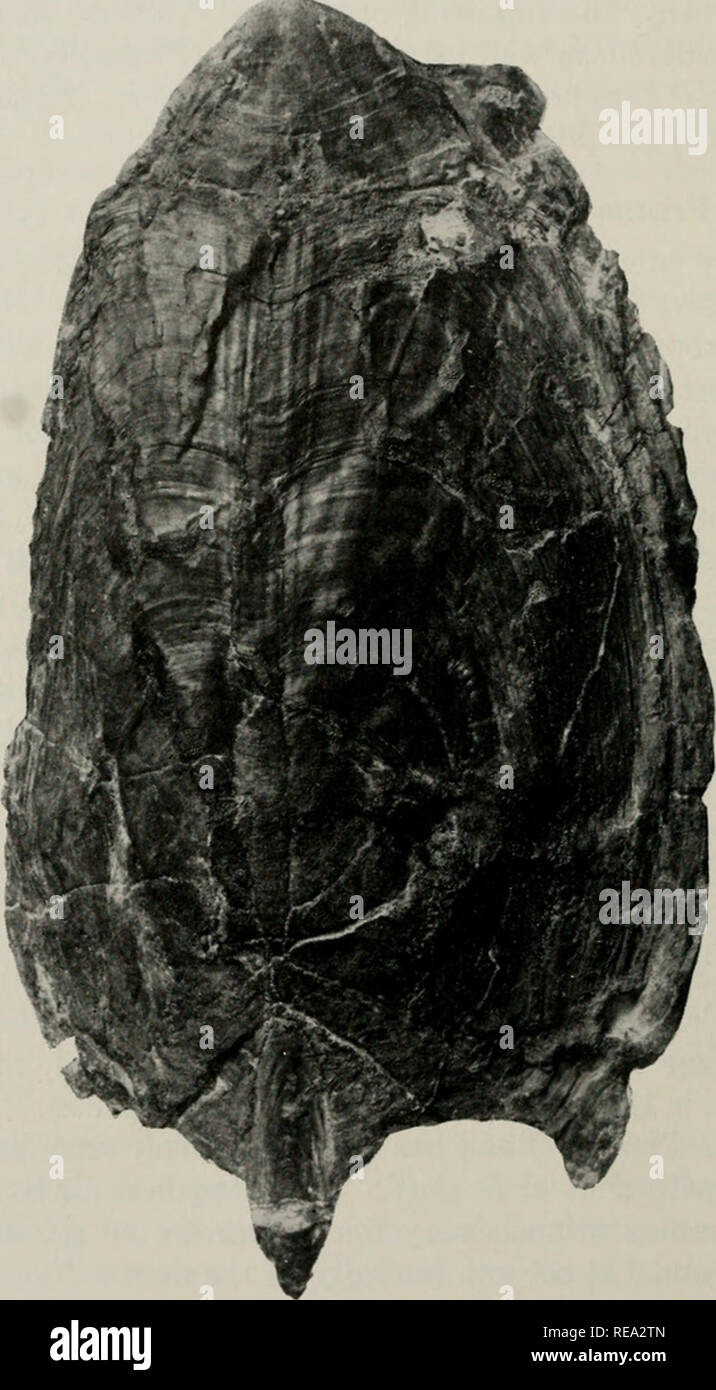 . Early Devonian fishes from Utah : Heteroostraci. Fishes, Fossil; Paleontology -- Devonian; Paleontology -- Utah. 338 FIELDIANA: GEOLOGY, VOLUME 11. Fig. 75. Protaspis dorfi; crushed dorsal shield, PF 868 (X 1). essentials with that of P. cf. bucheri, described on page 322. A new restoration of P. (P.) dorfi, based on PF 868, is given in figure 76. The pattern of the dorsal sensory canals agrees with that of Pteraspis. Protaspis (Protaspis) cf. bucheri (Bryant) A dorsal shield (figs. 77, 78), little crushed, and complete except postero-medially, is doubtfully referred to this species. It was Stock Photohttps://www.alamy.com/image-license-details/?v=1https://www.alamy.com/early-devonian-fishes-from-utah-heteroostraci-fishes-fossil-paleontology-devonian-paleontology-utah-338-fieldiana-geology-volume-11-fig-75-protaspis-dorfi-crushed-dorsal-shield-pf-868-x-1-essentials-with-that-of-p-cf-bucheri-described-on-page-322-a-new-restoration-of-p-p-dorfi-based-on-pf-868-is-given-in-figure-76-the-pattern-of-the-dorsal-sensory-canals-agrees-with-that-of-pteraspis-protaspis-protaspis-cf-bucheri-bryant-a-dorsal-shield-figs-77-78-little-crushed-and-complete-except-postero-medially-is-doubtfully-referred-to-this-species-it-was-image232561749.html
. Early Devonian fishes from Utah : Heteroostraci. Fishes, Fossil; Paleontology -- Devonian; Paleontology -- Utah. 338 FIELDIANA: GEOLOGY, VOLUME 11. Fig. 75. Protaspis dorfi; crushed dorsal shield, PF 868 (X 1). essentials with that of P. cf. bucheri, described on page 322. A new restoration of P. (P.) dorfi, based on PF 868, is given in figure 76. The pattern of the dorsal sensory canals agrees with that of Pteraspis. Protaspis (Protaspis) cf. bucheri (Bryant) A dorsal shield (figs. 77, 78), little crushed, and complete except postero-medially, is doubtfully referred to this species. It was Stock Photohttps://www.alamy.com/image-license-details/?v=1https://www.alamy.com/early-devonian-fishes-from-utah-heteroostraci-fishes-fossil-paleontology-devonian-paleontology-utah-338-fieldiana-geology-volume-11-fig-75-protaspis-dorfi-crushed-dorsal-shield-pf-868-x-1-essentials-with-that-of-p-cf-bucheri-described-on-page-322-a-new-restoration-of-p-p-dorfi-based-on-pf-868-is-given-in-figure-76-the-pattern-of-the-dorsal-sensory-canals-agrees-with-that-of-pteraspis-protaspis-protaspis-cf-bucheri-bryant-a-dorsal-shield-figs-77-78-little-crushed-and-complete-except-postero-medially-is-doubtfully-referred-to-this-species-it-was-image232561749.htmlRMREA2TN–. Early Devonian fishes from Utah : Heteroostraci. Fishes, Fossil; Paleontology -- Devonian; Paleontology -- Utah. 338 FIELDIANA: GEOLOGY, VOLUME 11. Fig. 75. Protaspis dorfi; crushed dorsal shield, PF 868 (X 1). essentials with that of P. cf. bucheri, described on page 322. A new restoration of P. (P.) dorfi, based on PF 868, is given in figure 76. The pattern of the dorsal sensory canals agrees with that of Pteraspis. Protaspis (Protaspis) cf. bucheri (Bryant) A dorsal shield (figs. 77, 78), little crushed, and complete except postero-medially, is doubtfully referred to this species. It was
 . Allgemeine Zoologie und Abstammungslehre. Evolution; Zoology. 216 VI. Kapitel. den ältesten paläozoischen Fischen die verschiedensten Hartgebilde gleichzeitig antreffen. Wir finden bei den Acanthodiern im Silur und Devon Schuppen (195, J), welche eine unverkennbare Aehnlichkeit mit den Ganoidschuppen (D) haben, die auch schon im Devon vorhanden sind. Ferner große Knochenplatten, die mit Placoidschuppen besetzt sind (H), bei Heterostracen {Psammosteus, Pteraspis) und Coelacanthiden (Macropoma) und echte Dipnoidschuppen (G) zu derselben Zeit. Dazu noch Bedeckung mit großen Knochenplatten bei d Stock Photohttps://www.alamy.com/image-license-details/?v=1https://www.alamy.com/allgemeine-zoologie-und-abstammungslehre-evolution-zoology-216-vi-kapitel-den-ltesten-palozoischen-fischen-die-verschiedensten-hartgebilde-gleichzeitig-antreffen-wir-finden-bei-den-acanthodiern-im-silur-und-devon-schuppen-195-j-welche-eine-unverkennbare-aehnlichkeit-mit-den-ganoidschuppen-d-haben-die-auch-schon-im-devon-vorhanden-sind-ferner-groe-knochenplatten-die-mit-placoidschuppen-besetzt-sind-h-bei-heterostracen-psammosteus-pteraspis-und-coelacanthiden-macropoma-und-echte-dipnoidschuppen-g-zu-derselben-zeit-dazu-noch-bedeckung-mit-groen-knochenplatten-bei-d-image237768831.html
. Allgemeine Zoologie und Abstammungslehre. Evolution; Zoology. 216 VI. Kapitel. den ältesten paläozoischen Fischen die verschiedensten Hartgebilde gleichzeitig antreffen. Wir finden bei den Acanthodiern im Silur und Devon Schuppen (195, J), welche eine unverkennbare Aehnlichkeit mit den Ganoidschuppen (D) haben, die auch schon im Devon vorhanden sind. Ferner große Knochenplatten, die mit Placoidschuppen besetzt sind (H), bei Heterostracen {Psammosteus, Pteraspis) und Coelacanthiden (Macropoma) und echte Dipnoidschuppen (G) zu derselben Zeit. Dazu noch Bedeckung mit großen Knochenplatten bei d Stock Photohttps://www.alamy.com/image-license-details/?v=1https://www.alamy.com/allgemeine-zoologie-und-abstammungslehre-evolution-zoology-216-vi-kapitel-den-ltesten-palozoischen-fischen-die-verschiedensten-hartgebilde-gleichzeitig-antreffen-wir-finden-bei-den-acanthodiern-im-silur-und-devon-schuppen-195-j-welche-eine-unverkennbare-aehnlichkeit-mit-den-ganoidschuppen-d-haben-die-auch-schon-im-devon-vorhanden-sind-ferner-groe-knochenplatten-die-mit-placoidschuppen-besetzt-sind-h-bei-heterostracen-psammosteus-pteraspis-und-coelacanthiden-macropoma-und-echte-dipnoidschuppen-g-zu-derselben-zeit-dazu-noch-bedeckung-mit-groen-knochenplatten-bei-d-image237768831.htmlRMRPR8FY–. Allgemeine Zoologie und Abstammungslehre. Evolution; Zoology. 216 VI. Kapitel. den ältesten paläozoischen Fischen die verschiedensten Hartgebilde gleichzeitig antreffen. Wir finden bei den Acanthodiern im Silur und Devon Schuppen (195, J), welche eine unverkennbare Aehnlichkeit mit den Ganoidschuppen (D) haben, die auch schon im Devon vorhanden sind. Ferner große Knochenplatten, die mit Placoidschuppen besetzt sind (H), bei Heterostracen {Psammosteus, Pteraspis) und Coelacanthiden (Macropoma) und echte Dipnoidschuppen (G) zu derselben Zeit. Dazu noch Bedeckung mit großen Knochenplatten bei d
 . Bulletin of the British Museum (Natural History), Geology. . Pteraspis (Pteraspis) dairydinglensis sp. nov. Fig. 3. Imperfect dorsal shield. The holotype. Dairy Dingle. P.29936. Fig. 4. Dorsal spine. Derrington Rea Bridge. P.42005. x i-6. X i-2. than in life. The region around the socket of the dorsal spine is naturally thick and thus reinforced does not crush so readily and still retains much of its original shape, whereas the rostrum is flattened. As preserved the total length, including the socket, is 9-3 cm., the breadth 6-2 cm. flat at the maximum (just in front of the branchial opening Stock Photohttps://www.alamy.com/image-license-details/?v=1https://www.alamy.com/bulletin-of-the-british-museum-natural-history-geology-pteraspis-pteraspis-dairydinglensis-sp-nov-fig-3-imperfect-dorsal-shield-the-holotype-dairy-dingle-p29936-fig-4-dorsal-spine-derrington-rea-bridge-p42005-x-i-6-x-i-2-than-in-life-the-region-around-the-socket-of-the-dorsal-spine-is-naturally-thick-and-thus-reinforced-does-not-crush-so-readily-and-still-retains-much-of-its-original-shape-whereas-the-rostrum-is-flattened-as-preserved-the-total-length-including-the-socket-is-9-3-cm-the-breadth-6-2-cm-flat-at-the-maximum-just-in-front-of-the-branchial-opening-image233986834.html
. Bulletin of the British Museum (Natural History), Geology. . Pteraspis (Pteraspis) dairydinglensis sp. nov. Fig. 3. Imperfect dorsal shield. The holotype. Dairy Dingle. P.29936. Fig. 4. Dorsal spine. Derrington Rea Bridge. P.42005. x i-6. X i-2. than in life. The region around the socket of the dorsal spine is naturally thick and thus reinforced does not crush so readily and still retains much of its original shape, whereas the rostrum is flattened. As preserved the total length, including the socket, is 9-3 cm., the breadth 6-2 cm. flat at the maximum (just in front of the branchial opening Stock Photohttps://www.alamy.com/image-license-details/?v=1https://www.alamy.com/bulletin-of-the-british-museum-natural-history-geology-pteraspis-pteraspis-dairydinglensis-sp-nov-fig-3-imperfect-dorsal-shield-the-holotype-dairy-dingle-p29936-fig-4-dorsal-spine-derrington-rea-bridge-p42005-x-i-6-x-i-2-than-in-life-the-region-around-the-socket-of-the-dorsal-spine-is-naturally-thick-and-thus-reinforced-does-not-crush-so-readily-and-still-retains-much-of-its-original-shape-whereas-the-rostrum-is-flattened-as-preserved-the-total-length-including-the-socket-is-9-3-cm-the-breadth-6-2-cm-flat-at-the-maximum-just-in-front-of-the-branchial-opening-image233986834.htmlRMRGK0GJ–. Bulletin of the British Museum (Natural History), Geology. . Pteraspis (Pteraspis) dairydinglensis sp. nov. Fig. 3. Imperfect dorsal shield. The holotype. Dairy Dingle. P.29936. Fig. 4. Dorsal spine. Derrington Rea Bridge. P.42005. x i-6. X i-2. than in life. The region around the socket of the dorsal spine is naturally thick and thus reinforced does not crush so readily and still retains much of its original shape, whereas the rostrum is flattened. As preserved the total length, including the socket, is 9-3 cm., the breadth 6-2 cm. flat at the maximum (just in front of the branchial opening
 . Bulletin of the British Museum (Natural History), Geology. PTERASPIS LEATHENSIS WHITE, A DITTONIAN ZONE-FOSSIL 79 Isolated scales (Text-figs. 10-14; PI. 5, Figs. 3-5) are plentiful at both Porch Brook and Leath Stream, but only the former are weU preserved. The same types of scales are found as in P. rostrata (White, 1935: 413, text-figs. 56-62, pi. 27) and the ano- malous double scales are well represented. The ordinary flank-scales tend to be rather less regularly diamond-shaped and the anterior ridge-scales less pointed than in the. Text-fig. 4. Pteraspis {Simopteraspis) leathensis White. Stock Photohttps://www.alamy.com/image-license-details/?v=1https://www.alamy.com/bulletin-of-the-british-museum-natural-history-geology-pteraspis-leathensis-white-a-dittonian-zone-fossil-79-isolated-scales-text-figs-10-14-pi-5-figs-3-5-are-plentiful-at-both-porch-brook-and-leath-stream-but-only-the-former-are-weu-preserved-the-same-types-of-scales-are-found-as-in-p-rostrata-white-1935-413-text-figs-56-62-pi-27-and-the-ano-malous-double-scales-are-well-represented-the-ordinary-flank-scales-tend-to-be-rather-less-regularly-diamond-shaped-and-the-anterior-ridge-scales-less-pointed-than-in-the-text-fig-4-pteraspis-simopteraspis-leathensis-white-image233996184.html
. Bulletin of the British Museum (Natural History), Geology. PTERASPIS LEATHENSIS WHITE, A DITTONIAN ZONE-FOSSIL 79 Isolated scales (Text-figs. 10-14; PI. 5, Figs. 3-5) are plentiful at both Porch Brook and Leath Stream, but only the former are weU preserved. The same types of scales are found as in P. rostrata (White, 1935: 413, text-figs. 56-62, pi. 27) and the ano- malous double scales are well represented. The ordinary flank-scales tend to be rather less regularly diamond-shaped and the anterior ridge-scales less pointed than in the. Text-fig. 4. Pteraspis {Simopteraspis) leathensis White. Stock Photohttps://www.alamy.com/image-license-details/?v=1https://www.alamy.com/bulletin-of-the-british-museum-natural-history-geology-pteraspis-leathensis-white-a-dittonian-zone-fossil-79-isolated-scales-text-figs-10-14-pi-5-figs-3-5-are-plentiful-at-both-porch-brook-and-leath-stream-but-only-the-former-are-weu-preserved-the-same-types-of-scales-are-found-as-in-p-rostrata-white-1935-413-text-figs-56-62-pi-27-and-the-ano-malous-double-scales-are-well-represented-the-ordinary-flank-scales-tend-to-be-rather-less-regularly-diamond-shaped-and-the-anterior-ridge-scales-less-pointed-than-in-the-text-fig-4-pteraspis-simopteraspis-leathensis-white-image233996184.htmlRMRGKCEG–. Bulletin of the British Museum (Natural History), Geology. PTERASPIS LEATHENSIS WHITE, A DITTONIAN ZONE-FOSSIL 79 Isolated scales (Text-figs. 10-14; PI. 5, Figs. 3-5) are plentiful at both Porch Brook and Leath Stream, but only the former are weU preserved. The same types of scales are found as in P. rostrata (White, 1935: 413, text-figs. 56-62, pi. 27) and the ano- malous double scales are well represented. The ordinary flank-scales tend to be rather less regularly diamond-shaped and the anterior ridge-scales less pointed than in the. Text-fig. 4. Pteraspis {Simopteraspis) leathensis White.
 . Bulletin of the British Museum (Natural History), Geology. . Text-figs. 19-22. Restorations of dorsal shields of species of Pteraspis (Simopteraspis). Fig. ig. P. {S). gosseleti'Lenche; X 2. Fig. 20. P. (S). leaihen- sis White; x ij. Fig. 21. P. (5). w^/i Kiaer; x ij. Fig. 22. P. (S). primaeva Kiaer; x 2.. Please note that these images are extracted from scanned page images that may have been digitally enhanced for readability - coloration and appearance of these illustrations may not perfectly resemble the original work.. British Museum (Natural History). London : BM(NH) Stock Photohttps://www.alamy.com/image-license-details/?v=1https://www.alamy.com/bulletin-of-the-british-museum-natural-history-geology-text-figs-19-22-restorations-of-dorsal-shields-of-species-of-pteraspis-simopteraspis-fig-ig-p-s-gosseletilenche-x-2-fig-20-p-s-leaihen-sis-white-x-ij-fig-21-p-5-wi-kiaer-x-ij-fig-22-p-s-primaeva-kiaer-x-2-please-note-that-these-images-are-extracted-from-scanned-page-images-that-may-have-been-digitally-enhanced-for-readability-coloration-and-appearance-of-these-illustrations-may-not-perfectly-resemble-the-original-work-british-museum-natural-history-london-bmnh-image233996089.html
. Bulletin of the British Museum (Natural History), Geology. . Text-figs. 19-22. Restorations of dorsal shields of species of Pteraspis (Simopteraspis). Fig. ig. P. {S). gosseleti'Lenche; X 2. Fig. 20. P. (S). leaihen- sis White; x ij. Fig. 21. P. (5). w^/i Kiaer; x ij. Fig. 22. P. (S). primaeva Kiaer; x 2.. Please note that these images are extracted from scanned page images that may have been digitally enhanced for readability - coloration and appearance of these illustrations may not perfectly resemble the original work.. British Museum (Natural History). London : BM(NH) Stock Photohttps://www.alamy.com/image-license-details/?v=1https://www.alamy.com/bulletin-of-the-british-museum-natural-history-geology-text-figs-19-22-restorations-of-dorsal-shields-of-species-of-pteraspis-simopteraspis-fig-ig-p-s-gosseletilenche-x-2-fig-20-p-s-leaihen-sis-white-x-ij-fig-21-p-5-wi-kiaer-x-ij-fig-22-p-s-primaeva-kiaer-x-2-please-note-that-these-images-are-extracted-from-scanned-page-images-that-may-have-been-digitally-enhanced-for-readability-coloration-and-appearance-of-these-illustrations-may-not-perfectly-resemble-the-original-work-british-museum-natural-history-london-bmnh-image233996089.htmlRMRGKCB5–. Bulletin of the British Museum (Natural History), Geology. . Text-figs. 19-22. Restorations of dorsal shields of species of Pteraspis (Simopteraspis). Fig. ig. P. {S). gosseleti'Lenche; X 2. Fig. 20. P. (S). leaihen- sis White; x ij. Fig. 21. P. (5). w^/i Kiaer; x ij. Fig. 22. P. (S). primaeva Kiaer; x 2.. Please note that these images are extracted from scanned page images that may have been digitally enhanced for readability - coloration and appearance of these illustrations may not perfectly resemble the original work.. British Museum (Natural History). London : BM(NH)
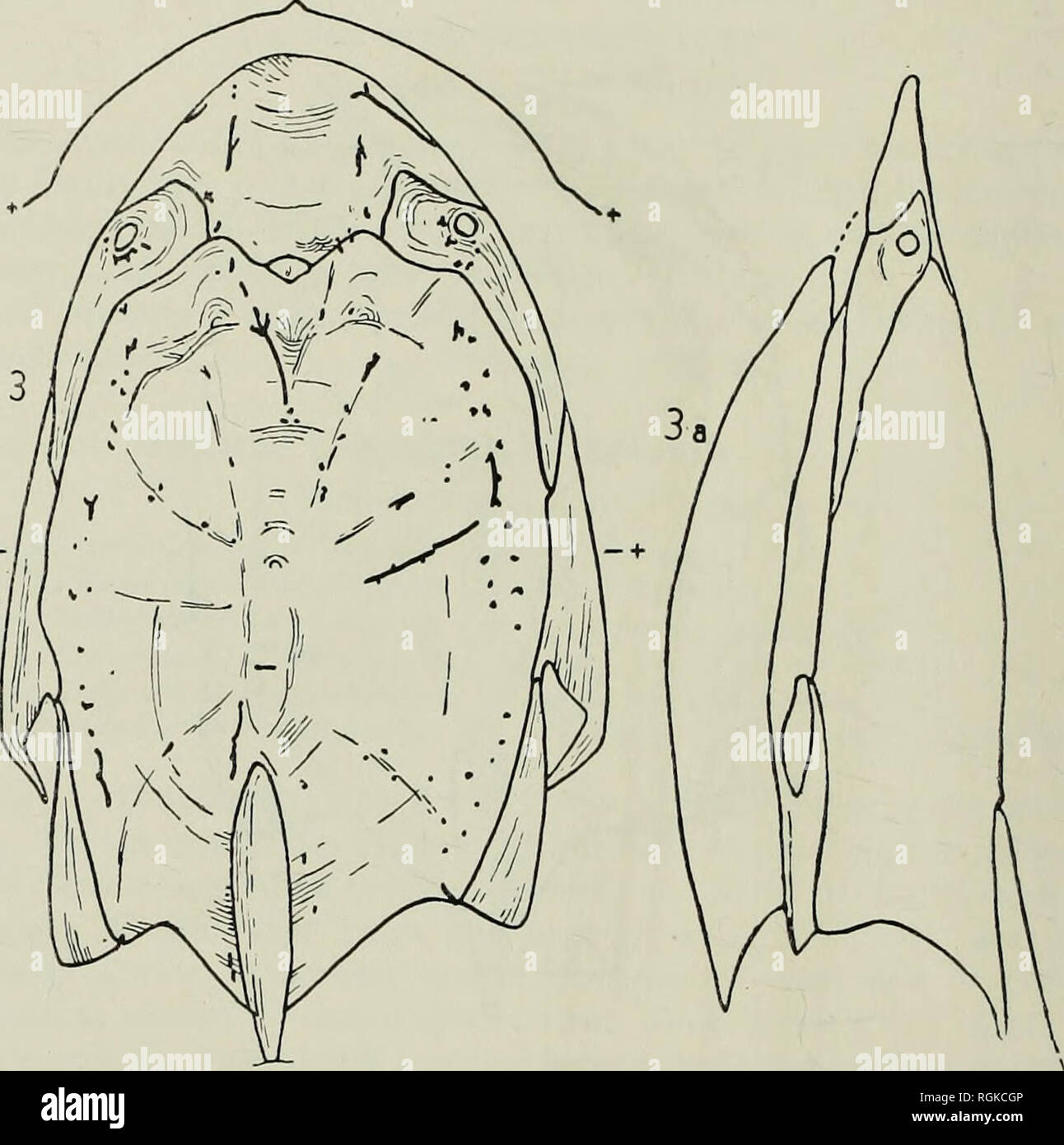 . Bulletin of the British Museum (Natural History), Geology. 78 PTERASPIS LEATHENSIS WHITE, A DITTONIAN ZONE-FOSSIL The branchial plates are long, and the cornual plates small and narrow in the Ammons Hill specimens (Text-figs. 3, 4), but rather wider and more triangular in those from Porch Brook (Text-fig. 7; PL 5, Fig. 2). Text-fig. 7 shows a most remarkable specimen, the earliest instance of teratology in a vertebrate animal that I know. It is the left side of a blind monster of the small. Text-fig. 3. Pteraspis (Simopteraspis) leathensis White. External impres- sion of complete dorsal shie Stock Photohttps://www.alamy.com/image-license-details/?v=1https://www.alamy.com/bulletin-of-the-british-museum-natural-history-geology-78-pteraspis-leathensis-white-a-dittonian-zone-fossil-the-branchial-plates-are-long-and-the-cornual-plates-small-and-narrow-in-the-ammons-hill-specimens-text-figs-3-4-but-rather-wider-and-more-triangular-in-those-from-porch-brook-text-fig-7-pl-5-fig-2-text-fig-7-shows-a-most-remarkable-specimen-the-earliest-instance-of-teratology-in-a-vertebrate-animal-that-i-know-it-is-the-left-side-of-a-blind-monster-of-the-small-text-fig-3-pteraspis-simopteraspis-leathensis-white-external-impres-sion-of-complete-dorsal-shie-image233996246.html
. Bulletin of the British Museum (Natural History), Geology. 78 PTERASPIS LEATHENSIS WHITE, A DITTONIAN ZONE-FOSSIL The branchial plates are long, and the cornual plates small and narrow in the Ammons Hill specimens (Text-figs. 3, 4), but rather wider and more triangular in those from Porch Brook (Text-fig. 7; PL 5, Fig. 2). Text-fig. 7 shows a most remarkable specimen, the earliest instance of teratology in a vertebrate animal that I know. It is the left side of a blind monster of the small. Text-fig. 3. Pteraspis (Simopteraspis) leathensis White. External impres- sion of complete dorsal shie Stock Photohttps://www.alamy.com/image-license-details/?v=1https://www.alamy.com/bulletin-of-the-british-museum-natural-history-geology-78-pteraspis-leathensis-white-a-dittonian-zone-fossil-the-branchial-plates-are-long-and-the-cornual-plates-small-and-narrow-in-the-ammons-hill-specimens-text-figs-3-4-but-rather-wider-and-more-triangular-in-those-from-porch-brook-text-fig-7-pl-5-fig-2-text-fig-7-shows-a-most-remarkable-specimen-the-earliest-instance-of-teratology-in-a-vertebrate-animal-that-i-know-it-is-the-left-side-of-a-blind-monster-of-the-small-text-fig-3-pteraspis-simopteraspis-leathensis-white-external-impres-sion-of-complete-dorsal-shie-image233996246.htmlRMRGKCGP–. Bulletin of the British Museum (Natural History), Geology. 78 PTERASPIS LEATHENSIS WHITE, A DITTONIAN ZONE-FOSSIL The branchial plates are long, and the cornual plates small and narrow in the Ammons Hill specimens (Text-figs. 3, 4), but rather wider and more triangular in those from Porch Brook (Text-fig. 7; PL 5, Fig. 2). Text-fig. 7 shows a most remarkable specimen, the earliest instance of teratology in a vertebrate animal that I know. It is the left side of a blind monster of the small. Text-fig. 3. Pteraspis (Simopteraspis) leathensis White. External impres- sion of complete dorsal shie
 . Bulletin of the British Museum (Natural History), Geology. 248 THE OLD RED SANDSTONE OF BROWN CLEE HILL Pteraspis (Pteraspis) rostrata var. waynensis White (Text-fig. i) Jubilee Brook i. Two rostra with part of orbitals, etc. attached (P.30053, P.30056). The inner anterior borders of the orbitals are concave and the medial extensions meet the pineal plate. The second specimen is 27 cm. in length with a maximum breadth of 2-4 cm. (Text-fig. 1). (250 ft. above " Psammosteus " Limestone.). Please note that these images are extracted from scanned page images that may have been digitall Stock Photohttps://www.alamy.com/image-license-details/?v=1https://www.alamy.com/bulletin-of-the-british-museum-natural-history-geology-248-the-old-red-sandstone-of-brown-clee-hill-pteraspis-pteraspis-rostrata-var-waynensis-white-text-fig-i-jubilee-brook-i-two-rostra-with-part-of-orbitals-etc-attached-p30053-p30056-the-inner-anterior-borders-of-the-orbitals-are-concave-and-the-medial-extensions-meet-the-pineal-plate-the-second-specimen-is-27-cm-in-length-with-a-maximum-breadth-of-2-4-cm-text-fig-1-250-ft-above-quot-psammosteus-quot-limestone-please-note-that-these-images-are-extracted-from-scanned-page-images-that-may-have-been-digitall-image233986888.html
. Bulletin of the British Museum (Natural History), Geology. 248 THE OLD RED SANDSTONE OF BROWN CLEE HILL Pteraspis (Pteraspis) rostrata var. waynensis White (Text-fig. i) Jubilee Brook i. Two rostra with part of orbitals, etc. attached (P.30053, P.30056). The inner anterior borders of the orbitals are concave and the medial extensions meet the pineal plate. The second specimen is 27 cm. in length with a maximum breadth of 2-4 cm. (Text-fig. 1). (250 ft. above " Psammosteus " Limestone.). Please note that these images are extracted from scanned page images that may have been digitall Stock Photohttps://www.alamy.com/image-license-details/?v=1https://www.alamy.com/bulletin-of-the-british-museum-natural-history-geology-248-the-old-red-sandstone-of-brown-clee-hill-pteraspis-pteraspis-rostrata-var-waynensis-white-text-fig-i-jubilee-brook-i-two-rostra-with-part-of-orbitals-etc-attached-p30053-p30056-the-inner-anterior-borders-of-the-orbitals-are-concave-and-the-medial-extensions-meet-the-pineal-plate-the-second-specimen-is-27-cm-in-length-with-a-maximum-breadth-of-2-4-cm-text-fig-1-250-ft-above-quot-psammosteus-quot-limestone-please-note-that-these-images-are-extracted-from-scanned-page-images-that-may-have-been-digitall-image233986888.htmlRMRGK0JG–. Bulletin of the British Museum (Natural History), Geology. 248 THE OLD RED SANDSTONE OF BROWN CLEE HILL Pteraspis (Pteraspis) rostrata var. waynensis White (Text-fig. i) Jubilee Brook i. Two rostra with part of orbitals, etc. attached (P.30053, P.30056). The inner anterior borders of the orbitals are concave and the medial extensions meet the pineal plate. The second specimen is 27 cm. in length with a maximum breadth of 2-4 cm. (Text-fig. 1). (250 ft. above " Psammosteus " Limestone.). Please note that these images are extracted from scanned page images that may have been digitall
 . Bulletin de la Société belge de géologie, de paléontologie et d'hydrologie. Geology; Paleontology. 354 AD. KEMNA. — LES RÉGENTES DÉCOUVERTES latérale. Tl y aurait donc eu, malgré l'absence ou le peu d'importance des cassures, une déformation assez considérable.. V C Fig. 2. — Pteraspis rostrala vu de profil et du côté gauche ; ENVIRON UN TIERS DE GRANDEUR NATURELLE.. Please note that these images are extracted from scanned page images that may have been digitally enhanced for readability - coloration and appearance of these illustrations may not perfectly resemble the original work.. Société Stock Photohttps://www.alamy.com/image-license-details/?v=1https://www.alamy.com/bulletin-de-la-socit-belge-de-gologie-de-palontologie-et-dhydrologie-geology-paleontology-354-ad-kemna-les-rgentes-dcouvertes-latrale-tl-y-aurait-donc-eu-malgr-labsence-ou-le-peu-dimportance-des-cassures-une-dformation-assez-considrable-v-c-fig-2-pteraspis-rostrala-vu-de-profil-et-du-ct-gauche-environ-un-tiers-de-grandeur-naturelle-please-note-that-these-images-are-extracted-from-scanned-page-images-that-may-have-been-digitally-enhanced-for-readability-coloration-and-appearance-of-these-illustrations-may-not-perfectly-resemble-the-original-work-socit-image234079115.html
. Bulletin de la Société belge de géologie, de paléontologie et d'hydrologie. Geology; Paleontology. 354 AD. KEMNA. — LES RÉGENTES DÉCOUVERTES latérale. Tl y aurait donc eu, malgré l'absence ou le peu d'importance des cassures, une déformation assez considérable.. V C Fig. 2. — Pteraspis rostrala vu de profil et du côté gauche ; ENVIRON UN TIERS DE GRANDEUR NATURELLE.. Please note that these images are extracted from scanned page images that may have been digitally enhanced for readability - coloration and appearance of these illustrations may not perfectly resemble the original work.. Société Stock Photohttps://www.alamy.com/image-license-details/?v=1https://www.alamy.com/bulletin-de-la-socit-belge-de-gologie-de-palontologie-et-dhydrologie-geology-paleontology-354-ad-kemna-les-rgentes-dcouvertes-latrale-tl-y-aurait-donc-eu-malgr-labsence-ou-le-peu-dimportance-des-cassures-une-dformation-assez-considrable-v-c-fig-2-pteraspis-rostrala-vu-de-profil-et-du-ct-gauche-environ-un-tiers-de-grandeur-naturelle-please-note-that-these-images-are-extracted-from-scanned-page-images-that-may-have-been-digitally-enhanced-for-readability-coloration-and-appearance-of-these-illustrations-may-not-perfectly-resemble-the-original-work-socit-image234079115.htmlRMRGR68B–. Bulletin de la Société belge de géologie, de paléontologie et d'hydrologie. Geology; Paleontology. 354 AD. KEMNA. — LES RÉGENTES DÉCOUVERTES latérale. Tl y aurait donc eu, malgré l'absence ou le peu d'importance des cassures, une déformation assez considérable.. V C Fig. 2. — Pteraspis rostrala vu de profil et du côté gauche ; ENVIRON UN TIERS DE GRANDEUR NATURELLE.. Please note that these images are extracted from scanned page images that may have been digitally enhanced for readability - coloration and appearance of these illustrations may not perfectly resemble the original work.. Société
 . A dictionary of the fossils of Pennsylvania and neighboring states named in the reports and catalogues of the survey ... Paleontology. Il ALt^oiit 576 See Pteraspis, for figure illustratiye of the internal struc- ture of shield. PalaeasterP dyeri. Meek, American Jour. Sci. Vol. 3,1872-. Pal. Ohio, Vol. 1, 1873, page 58, plate 4, fig. 2 a, part of ven- tral side of a specimen, part of disc, parts of rays, some mar- ginal and ambulacral pieces with spines, a few dorsal pieces of one ray distorted, the whole obscured by shale; 2 S, magniUed (X2) underside of part of one ray; 2 c, mag, (X2} part Stock Photohttps://www.alamy.com/image-license-details/?v=1https://www.alamy.com/a-dictionary-of-the-fossils-of-pennsylvania-and-neighboring-states-named-in-the-reports-and-catalogues-of-the-survey-paleontology-il-altoiit-576-see-pteraspis-for-figure-illustratiye-of-the-internal-struc-ture-of-shield-palaeasterp-dyeri-meek-american-jour-sci-vol-31872-pal-ohio-vol-1-1873-page-58-plate-4-fig-2-a-part-of-ven-tral-side-of-a-specimen-part-of-disc-parts-of-rays-some-mar-ginal-and-ambulacral-pieces-with-spines-a-few-dorsal-pieces-of-one-ray-distorted-the-whole-obscured-by-shale-2-s-magniued-x2-underside-of-part-of-one-ray-2-c-mag-x2-part-image231926367.html
. A dictionary of the fossils of Pennsylvania and neighboring states named in the reports and catalogues of the survey ... Paleontology. Il ALt^oiit 576 See Pteraspis, for figure illustratiye of the internal struc- ture of shield. PalaeasterP dyeri. Meek, American Jour. Sci. Vol. 3,1872-. Pal. Ohio, Vol. 1, 1873, page 58, plate 4, fig. 2 a, part of ven- tral side of a specimen, part of disc, parts of rays, some mar- ginal and ambulacral pieces with spines, a few dorsal pieces of one ray distorted, the whole obscured by shale; 2 S, magniUed (X2) underside of part of one ray; 2 c, mag, (X2} part Stock Photohttps://www.alamy.com/image-license-details/?v=1https://www.alamy.com/a-dictionary-of-the-fossils-of-pennsylvania-and-neighboring-states-named-in-the-reports-and-catalogues-of-the-survey-paleontology-il-altoiit-576-see-pteraspis-for-figure-illustratiye-of-the-internal-struc-ture-of-shield-palaeasterp-dyeri-meek-american-jour-sci-vol-31872-pal-ohio-vol-1-1873-page-58-plate-4-fig-2-a-part-of-ven-tral-side-of-a-specimen-part-of-disc-parts-of-rays-some-mar-ginal-and-ambulacral-pieces-with-spines-a-few-dorsal-pieces-of-one-ray-distorted-the-whole-obscured-by-shale-2-s-magniued-x2-underside-of-part-of-one-ray-2-c-mag-x2-part-image231926367.htmlRMRD94CF–. A dictionary of the fossils of Pennsylvania and neighboring states named in the reports and catalogues of the survey ... Paleontology. Il ALt^oiit 576 See Pteraspis, for figure illustratiye of the internal struc- ture of shield. PalaeasterP dyeri. Meek, American Jour. Sci. Vol. 3,1872-. Pal. Ohio, Vol. 1, 1873, page 58, plate 4, fig. 2 a, part of ven- tral side of a specimen, part of disc, parts of rays, some mar- ginal and ambulacral pieces with spines, a few dorsal pieces of one ray distorted, the whole obscured by shale; 2 S, magniUed (X2) underside of part of one ray; 2 c, mag, (X2} part
 . Bulletin of the British Museum (Natural History), Geology. . Fig. 1. Pteraspis (Pteraspis) rostrata var. waynensis White. Rostrum with part of left orbital plate. Jubilee Brook 1. P.30056. x 1-5. Fig. 2. Pteraspis (Pteraspis) rostrata var. trimpleyensis White. Anterior part of dorsal shield, in impression. Bouldon Ford. P.29955. x I-5- Pteraspis (Pteraspis) rostrata var. trimpleyensis White (PI. 34, fig. 5 ; PI. 35, figs. 1, 2 ; Text-fig. 2) Bouldon Ford. External impression of part of dorsal shield with abnormal sensory canals (P.29955 ; Text-fig. 2) and other fragments. (50 ft. above " Stock Photohttps://www.alamy.com/image-license-details/?v=1https://www.alamy.com/bulletin-of-the-british-museum-natural-history-geology-fig-1-pteraspis-pteraspis-rostrata-var-waynensis-white-rostrum-with-part-of-left-orbital-plate-jubilee-brook-1-p30056-x-1-5-fig-2-pteraspis-pteraspis-rostrata-var-trimpleyensis-white-anterior-part-of-dorsal-shield-in-impression-bouldon-ford-p29955-x-i-5-pteraspis-pteraspis-rostrata-var-trimpleyensis-white-pi-34-fig-5-pi-35-figs-1-2-text-fig-2-bouldon-ford-external-impression-of-part-of-dorsal-shield-with-abnormal-sensory-canals-p29955-text-fig-2-and-other-fragments-50-ft-above-quot-image233986866.html
. Bulletin of the British Museum (Natural History), Geology. . Fig. 1. Pteraspis (Pteraspis) rostrata var. waynensis White. Rostrum with part of left orbital plate. Jubilee Brook 1. P.30056. x 1-5. Fig. 2. Pteraspis (Pteraspis) rostrata var. trimpleyensis White. Anterior part of dorsal shield, in impression. Bouldon Ford. P.29955. x I-5- Pteraspis (Pteraspis) rostrata var. trimpleyensis White (PI. 34, fig. 5 ; PI. 35, figs. 1, 2 ; Text-fig. 2) Bouldon Ford. External impression of part of dorsal shield with abnormal sensory canals (P.29955 ; Text-fig. 2) and other fragments. (50 ft. above " Stock Photohttps://www.alamy.com/image-license-details/?v=1https://www.alamy.com/bulletin-of-the-british-museum-natural-history-geology-fig-1-pteraspis-pteraspis-rostrata-var-waynensis-white-rostrum-with-part-of-left-orbital-plate-jubilee-brook-1-p30056-x-1-5-fig-2-pteraspis-pteraspis-rostrata-var-trimpleyensis-white-anterior-part-of-dorsal-shield-in-impression-bouldon-ford-p29955-x-i-5-pteraspis-pteraspis-rostrata-var-trimpleyensis-white-pi-34-fig-5-pi-35-figs-1-2-text-fig-2-bouldon-ford-external-impression-of-part-of-dorsal-shield-with-abnormal-sensory-canals-p29955-text-fig-2-and-other-fragments-50-ft-above-quot-image233986866.htmlRMRGK0HP–. Bulletin of the British Museum (Natural History), Geology. . Fig. 1. Pteraspis (Pteraspis) rostrata var. waynensis White. Rostrum with part of left orbital plate. Jubilee Brook 1. P.30056. x 1-5. Fig. 2. Pteraspis (Pteraspis) rostrata var. trimpleyensis White. Anterior part of dorsal shield, in impression. Bouldon Ford. P.29955. x I-5- Pteraspis (Pteraspis) rostrata var. trimpleyensis White (PI. 34, fig. 5 ; PI. 35, figs. 1, 2 ; Text-fig. 2) Bouldon Ford. External impression of part of dorsal shield with abnormal sensory canals (P.29955 ; Text-fig. 2) and other fragments. (50 ft. above "
![. Bulletin of the British Museum (Natural History), Geology. EXPLANATION OF PLATE 5 Pteraspis [Simopteraspis] leathensis White Fig. I. Flattened fragmentary dorsal shield showing complete rostral and pineal plates and part of both orbitals and median disk. [B.U.487. x 4.] Fig. 2. Flattened left posterior region of dorsal shield showing cornual plate and part of branchial plate and dorsal disk. [B.U.485. x 4.] Fig. 3. Posterior ridge-scale lacking posterior (top) end and area of overlap. [B.U.4946. X 16 approx.] Fig. 4. Left double flank-scale. Area of overlap missing. [B.U.494a. X 16 approx.] Stock Photo . Bulletin of the British Museum (Natural History), Geology. EXPLANATION OF PLATE 5 Pteraspis [Simopteraspis] leathensis White Fig. I. Flattened fragmentary dorsal shield showing complete rostral and pineal plates and part of both orbitals and median disk. [B.U.487. x 4.] Fig. 2. Flattened left posterior region of dorsal shield showing cornual plate and part of branchial plate and dorsal disk. [B.U.485. x 4.] Fig. 3. Posterior ridge-scale lacking posterior (top) end and area of overlap. [B.U.4946. X 16 approx.] Fig. 4. Left double flank-scale. Area of overlap missing. [B.U.494a. X 16 approx.] Stock Photo](https://c8.alamy.com/comp/RGKCAC/bulletin-of-the-british-museum-natural-history-geology-explanation-of-plate-5-pteraspis-simopteraspis-leathensis-white-fig-i-flattened-fragmentary-dorsal-shield-showing-complete-rostral-and-pineal-plates-and-part-of-both-orbitals-and-median-disk-bu487-x-4-fig-2-flattened-left-posterior-region-of-dorsal-shield-showing-cornual-plate-and-part-of-branchial-plate-and-dorsal-disk-bu485-x-4-fig-3-posterior-ridge-scale-lacking-posterior-top-end-and-area-of-overlap-bu4946-x-16-approx-fig-4-left-double-flank-scale-area-of-overlap-missing-bu494a-x-16-approx-RGKCAC.jpg) . Bulletin of the British Museum (Natural History), Geology. EXPLANATION OF PLATE 5 Pteraspis [Simopteraspis] leathensis White Fig. I. Flattened fragmentary dorsal shield showing complete rostral and pineal plates and part of both orbitals and median disk. [B.U.487. x 4.] Fig. 2. Flattened left posterior region of dorsal shield showing cornual plate and part of branchial plate and dorsal disk. [B.U.485. x 4.] Fig. 3. Posterior ridge-scale lacking posterior (top) end and area of overlap. [B.U.4946. X 16 approx.] Fig. 4. Left double flank-scale. Area of overlap missing. [B.U.494a. X 16 approx.] Stock Photohttps://www.alamy.com/image-license-details/?v=1https://www.alamy.com/bulletin-of-the-british-museum-natural-history-geology-explanation-of-plate-5-pteraspis-simopteraspis-leathensis-white-fig-i-flattened-fragmentary-dorsal-shield-showing-complete-rostral-and-pineal-plates-and-part-of-both-orbitals-and-median-disk-bu487-x-4-fig-2-flattened-left-posterior-region-of-dorsal-shield-showing-cornual-plate-and-part-of-branchial-plate-and-dorsal-disk-bu485-x-4-fig-3-posterior-ridge-scale-lacking-posterior-top-end-and-area-of-overlap-bu4946-x-16-approx-fig-4-left-double-flank-scale-area-of-overlap-missing-bu494a-x-16-approx-image233996068.html
. Bulletin of the British Museum (Natural History), Geology. EXPLANATION OF PLATE 5 Pteraspis [Simopteraspis] leathensis White Fig. I. Flattened fragmentary dorsal shield showing complete rostral and pineal plates and part of both orbitals and median disk. [B.U.487. x 4.] Fig. 2. Flattened left posterior region of dorsal shield showing cornual plate and part of branchial plate and dorsal disk. [B.U.485. x 4.] Fig. 3. Posterior ridge-scale lacking posterior (top) end and area of overlap. [B.U.4946. X 16 approx.] Fig. 4. Left double flank-scale. Area of overlap missing. [B.U.494a. X 16 approx.] Stock Photohttps://www.alamy.com/image-license-details/?v=1https://www.alamy.com/bulletin-of-the-british-museum-natural-history-geology-explanation-of-plate-5-pteraspis-simopteraspis-leathensis-white-fig-i-flattened-fragmentary-dorsal-shield-showing-complete-rostral-and-pineal-plates-and-part-of-both-orbitals-and-median-disk-bu487-x-4-fig-2-flattened-left-posterior-region-of-dorsal-shield-showing-cornual-plate-and-part-of-branchial-plate-and-dorsal-disk-bu485-x-4-fig-3-posterior-ridge-scale-lacking-posterior-top-end-and-area-of-overlap-bu4946-x-16-approx-fig-4-left-double-flank-scale-area-of-overlap-missing-bu494a-x-16-approx-image233996068.htmlRMRGKCAC–. Bulletin of the British Museum (Natural History), Geology. EXPLANATION OF PLATE 5 Pteraspis [Simopteraspis] leathensis White Fig. I. Flattened fragmentary dorsal shield showing complete rostral and pineal plates and part of both orbitals and median disk. [B.U.487. x 4.] Fig. 2. Flattened left posterior region of dorsal shield showing cornual plate and part of branchial plate and dorsal disk. [B.U.485. x 4.] Fig. 3. Posterior ridge-scale lacking posterior (top) end and area of overlap. [B.U.4946. X 16 approx.] Fig. 4. Left double flank-scale. Area of overlap missing. [B.U.494a. X 16 approx.]
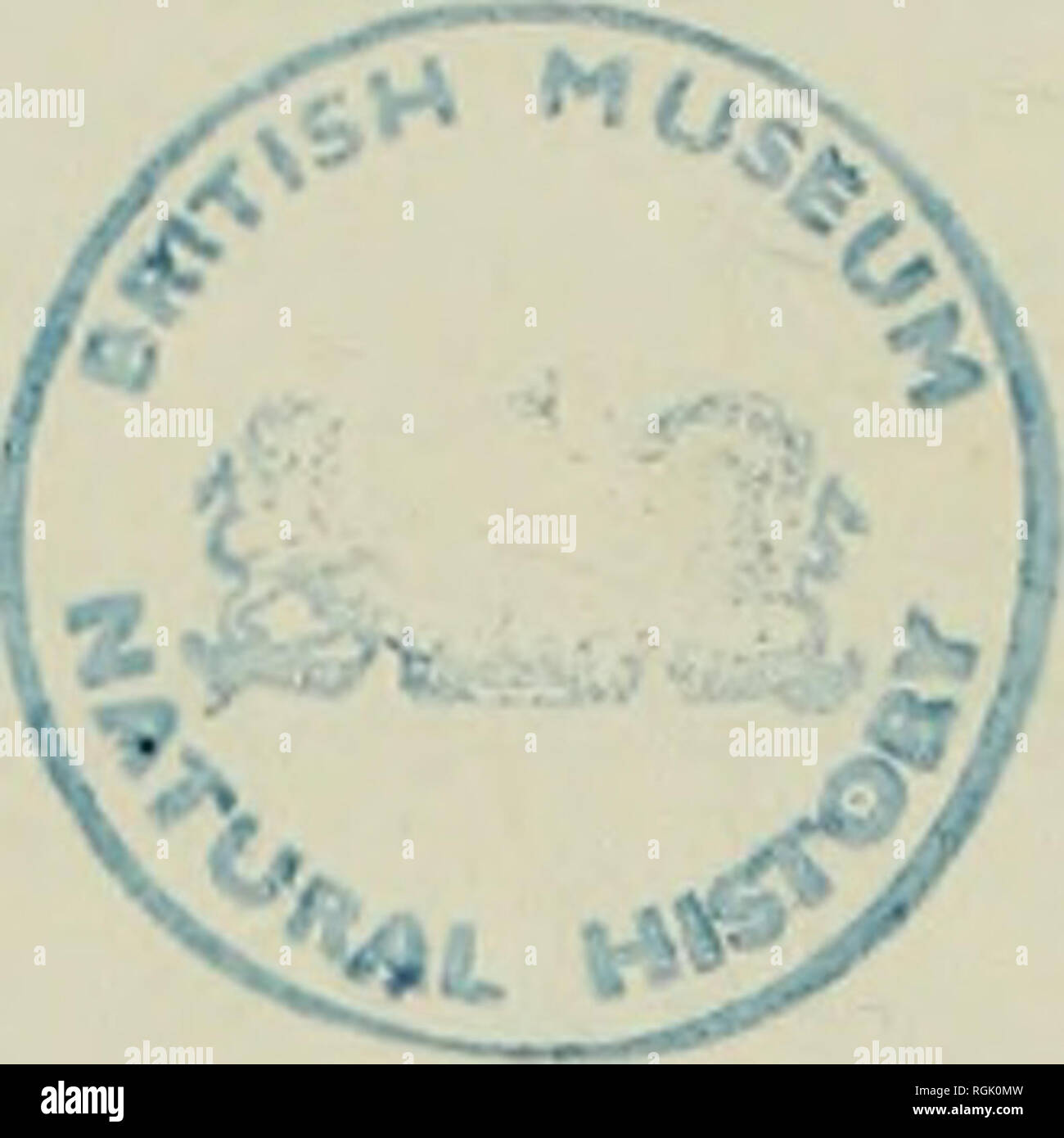 . Bulletin of the British Museum (Natural History), Geology. 220 A NEW TROCHILISCUS (CHAROPHYTA) Borders. Pteraspis leathensis White, a Dittonian Zone-fossil. Bull. Brit. Mus. {Nat. Hist.), London (Geol.) 1, 3: 51-89, pi. 5. Wood, R. D. 1947. Characeae of the Put-in-Bay Region of Lake Erie (Ohio). Ohio J. Sci., Columbus, 47: 240-258, pis. 1-4. Woods, H. 1947. Palaeontology Invertebrate. 8th ed. 477 pp., 221 figs. Cambridge. WoRSDELL, W. C. 1916. The Principles of Plant Teratology, 2. xvi + 296 pp., pis. 26-53, 155 figs. Ray Soc., London. Zych, W. 1927. Old-Red de la Podolie. Trav. Serv. Geol. Stock Photohttps://www.alamy.com/image-license-details/?v=1https://www.alamy.com/bulletin-of-the-british-museum-natural-history-geology-220-a-new-trochiliscus-charophyta-borders-pteraspis-leathensis-white-a-dittonian-zone-fossil-bull-brit-mus-nat-hist-london-geol-1-3-51-89-pi-5-wood-r-d-1947-characeae-of-the-put-in-bay-region-of-lake-erie-ohio-ohio-j-sci-columbus-47-240-258-pis-1-4-woods-h-1947-palaeontology-invertebrate-8th-ed-477-pp-221-figs-cambridge-worsdell-w-c-1916-the-principles-of-plant-teratology-2-xvi-296-pp-pis-26-53-155-figs-ray-soc-london-zych-w-1927-old-red-de-la-podolie-trav-serv-geol-image233986953.html
. Bulletin of the British Museum (Natural History), Geology. 220 A NEW TROCHILISCUS (CHAROPHYTA) Borders. Pteraspis leathensis White, a Dittonian Zone-fossil. Bull. Brit. Mus. {Nat. Hist.), London (Geol.) 1, 3: 51-89, pi. 5. Wood, R. D. 1947. Characeae of the Put-in-Bay Region of Lake Erie (Ohio). Ohio J. Sci., Columbus, 47: 240-258, pis. 1-4. Woods, H. 1947. Palaeontology Invertebrate. 8th ed. 477 pp., 221 figs. Cambridge. WoRSDELL, W. C. 1916. The Principles of Plant Teratology, 2. xvi + 296 pp., pis. 26-53, 155 figs. Ray Soc., London. Zych, W. 1927. Old-Red de la Podolie. Trav. Serv. Geol. Stock Photohttps://www.alamy.com/image-license-details/?v=1https://www.alamy.com/bulletin-of-the-british-museum-natural-history-geology-220-a-new-trochiliscus-charophyta-borders-pteraspis-leathensis-white-a-dittonian-zone-fossil-bull-brit-mus-nat-hist-london-geol-1-3-51-89-pi-5-wood-r-d-1947-characeae-of-the-put-in-bay-region-of-lake-erie-ohio-ohio-j-sci-columbus-47-240-258-pis-1-4-woods-h-1947-palaeontology-invertebrate-8th-ed-477-pp-221-figs-cambridge-worsdell-w-c-1916-the-principles-of-plant-teratology-2-xvi-296-pp-pis-26-53-155-figs-ray-soc-london-zych-w-1927-old-red-de-la-podolie-trav-serv-geol-image233986953.htmlRMRGK0MW–. Bulletin of the British Museum (Natural History), Geology. 220 A NEW TROCHILISCUS (CHAROPHYTA) Borders. Pteraspis leathensis White, a Dittonian Zone-fossil. Bull. Brit. Mus. {Nat. Hist.), London (Geol.) 1, 3: 51-89, pi. 5. Wood, R. D. 1947. Characeae of the Put-in-Bay Region of Lake Erie (Ohio). Ohio J. Sci., Columbus, 47: 240-258, pis. 1-4. Woods, H. 1947. Palaeontology Invertebrate. 8th ed. 477 pp., 221 figs. Cambridge. WoRSDELL, W. C. 1916. The Principles of Plant Teratology, 2. xvi + 296 pp., pis. 26-53, 155 figs. Ray Soc., London. Zych, W. 1927. Old-Red de la Podolie. Trav. Serv. Geol.
 . Bulletin de la Société belge de géologie, de paléontologie et d'hydrologie. Geology; Paleontology. 18 AD. KEMNA. â LES RÃCENTES DÃCOUVERTES la longueur beaucoup plus grande chez Pteraspis Crouchi; et le dessin nous apprend que cet allongement se fait par addition de paquets de stries. 11 semble donc que la forme primitive soit Pteraspis roslrata et que l'allongement rostral de Pteraspis Crouchi soit une modification secondaire. Dorsalement en arrière, la pièce rostrale s'insinue entre les orbitaires pour arriver au contact avec la médiane dorsale; ce bord postérieur forme un V debout Stock Photohttps://www.alamy.com/image-license-details/?v=1https://www.alamy.com/bulletin-de-la-socit-belge-de-gologie-de-palontologie-et-dhydrologie-geology-paleontology-18-ad-kemna-les-rcentes-dcouvertes-la-longueur-beaucoup-plus-grande-chez-pteraspis-crouchi-et-le-dessin-nous-apprend-que-cet-allongement-se-fait-par-addition-de-paquets-de-stries-11-semble-donc-que-la-forme-primitive-soit-pteraspis-roslrata-et-que-lallongement-rostral-de-pteraspis-crouchi-soit-une-modification-secondaire-dorsalement-en-arrire-la-pice-rostrale-sinsinue-entre-les-orbitaires-pour-arriver-au-contact-avec-la-mdiane-dorsale-ce-bord-postrieur-forme-un-v-debout-image234094533.html
. Bulletin de la Société belge de géologie, de paléontologie et d'hydrologie. Geology; Paleontology. 18 AD. KEMNA. â LES RÃCENTES DÃCOUVERTES la longueur beaucoup plus grande chez Pteraspis Crouchi; et le dessin nous apprend que cet allongement se fait par addition de paquets de stries. 11 semble donc que la forme primitive soit Pteraspis roslrata et que l'allongement rostral de Pteraspis Crouchi soit une modification secondaire. Dorsalement en arrière, la pièce rostrale s'insinue entre les orbitaires pour arriver au contact avec la médiane dorsale; ce bord postérieur forme un V debout Stock Photohttps://www.alamy.com/image-license-details/?v=1https://www.alamy.com/bulletin-de-la-socit-belge-de-gologie-de-palontologie-et-dhydrologie-geology-paleontology-18-ad-kemna-les-rcentes-dcouvertes-la-longueur-beaucoup-plus-grande-chez-pteraspis-crouchi-et-le-dessin-nous-apprend-que-cet-allongement-se-fait-par-addition-de-paquets-de-stries-11-semble-donc-que-la-forme-primitive-soit-pteraspis-roslrata-et-que-lallongement-rostral-de-pteraspis-crouchi-soit-une-modification-secondaire-dorsalement-en-arrire-la-pice-rostrale-sinsinue-entre-les-orbitaires-pour-arriver-au-contact-avec-la-mdiane-dorsale-ce-bord-postrieur-forme-un-v-debout-image234094533.htmlRMRGRWY1–. Bulletin de la Société belge de géologie, de paléontologie et d'hydrologie. Geology; Paleontology. 18 AD. KEMNA. â LES RÃCENTES DÃCOUVERTES la longueur beaucoup plus grande chez Pteraspis Crouchi; et le dessin nous apprend que cet allongement se fait par addition de paquets de stries. 11 semble donc que la forme primitive soit Pteraspis roslrata et que l'allongement rostral de Pteraspis Crouchi soit une modification secondaire. Dorsalement en arrière, la pièce rostrale s'insinue entre les orbitaires pour arriver au contact avec la médiane dorsale; ce bord postérieur forme un V debout
 . Bulletin de la Société belge de géologie, de paléontologie et d'hydrologie. Geology; Paleontology. 16 AD. KEMNA. â LES RÃCENTES DÃCOUVERTES Liévin ont donné les plaques cornutales encore inconnues; elles sont fort étroites et ne montrent pas la perforation pour la sortie de l'eau, très nette dans l'autre espèce.. Fig. 1. â Pteraspis Crouchi, réduit presque de moitié; restauration Leriche, 1903. 15. â Utilisation morphologique des dessins superficiels. â L'élément essen- tiel de la carapace est le tubercule der- mique calcifié. Chez Lanarkia, il est constitué uniquement par une Stock Photohttps://www.alamy.com/image-license-details/?v=1https://www.alamy.com/bulletin-de-la-socit-belge-de-gologie-de-palontologie-et-dhydrologie-geology-paleontology-16-ad-kemna-les-rcentes-dcouvertes-livin-ont-donn-les-plaques-cornutales-encore-inconnues-elles-sont-fort-troites-et-ne-montrent-pas-la-perforation-pour-la-sortie-de-leau-trs-nette-dans-lautre-espce-fig-1-pteraspis-crouchi-rduit-presque-de-moiti-restauration-leriche-1903-15-utilisation-morphologique-des-dessins-superficiels-llment-essen-tiel-de-la-carapace-est-le-tubercule-der-mique-calcifi-chez-lanarkia-il-est-constitu-uniquement-par-une-image234094544.html
. Bulletin de la Société belge de géologie, de paléontologie et d'hydrologie. Geology; Paleontology. 16 AD. KEMNA. â LES RÃCENTES DÃCOUVERTES Liévin ont donné les plaques cornutales encore inconnues; elles sont fort étroites et ne montrent pas la perforation pour la sortie de l'eau, très nette dans l'autre espèce.. Fig. 1. â Pteraspis Crouchi, réduit presque de moitié; restauration Leriche, 1903. 15. â Utilisation morphologique des dessins superficiels. â L'élément essen- tiel de la carapace est le tubercule der- mique calcifié. Chez Lanarkia, il est constitué uniquement par une Stock Photohttps://www.alamy.com/image-license-details/?v=1https://www.alamy.com/bulletin-de-la-socit-belge-de-gologie-de-palontologie-et-dhydrologie-geology-paleontology-16-ad-kemna-les-rcentes-dcouvertes-livin-ont-donn-les-plaques-cornutales-encore-inconnues-elles-sont-fort-troites-et-ne-montrent-pas-la-perforation-pour-la-sortie-de-leau-trs-nette-dans-lautre-espce-fig-1-pteraspis-crouchi-rduit-presque-de-moiti-restauration-leriche-1903-15-utilisation-morphologique-des-dessins-superficiels-llment-essen-tiel-de-la-carapace-est-le-tubercule-der-mique-calcifi-chez-lanarkia-il-est-constitu-uniquement-par-une-image234094544.htmlRMRGRWYC–. Bulletin de la Société belge de géologie, de paléontologie et d'hydrologie. Geology; Paleontology. 16 AD. KEMNA. â LES RÃCENTES DÃCOUVERTES Liévin ont donné les plaques cornutales encore inconnues; elles sont fort étroites et ne montrent pas la perforation pour la sortie de l'eau, très nette dans l'autre espèce.. Fig. 1. â Pteraspis Crouchi, réduit presque de moitié; restauration Leriche, 1903. 15. â Utilisation morphologique des dessins superficiels. â L'élément essen- tiel de la carapace est le tubercule der- mique calcifié. Chez Lanarkia, il est constitué uniquement par une
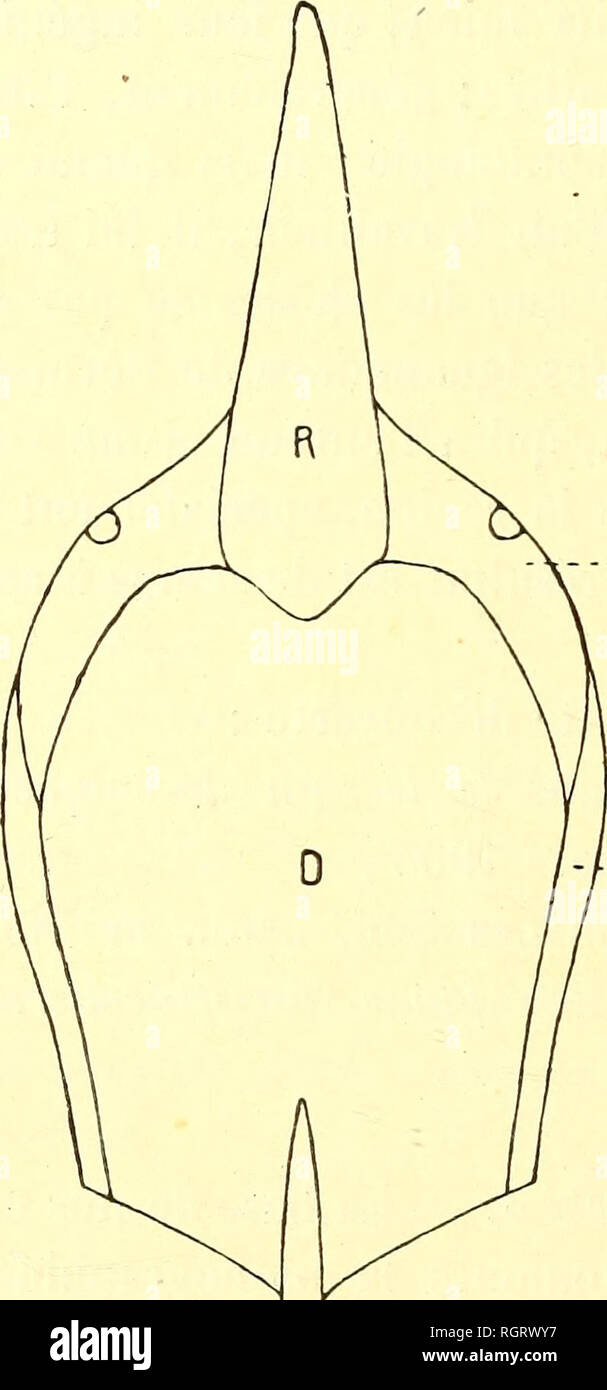 . Bulletin de la Société belge de géologie, de paléontologie et d'hydrologie. Geology; Paleontology. Fig. 1. â Pteraspis Crouchi, réduit presque de moitié; restauration Leriche, 1903. 15. â Utilisation morphologique des dessins superficiels. â L'élément essen- tiel de la carapace est le tubercule der- mique calcifié. Chez Lanarkia, il est constitué uniquement par une épine saillante. Les Coelolépidés y ont ajouté une partie basilaire; dans les deux groupes, ces éléments restent distincts. Chez les Ptéraspidés, ils ont conflué en lignes et en grandes plaques par leur partie b Stock Photohttps://www.alamy.com/image-license-details/?v=1https://www.alamy.com/bulletin-de-la-socit-belge-de-gologie-de-palontologie-et-dhydrologie-geology-paleontology-fig-1-pteraspis-crouchi-rduit-presque-de-moiti-restauration-leriche-1903-15-utilisation-morphologique-des-dessins-superficiels-llment-essen-tiel-de-la-carapace-est-le-tubercule-der-mique-calcifi-chez-lanarkia-il-est-constitu-uniquement-par-une-pine-saillante-les-coelolpids-y-ont-ajout-une-partie-basilaire-dans-les-deux-groupes-ces-lments-restent-distincts-chez-les-ptraspids-ils-ont-conflu-en-lignes-et-en-grandes-plaques-par-leur-partie-b-image234094539.html
. Bulletin de la Société belge de géologie, de paléontologie et d'hydrologie. Geology; Paleontology. Fig. 1. â Pteraspis Crouchi, réduit presque de moitié; restauration Leriche, 1903. 15. â Utilisation morphologique des dessins superficiels. â L'élément essen- tiel de la carapace est le tubercule der- mique calcifié. Chez Lanarkia, il est constitué uniquement par une épine saillante. Les Coelolépidés y ont ajouté une partie basilaire; dans les deux groupes, ces éléments restent distincts. Chez les Ptéraspidés, ils ont conflué en lignes et en grandes plaques par leur partie b Stock Photohttps://www.alamy.com/image-license-details/?v=1https://www.alamy.com/bulletin-de-la-socit-belge-de-gologie-de-palontologie-et-dhydrologie-geology-paleontology-fig-1-pteraspis-crouchi-rduit-presque-de-moiti-restauration-leriche-1903-15-utilisation-morphologique-des-dessins-superficiels-llment-essen-tiel-de-la-carapace-est-le-tubercule-der-mique-calcifi-chez-lanarkia-il-est-constitu-uniquement-par-une-pine-saillante-les-coelolpids-y-ont-ajout-une-partie-basilaire-dans-les-deux-groupes-ces-lments-restent-distincts-chez-les-ptraspids-ils-ont-conflu-en-lignes-et-en-grandes-plaques-par-leur-partie-b-image234094539.htmlRMRGRWY7–. Bulletin de la Société belge de géologie, de paléontologie et d'hydrologie. Geology; Paleontology. Fig. 1. â Pteraspis Crouchi, réduit presque de moitié; restauration Leriche, 1903. 15. â Utilisation morphologique des dessins superficiels. â L'élément essen- tiel de la carapace est le tubercule der- mique calcifié. Chez Lanarkia, il est constitué uniquement par une épine saillante. Les Coelolépidés y ont ajouté une partie basilaire; dans les deux groupes, ces éléments restent distincts. Chez les Ptéraspidés, ils ont conflué en lignes et en grandes plaques par leur partie b
 . Bulletin de la Société belge de géologie, de paléontologie et d'hydrologie. Geology; Paleontology. V C Fig. 2. â Pteraspis rostrala vu de profil et du côté gauche ; ENVIRON UN TIERS DE GRANDEUR NATURELLE.. pièce rostrale; O orbite; D bouclier dorsal avec S épine; V bouclier ventral; C pièce latérale ou cornue avec B ouverture par laquelle sort l'eau ayant servi à la respiration. Sur la ligne médiane entre les deux pièces orbitaires, derrière le rostre et devant le bouclier dorsal, une ouverture (Åil pinéal?). Dans la vue de profil, derrière la région des boucliers, quelques r Stock Photohttps://www.alamy.com/image-license-details/?v=1https://www.alamy.com/bulletin-de-la-socit-belge-de-gologie-de-palontologie-et-dhydrologie-geology-paleontology-v-c-fig-2-pteraspis-rostrala-vu-de-profil-et-du-ct-gauche-environ-un-tiers-de-grandeur-naturelle-pice-rostrale-o-orbite-d-bouclier-dorsal-avec-s-pine-v-bouclier-ventral-c-pice-latrale-ou-cornue-avec-b-ouverture-par-laquelle-sort-leau-ayant-servi-la-respiration-sur-la-ligne-mdiane-entre-les-deux-pices-orbitaires-derrire-le-rostre-et-devant-le-bouclier-dorsal-une-ouverture-il-pinal-dans-la-vue-de-profil-derrire-la-rgion-des-boucliers-quelques-r-image234079104.html
. Bulletin de la Société belge de géologie, de paléontologie et d'hydrologie. Geology; Paleontology. V C Fig. 2. â Pteraspis rostrala vu de profil et du côté gauche ; ENVIRON UN TIERS DE GRANDEUR NATURELLE.. pièce rostrale; O orbite; D bouclier dorsal avec S épine; V bouclier ventral; C pièce latérale ou cornue avec B ouverture par laquelle sort l'eau ayant servi à la respiration. Sur la ligne médiane entre les deux pièces orbitaires, derrière le rostre et devant le bouclier dorsal, une ouverture (Åil pinéal?). Dans la vue de profil, derrière la région des boucliers, quelques r Stock Photohttps://www.alamy.com/image-license-details/?v=1https://www.alamy.com/bulletin-de-la-socit-belge-de-gologie-de-palontologie-et-dhydrologie-geology-paleontology-v-c-fig-2-pteraspis-rostrala-vu-de-profil-et-du-ct-gauche-environ-un-tiers-de-grandeur-naturelle-pice-rostrale-o-orbite-d-bouclier-dorsal-avec-s-pine-v-bouclier-ventral-c-pice-latrale-ou-cornue-avec-b-ouverture-par-laquelle-sort-leau-ayant-servi-la-respiration-sur-la-ligne-mdiane-entre-les-deux-pices-orbitaires-derrire-le-rostre-et-devant-le-bouclier-dorsal-une-ouverture-il-pinal-dans-la-vue-de-profil-derrire-la-rgion-des-boucliers-quelques-r-image234079104.htmlRMRGR680–. Bulletin de la Société belge de géologie, de paléontologie et d'hydrologie. Geology; Paleontology. V C Fig. 2. â Pteraspis rostrala vu de profil et du côté gauche ; ENVIRON UN TIERS DE GRANDEUR NATURELLE.. pièce rostrale; O orbite; D bouclier dorsal avec S épine; V bouclier ventral; C pièce latérale ou cornue avec B ouverture par laquelle sort l'eau ayant servi à la respiration. Sur la ligne médiane entre les deux pièces orbitaires, derrière le rostre et devant le bouclier dorsal, une ouverture (Åil pinéal?). Dans la vue de profil, derrière la région des boucliers, quelques r